opportunities in EU generics market INTERVIEW
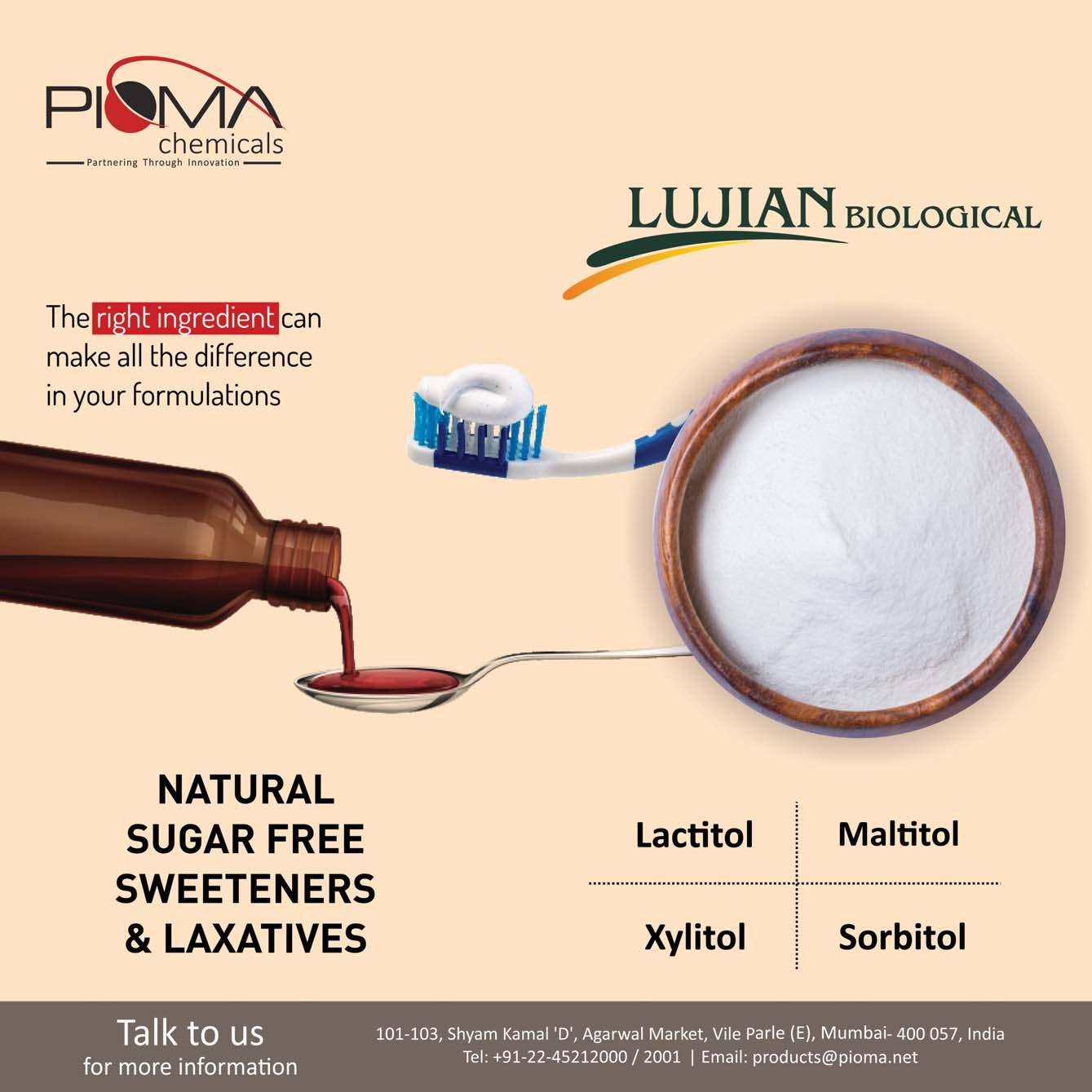
Aditya Sharma Head – Bioprocessing, MerckLife Science India
OCTOBER 2022,` 40
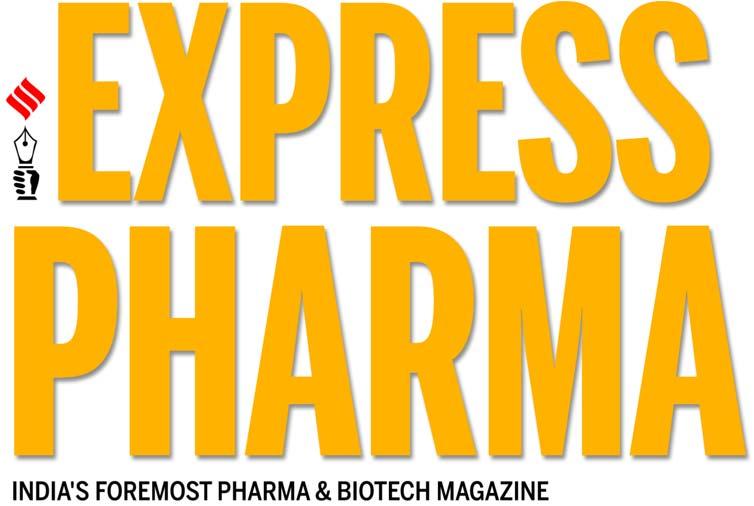
VOL.17 NO.11 PAGES 84 www.expresspharma.in
MARKET Emerging

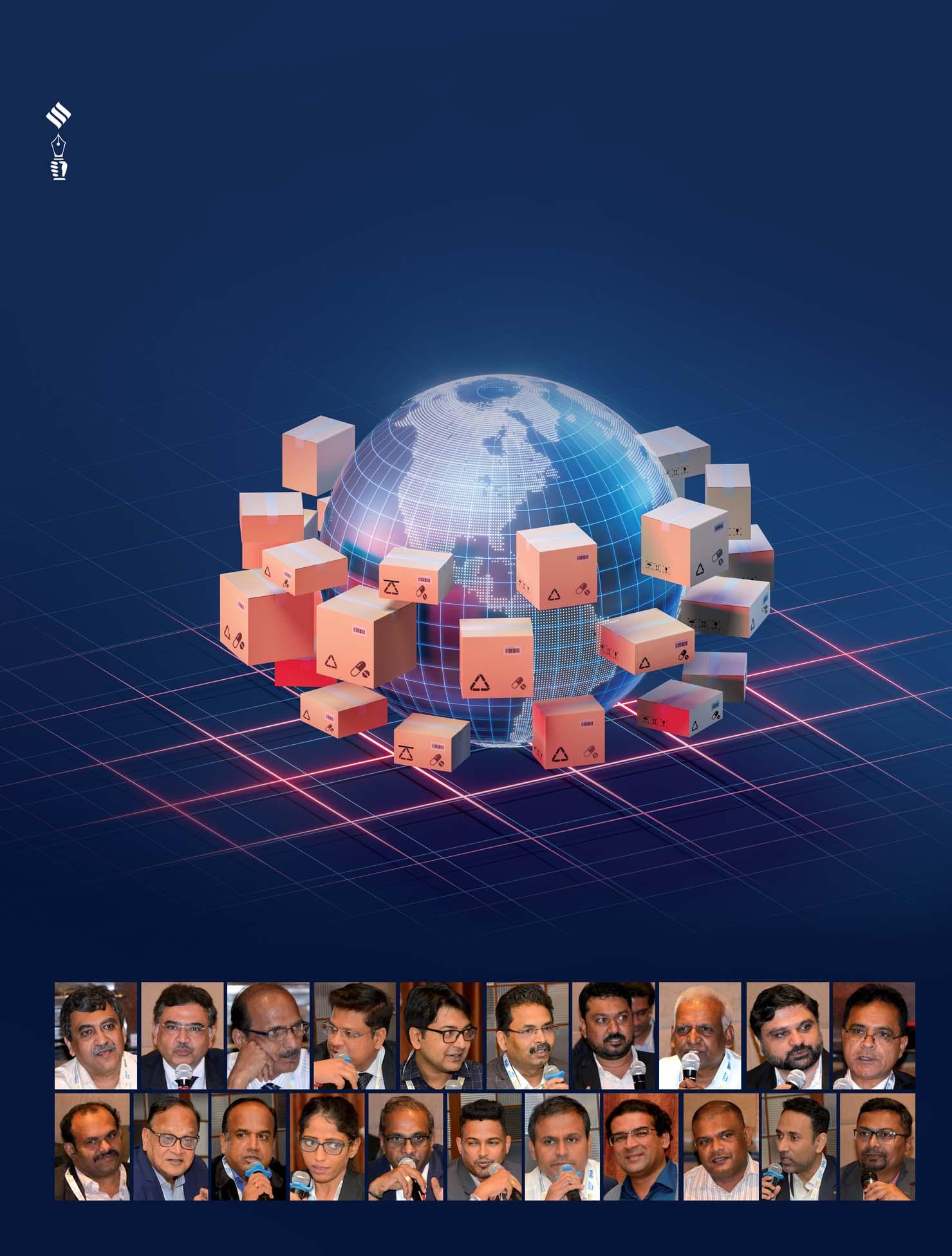








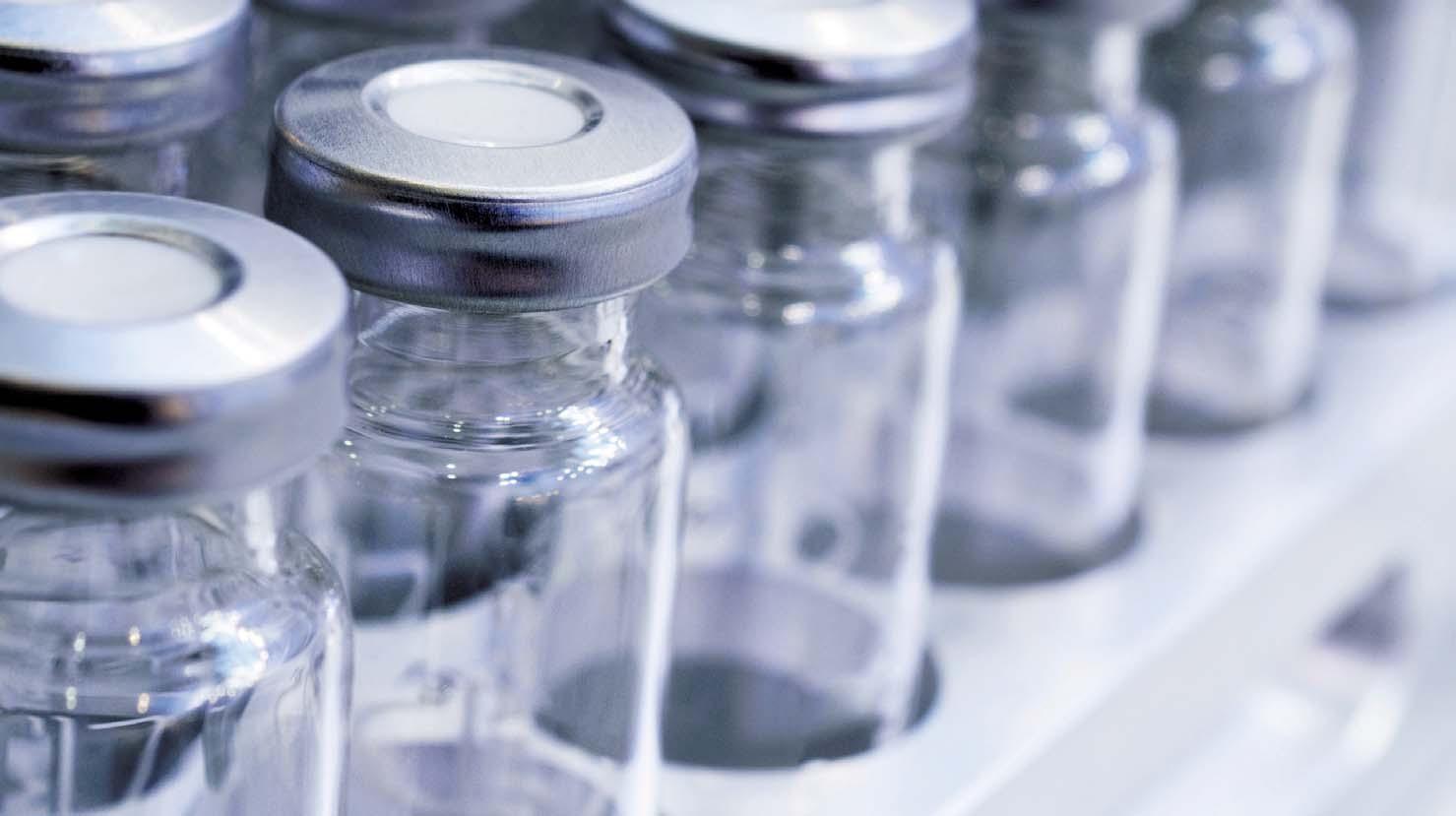
NIPROPHARMAPACKAGINGINTERNATIONAL Blokhuisstraat42,2800Mechelen,Belgium | pharmapackaging@nipro-group.com | www.nipro-group.com EVERYDROPCOUNTS! Furtherminimizeinteractionsbetweenglasssurfaceanddrugproduct • Lessadhesionofhighviscositydrugproductstotheinnersurfaceofthevial • Higherrestitutionrates • Lessresidualdrugvolume SiliconizedVials

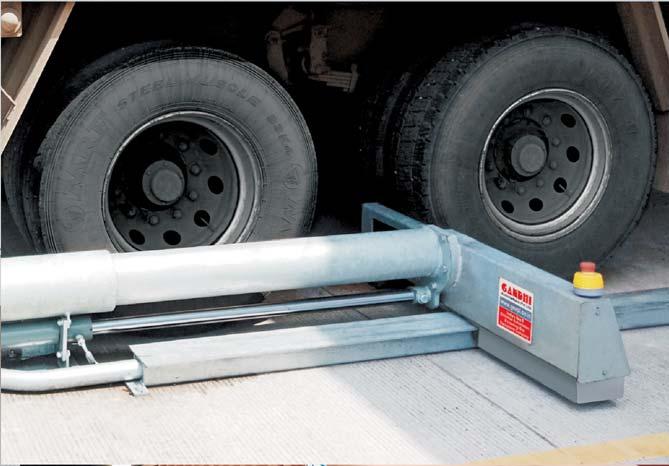


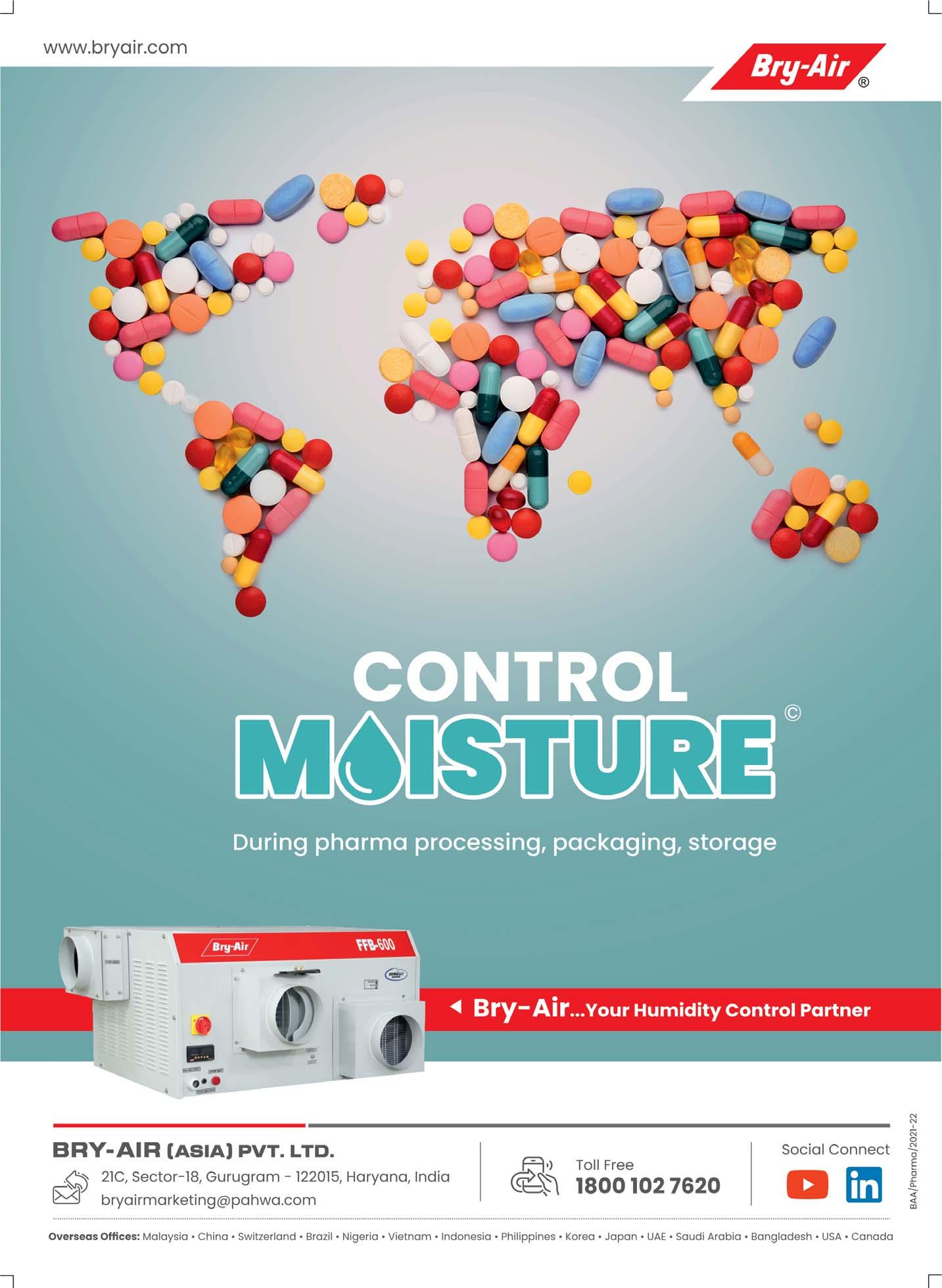
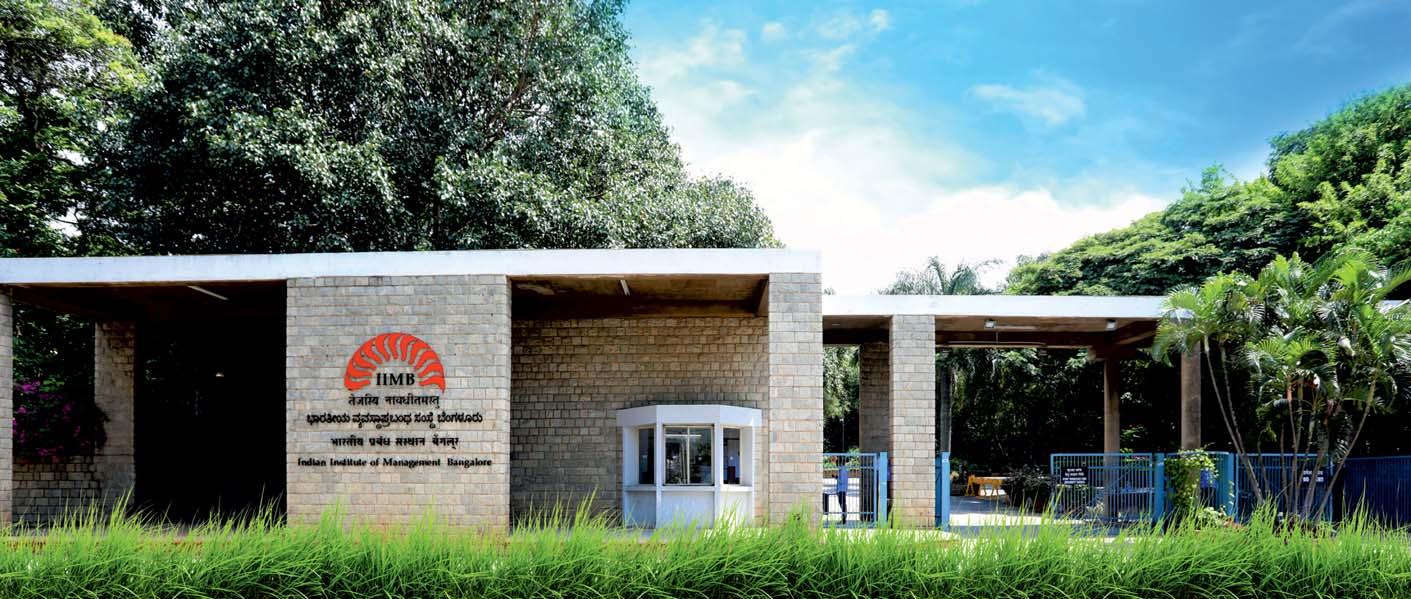


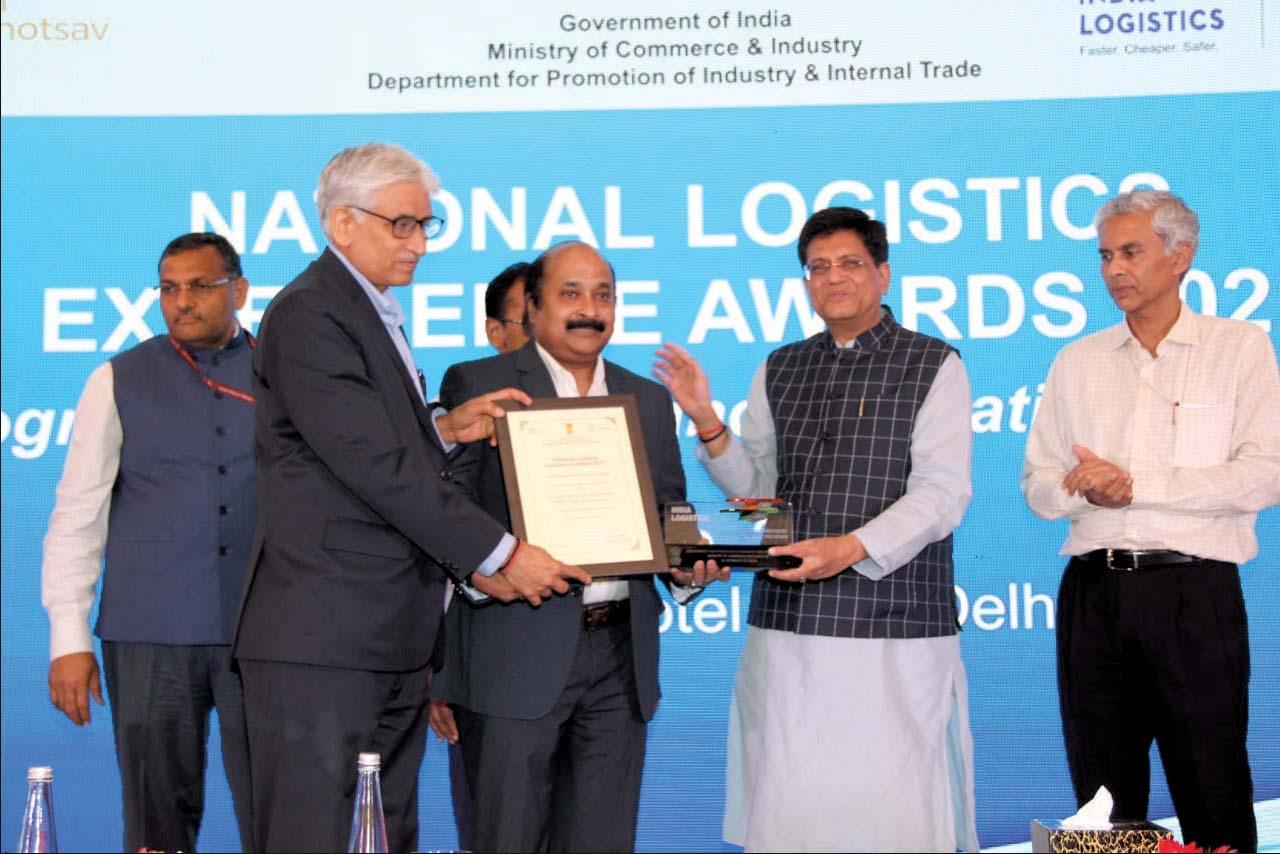
Winnersof1st NationalLogistics ExcellenceAwards BUILTTO LAST. DELIVER. ThankYouCustomers! BestWarehouse ServiceProvider BestColdChain/ Refrigerated ServiceProvider ShriPiyushGoyalJi,Hon’bleMinisterofCommerce&IndustryhandedovertheawardstoTCI Everything Logistics
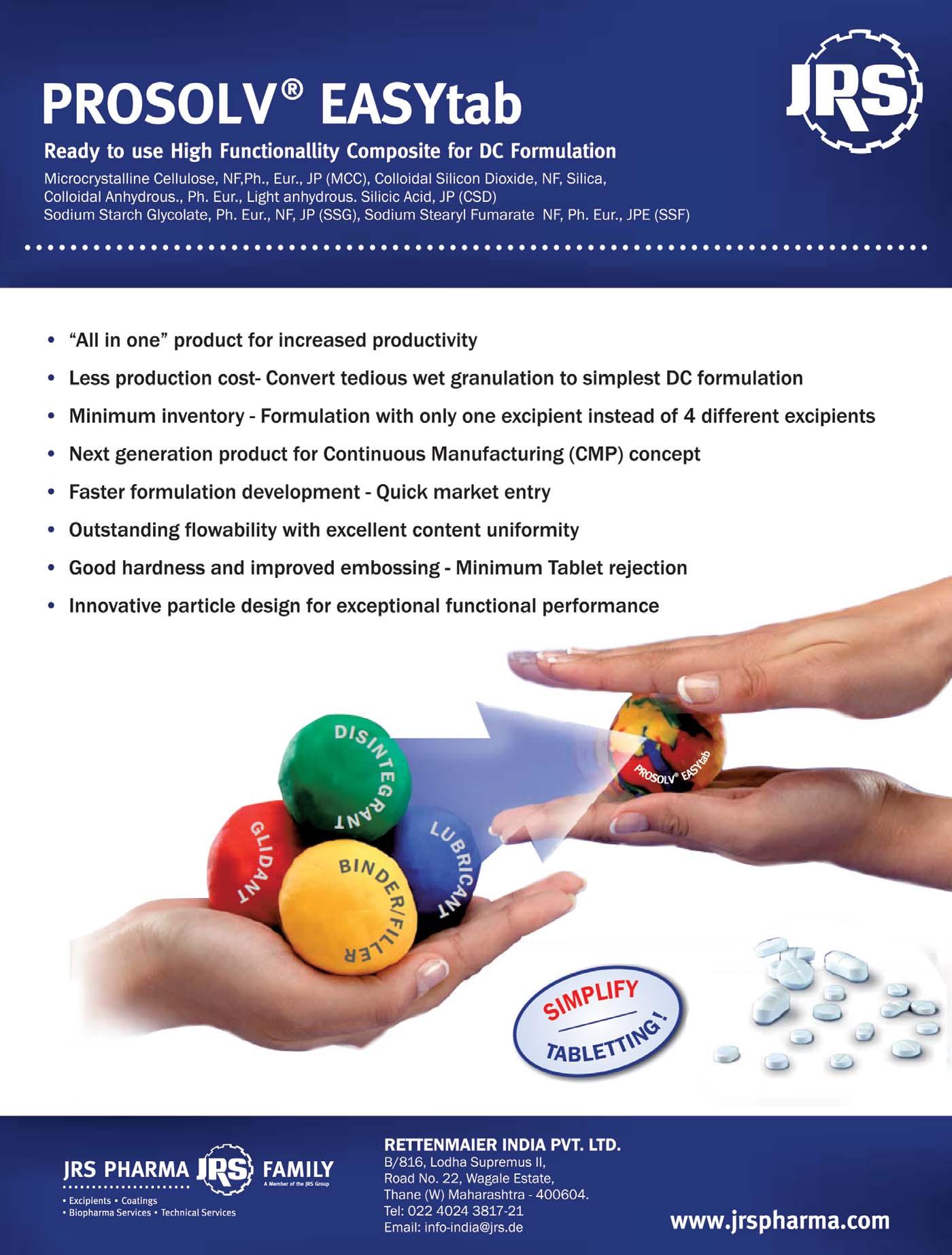
Chairman of the Board
ViveckGoenka
Sr.Vice President-BPD Neil Viegas
Asst.Vice President-BPD Harit Mohanty
Editor
Viveka Roychowdhury*
BUREAUS Mumbai Lakshmipriya Nair,Kalyani Sharma
Delhi Akanki Sharma
DESIGN
Art Director Pravin Temble
Senior Designer Rekha Bisht
Senior Artist Rakesh Sharma

Digital Team Viraj Mehta (Head of Internet)
Marketing Team
Rajesh Bhatkal Ambuj Kumar Ashish Rampure Debnarayan Dutta
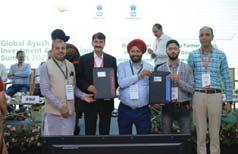
Production Co-ordinator DhananjayNidre
Scheduling & Coordination
Pushkar Waralikar
CIRCULATION
Mohan Varadkar

CONTENTS
Aditya Sharma Head – Bioprocessing, Merck Life Science India

STRATEGY
Express Pharma®
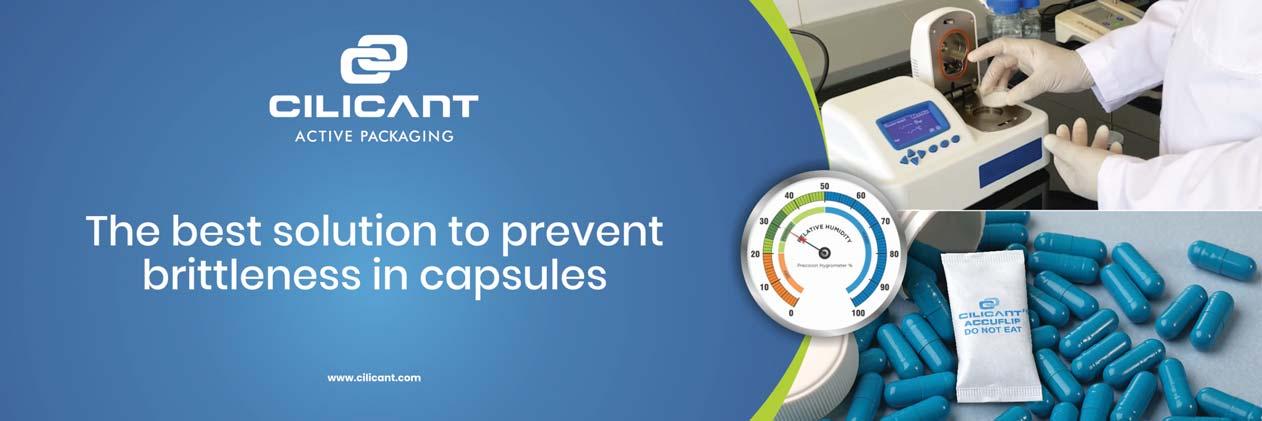
Regd.With RNI No.MAHENG/2005/21398.Postal Regd.No.MCS/164/2022 - 24.Printed and Published byVaidehi Thakar on behalf of The Indian Express (P) Limited and
The Indian Express Press,Plot No.EL-208,TTC Industrial Area,Mahape,Navi Mumbai-400710 and Published at Mafatlal Centre,7th floor,Ramnath Goenka Marg,Nariman Point,Mumbai 400021.
Editor: Viveka Roychowdhury.* (Editorial & Administrative Offices: Mafatlal Centre,7th floor,Ramnath Goenka Marg,Nariman Point,Mumbai 400021)
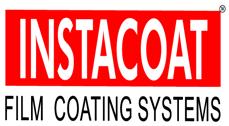
October 2022 EXPRESS PHARMA 11
Printed at
* Responsible for selection of news under the PRB Act.Copyright © 2017.The Indian Express (P) Ltd.All rights reserved throughout the world. Reproduction in anymanner,electronic or otherwise,in whole or in part,without prior written permission is prohibited. MARKET 15 EMERGING OPPORTUNITIES IN EU GENERICS MARKET
33 THE CURIOUS CASE OFINDIA’S RISING TRADE DEFICITWITH CHINAIN PHARMACEUTICALS AYUSH 36 CONSERVATION OF ENDANGERED MEDICINAL SPECIES “PICRORHIZA KURROA” 34 NAVIGATING SECTION 194R WITH RESPECT TO PHARMA BUSINESS ORGANISATIONS AND WAY FORWARD TECHNOLOGY 38 CYBER INSURANCE – NEED OFTHE HOUR AMID RISING HACKS Merck's endeavour has been to expedite the journeyof the vaccine molecule with our technologies and expertise P32:INTERVIEW
API manufacturing finally getting the attention it deserves
Arecent
report from Candle Partners forecasts interesting trends for India's pharma sector. While investors seemed to be gung ho about the sector's potential, given its central role as a saviour during the pandemic, the report suggests that the sector has been a laggard in terms of returns. The good news is that API manufacturing is finally getting the attention it deserves, from promoters, PE investors and policymakers.
The report quotes data showing that over the last 12 months, the Indian pharma industry has been a substantial under-performer with a majority of the stocks giving double-digit negative returns while the overall market (BSE Sensex) delivered a +9 per cent return. While large caps have given a –ve 7 per cent median return, mid-caps have given a –ve 20 per cent median return. While the API segment did well in the 2019-2021 phase, the segment has given a –ve 24 per cent median return in the last 12 months.
An evaluation of a decade of historical data on the sector, segregated into formulations generics and APIs suggests where the industry could be headed. A low sales growth rate over the last five years, with reported revenue growth of 7 per cent, mostly due to flat growth in the US market, is probably the single largest reason for these low returns. The silver lining is that sales from India and ROW have made up for some of this lag, with the growth of ~10-12 per cent.
However, EBITDA margins dipped 8 per cent from 28 per cent in 2014 to an average of 20-21 per cent, but only after substantial cost rationalisation and cuts in R&D spends. Of course, R&D cuts are not good news at all. From 9 per cent in FY 16/FY 17 to the current 5-6 per cent levels, we could be reversing years of gains and future profits from R&D assets to survive in the near term.
But while formulation generics flounders a bit, the data shows that the Indian API Industry has done better, with a five-year revenue CAGR of 15 per cent, and EBITDA margins consistently in the 24-28 per cent bracket.
However, both formulation generics and APIs have higher than desired working capital cycles. While formulations are at 173 days, APIs at 151 days are also on the high side.
Given these trends, the Candle Partners report prognosis for FY 2023 – FY 2024 is that that will be a substantial refocus on the India growth story by most large companies in this period. This is already happening with a surge in domestic formulations M&A over the last nine months. The report points out that deals worth ~Rs 4,000 crore have been executed, with media reports of possible deals worth another Rs 6,000-
While formulation generics flounders a bit, the data shows that the Indian API industry has done better,with a five-year revenue CAGR of 15 per cent,and EBITDAmargins consistently in the 24-28 per cent bracket
7,000 crores in the pipeline. With integration, we will hopefully see better EBITDA margins in the domestic businesses.
With the US business losing its sheen, even for market leaders like Dr Reddy’s Laboratories and Lupin, mid-sized Indian companies have become wary of making fresh Capex investments in regulated markets like the US, preferring to invest in other geographies.
On the other hand, there have been Capex investments in captive API manufacturing, bolstered by the China+1 strategy. Some companies have created separate companies/subsidiaries headed by professional management, a clear sign of the promise they see in APIs as a separate strong revenue stream. There is massive consolidation in the API space as well, with some players pursuing an aggressive inorganic growth strategy, creating API platforms with huge volumes to serve global clients. This is the best bet for India to play a major role in the China+1 move, supported by the PLI schemes.
The other interesting trend that the Candle Partners report highlights is the increasing interest and role of private equity (PE) capital in India’s pharma sector. The JB Chemicals-KKR deal could emerge as the template for mid-sized promoter-owned Indian pharma companies to ensure their legacy expands to the next level. PE funding comes with the management bandwidth to make the shift from volumes to value, a transition that could be painful and needs to be done right the first time. While financial gains should pick up, the migration of mid-sized players to the next level is important to ensure pharma entrepreneurship in the sector thrives.
Policy interventions also play a major role in ensuring pharma promoters continue to stay invested. The recently updated National List of Essential Medicines (NLEM) is being seen as more balanced than previous updates, as the Government did discuss this with the industry first. While the overall list has increased, some medicines have also been dropped from the NLEM.
But while balancing affordability with the profitability of the sector, the government will also need to ensure access to the right patients. Adding antiinfectives to the NLEM will reduce their price, but increased access could lead to overuse/misused, adding to India’s burden of anti-microbial resistance (AMR), which caused more deaths in 2019 than malaria and HIV.
VIVEKA ROYCHOWDHURY, Editor

viveka.r@expressindia.com
viveka.roy3@gmail.com
EXPRESS PHARMA October 2022 12 EDITOR’S NOTE
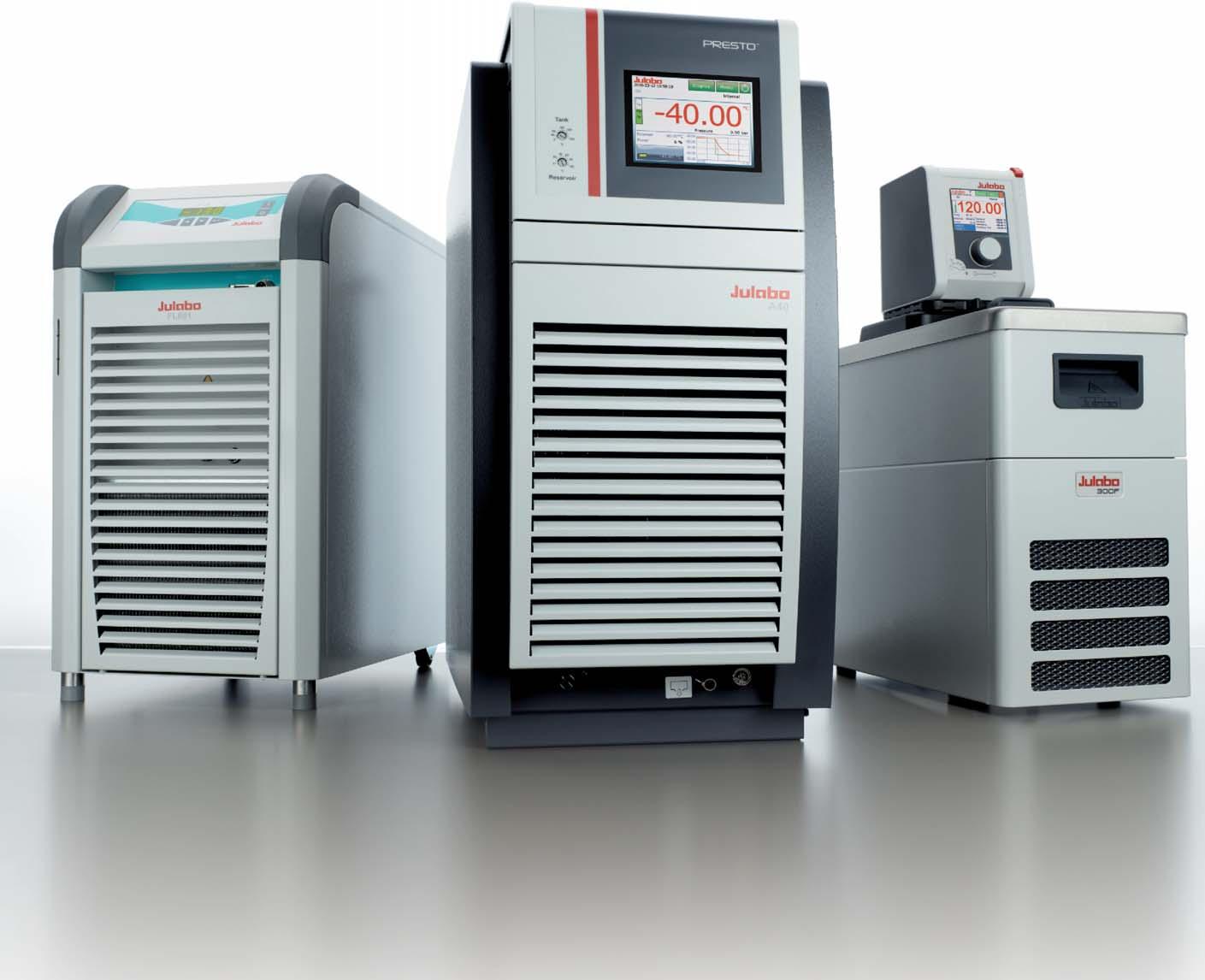



28thNovto01stDec2022 BoothNo:B18,Hall:15 IndiaExpoCentre,GreaterNoida info@srico-labworld.com|+919900674407 www.srico-labworld.com

Emerging opportunities in EU generics market

Major investment rebates and subsidies will be available under the European Union’s Pharmaceutical Strategy for Europe which will be unveiled in 2022.Indian companies must gear up for increased investment in the European Union (EU),and take a sizeable market share.
Suhayl Abidi, Research Adviser, GOG-AMACentre of International Trade,explains more
Former German Chancellor Angela Merkel and French President Emmanuel Macron – presented a jointly developed five-point “Health Strategy” on 18th May, 2020, a plan

MARKET
OPINION October 2022 EXPRESS PHARMA 15
MARKET
which aims to increase the European Union (EU) manufacturing share of pharma products and reduce its dependency on the import of formulations from India and API from China. Merkel and Macron’s initiative would show the way to bring the production of pharma ingredients back to Europe, reducing supply-chain challenges and drug shortage issues in the future.
The EU too is perfecting its pharma strategy, which will identify strategic dependencies and propose measures to reduce them. These may include broadening production and supply chains, managing strategic stockpiling and encouraging production and investment in Europe. There are many opportunities for Indian suppliers in the forthcoming pharma strategy.
As part of “The Pharmaceutical Strategy”, generic and biosimilar medicines provide a large number of patients with accessible and affordable treatments. Generics also allow pricing competition, and, thus, have a positive effect on the savings for respective health systems. The Commission is open to formulating policies that support higher competition in generic and biosimilar drugs. This could include appropriate market protection mechanisms, the removal of obstacles that delay their timely entry to market and increased uptake by health systems. The provisions for the conduct of trials on patented products to support generic and biosimilar products marketing authorisation applications (“Bolar” provisions) may be further clarified and simplified.
These policy interventions will be accompanied by enforcement of the EU competition rules. The Commission’s report on competition enforcement in the pharma sector has shown that originator companies sometimes implement strategies to hinder the entry or expansion of the more affordable medicines of their generic and biosimilar competitors and that such strategies may require competition law scrutiny. The
Commission will also continue to carefully review M&A of pharma companies to reduce competition.
Some initiatives resulting from “The Pharmaceutical Strategy”, a draft of which was published in 2020, with completion dates, are as follows:
◆ Proposal to revise the system of incentives and obligations in the pharma legislation taking into account the relationship with Intellectual Property (IP) rights, to support inn ovation, access and the affordability of medicines across the EU – 2022.
◆ Review the pharma legislation to address market competition considerations and thus improve access to generic and biosimilar medicines, including interchangeability and the ‘Bolar’ exemption – 2022.
◆ Initiate a pilot together with the EMA and member states, with the engagement of future marketing authorisation holders, to understand the root causes of deferred market launches – 2021.
◆ Encourage buyers from the health sector to cooperate in view of implementing innovative procurement approaches for the purchases of medicine or medical devices, in the framework of the Big Buyers initiative – 2021.
The complete text of “The Pharmaceutical Strategy” can be downloaded from: https://health.ec.europa.eu/sy stem/files/2021-02/pharmastrategy_report_en_0.pdf
Further, the strategy focuses on the affordability of drugs.
A mix of policy levers can support this goal, including ensuring value for money through health technology assessment; exploiting potential savings from generics and biosimilars; encouraging responsible prescribing; and improving patient adherence.
Certain conditions such as newly launched niche products for a small number of patients or the absence of automatic substitution rules for biologicals, can create market barriers. This means that competing generics, biosimi-
lars and ‘older’ products may find it hard to enter or stay in the market. This lack of competition, thus, inhibits price savings once innovative products lose their market exclusivities. Rules that do not directly regulate prices or reimbursement levels may nevertheless have a bearing on the affordability and costeffectiveness of medicines through indirect effects on the contestability of markets or the economic viability of products in more mature markets.
The Commission will take this into account in the review of the pharma legislation, to see how sound competition can best be fostered, leading to downward effect on prices of medicines. It will also continue to work, including through the exchange of the best practices, on the uptake of biosimilars, in order to stimulate competition.
Some initiatives on the accessibility and affordability of drugs are as follows:
◆ Proposal to revise the pharma legislation addressing aspects that impede the competitive functioning of the markets and to take account of market effects impacting on affordability – 2022.
◆ Develop cooperation in a group of competent authorities, based on mutual learning and the best-practice exchange on pricing, payment and procurement policies, to improve the affordability and cost-effectiveness of medicines and health system’s sustainability, including on cancer treatment – 2021-2024.
Judging from the recommendations put forward by the European associations representing drug and pharma chemical firms, the Commission’s approach will differ significantly from the track taken by the outgoing Trump administration.
Rather than spending millions of euros launching made-inEurope ventures, the EC will likely leverage a sizeable established manufacturing base. Likewise, industry guidance for Europe’s plan places greater emphasis on making its supply chain more secure rather than less global, while
maintaining and expanding the region’s manufacturing footprint.
Adrian van den Hoven, General Director, Medicines for Europe, an association of generic-drug and API makers, recommended that proposals to the EC include a change to generic drug pricing, which individual countries currently set at the lowest possible levels to reduce the cost of subsidised healthcare. The association proposes a scheme that would allow prices to be negotiated from the bottom up based on a supplier’s cost of goods, regulatory costs and other considerations.
For hospital and retail purchases, van der Hoven says Medicines for Europe favours “multi-winner tenders,” in which buyers are required to purchase from several suppliers as opposed to awarding contracts to the lowest bidder, a practice that has fuelled consolidation among drug suppliers.
Medicines for Europe also advocates global coordination of drug supply as opposed to rampant reshoring. “It is important that we maintain critical technologies in Europe,” van den Hoven says. “That said, we don’t believe we can or should produce everything in Europe.” No decision has been taken by the EU as yet.
However, Europe’s overreaching regulation for the manufacturing and distribution of chemicals may come in the way of large-scale reshoring of APIs.
Pharma chemistry presents a significant hurdle given that many of the reactions involved have disappeared from Europe in the wake of the region’s Registration, Evaluation, Authorisation and Restriction of Chemicals (REACH) legislation and other environmental tightening over the past two decades. For example, REACH required expensive environmental controls on reactions such as nitration, fluorination and bromination, which are critical to make certain drug ingredients. REACH created an incentive for production of these chemicals to move to
other places, especially Asia, but that doesn’t mean they cannot be manufactured again in Europe.
This will create a technological space for green chemistry as well as Continuous Processing Technology and the EU may provide funds for it. Already, Graz University’s Center for Continuous Flow Synthesis and Processing (CC Flow) at its Research Center of Pharmaceutical Engineering is the centre of continuous technology development in Europe.
Some of these provisions may be favourable to India as it aims to simplify the regulatory process of registration of medicines and diversifying sources, both within Europe and outside Europe. The Indian stakeholders, that is the government, export promotion bodies and trade associations should keep a close on these developments as these are discussed within the EU bodies to be ready to take immediate remedial actions.
The government should also show a roadmap to European decision makers before they take a decision as to how India could be that diversified China+1 source. It is important not only to show the size and sophistication of our industry, especially API, but also the reliability of safe and consistent quality manufacturing. It is possible to get funding too for Indian industry to ramp up its API production from EU for China+1 strategy.
The commission is in the process of evaluating Directive 2001/83/EC on the Community Code Relating to Medicinal Products for Human Use and Regulation (EC) No 726/2004 Laying Down Community Procedures for the Authorisation and Supervision of Medicinal Products for Human and Veterinary Use. It is anticipated that a new regulation replacing these directives will be adopted in Q4 2022.
Source: https://op.europa.eu/en/ web/about-us/legal-notices/ publications-office-of-the-european-union-copyright
EXPRESS PHARMA October 2022 16


EXPRESS PHARMA October 2022 18 cover )
Procurement experts highlight how increasing the resilience and agility of supply chains,with technology as a pivot, is crucial for the pharma sector to move up the value chain




 By Viveka Roychowdhury
By Viveka Roychowdhury
October 2022 EXPRESS PHARMA 19
Almost three years after the COVID pandemic put the world into lock down, we are still not yet free of COVID-19. In fact, we now have steadily increasing cases of monkeypox, which was previously confined to endemic regions.
Are we better prepared for the next health threat? Have we plugged the gaps to respond faster? Let's not forget the many obstacles in this path.
For one, analysts point out that India Pharma Inc is still heavily dependent on imports for key raw materials. More than 70 per cent of its raw material requirements and in the case of certain drugs, more than 90 per cent are imported. Nearly 70 per cent of APIs are imported from China, and the cost has reportedly jumped by orders of magnitude, thanks to geo-political concerns. This has impacted the margins of pharma drugs.
While higher raw material, freight costs as well as pricing pressures in the US business due to high channel inventory will continue to drag overall performance for the pharma sector, how will the first two challenges hamper the development of medicines anddiagnostics for future health threats?
Corporate boardrooms have been in re-set mode to prepare themselves for this scenario, incorporating the hard lessons of the COVID pandemic into business-as-usual practices. This exercise has been enriched with direct feedback from cross-functional heads who were never part of boardroom discussions in the prepandemic era.
This is vital because some vital benchmarks have not yetand probably will not – revert back to pre pandemic times.
Express Pharma , as part of SAP India’s Industry Knowledge Exchange (IKEX) Series, in partnership with the Indian Pharmaceutical Alliance (IPA), has culled some of these insights over a series of interactions. In May, we met up with CFOs, IT heads and CRAMS leaders for an overview of how
Sudarshan Jain Secretary General,Indian Pharmaceutical Alliance (IPA)


While inventory used to be considered a cost,the pandemic proved that freight is the real higher cost.We decided to increase our inventory levels and ship more products by sea rather than air
Pratyush Kumar General Manager- Demand Planning & Logistics Excellence,Glenmark Pharma
It’s no longer about Business Process Re-engineering but Business Process Continuity,which is not just about putting in place alternate vendors.Especially as most pharma companies in India are now dealing with complex and niche generics, where not many alternative vendors may be available.Pharma companies therefore now need to see their vendors as long term collaborators,going beyond cooperation
Vickram Srivastava Head of Planning - Global Supply Chain,Sun Pharma
The US FDAapproves about 52 products a year.Thats one product a week.Demand always overshoots supply after approvals and that causes volatility in prices.Which is why procurement is the nerve centre that should be connected to all key departments.Sharing of information between all departments can make procurement practices smoother and avoid panic and chaos
Dr Aravind Badiger Technical Director,BDR Pharma
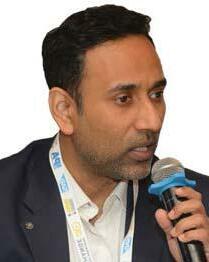

Learnings from pandemics should be recorded and leveraged to strengthen pandemic prevention,preparedness and response for the future.We have to learn from the pandemic and change our strategies as far as organisation dynamics and economics are concerned
EXPRESS PHARMA October 2022 20 cover )

collaborations and technology are driving business innovation in the lifesciences sector. (https://www.expresspharma.in/c ollaboration-tech-driving-business-innovation-in-life-sciencessector/)
And, in July, we got pharma procurement leaders, along with IT and operational leaders, to decipher their game plans on the procurement and SCM side. While the SAP team gave an overview of how pharma companies can transform their organisations into intelligent enterprise by achieving value with intelligent ERP systems, pharma leaders spoke of transformations within their organisations to cope with disruptions in the pharma supply chain.
Harking back to the total disruption of pharma procurement during the early stages of the pandemic, Sapna Sharma, Director, Procurement, Category Head for API, Excipients and Respiratory, Cipla, said creating alternatives for suppliers topped the list of her company’s learnings. “We have to be proactive, not reactive about creating alternatives for suppliers, especially those where we could predict we might have a problem. Cipla had started on this process a couple of years back. So, during the pandemic, we were able to move to alternative suppliers very fast as we already had them in place.”
This process actually started way back in 2008, when China shut down many chemical and API manufacturing units before the Beijing Olympics. That was the pharma, and other sectors, first warning of supply chain shocks due to heavy dependence on imports.
But, even though this might seem like a logical thing to do, there was a lot of push back within companies, because as Sharma pointed out, it is a laborious process. For instance, one API might go into multiple SKUs. Sharma says it took some time to create a mindset that alternative suppliers were necessary. Cipla also created a
The pandemic was the biggest opportunity for the ITdepartments of companies to emphasize the benefits of digitalisation.Companies are now more willing to spend on digital technologies
Swapnil Rajepawar


 IT& Digital Project,Procurement Head,ACG Worldwide
IT& Digital Project,Procurement Head,ACG Worldwide
Many strategic collaborations were forged during the pandemic with suppliers like Hikal.Everyone now realises that their suppliers have to be in their backyard.Or they have pushed their suppliers to move closer to them.
Sachin Ghosalkar
Sr.Vice President – Operations,Indoco Remedies
Its not that we weren’t thinking about procurement,alternate vendors etc before the pandemic.The pandemic forced us to think differently and out-of-the-box.It forced us to intensify our efforts to forecast better
Shrikant Gade VPSourcing and Procurement,FDC
We reduced our dependence on China and developed multiple alternate vendors from other countries and within India as well.We also diversified our product portfolio so that we were not dependent on any one product
Mahendra Maske
AGM,Demand & Supply Planning,Hikal

EXPRESS PHARMA October 2022 22 cover )
plan to shift not just to alternative vendors, but alternate sites of existing vendors. As part of this initiative, Cipla also started educating their vendors, so that they were in line with the company’s overall strategy.
Sharma also spoke about putting better inventory management systems into place at both Cipla and their vendors, by implementing supplier scorecards to identify their strategic partners. Cipla stopped spot buying, and put in place strategic partners for key inputs that led to better forecasting, negotiating better rates considering the volume consolidation.
Logistics lockdown
While procurement heads were setting right their house, their peers in logistics, the next step in the supply chain, found that there was no going back to prepandemic times. As Pratyush Kumar, General Manager, Demand Planning and Logistics Excellence, Glenmark Pharma, detailed, each shipping container, which used to cost $2500 pre-pandemic, today quotes at a whopping $12000.
There is no way pharma companies can add this cost increase to the price of the output goods (medicines), as the markets are extremely competitive and price-sensitive.

Glenmark used this opportunity to make transportation more cost effective through various measures. Giving a small example, he described how they reduced the huge difference between the gross weight and the volume weight in air freight as pallets were not being utilised optimally. When prices increased, Kumar recounted how even this small opportunity was used to put more packs per pallet.
A second major realisation was that while inventory used to be considered a cost, the pandemic proved that freight is the real higher cost. Glenmark decided to increase inventory levels in order to reduce air freight costs and ship more products by sea rather than air.
But shipping by sea came
LIMS and ELN
October 2022 EXPRESS PHARMA 23
www.labware.com ® LABWARE ®8 AutomateYourLaboratory withtheGlobalLeaderfor
with its own drawbacks. The US-India shipments, which used to take 22-25 days, were now taking up to 45 days. To cope with the decreasing reliability and visibility of sea freight, Glenmark installed IOT enabled data loggers in all consignments to get real-time visibility. This enabled the company to make decisions in real-time to reroute to the final destination to make up for some of the delays. Pratyush Kumar also explained how forecasting technology had helped them prepare better and save costs.
The newdefinition of BC-AD
In spite of these strategies, it’s a different reality today. As Vickram Srivastava, Head of Planning, Global Supply Chain, Sun Pharma, points out, “Disruption is part of the new normal and the new business paradigm. This is part of the new Gregorian calendar, Before Corona (BC) and AD (After Disease). And it’s not yet clear that we are in the AD phase as yet."
Srivastava points out that our dependence on imports from China has increased multi-folds over the last two decades and cannot be replaced easily. To his mind, the difference has come from a sustained effort by China’s policies to encourage the chemical/pharma sector.
Also, he mentions that the focus has to be to invest in new complex products and getting it right the first time in addition to de-risking the current supply chain for business continuity. Using digital technology to understand market trends and demand from the sales and marketing field force directly to the upstream vendor supply chain would be the real game changer.
Shortages of certain vital materials like filters persist even post the pandemic. So, it’s no longer about Business Process Re-engineering (BPR) but Business Continuity Plans (BCP), which is not just about putting in place alternate
As per a BCG report,companies which involve their Chief Procurement Officers in the strategic decision making process, have 130 per cent more growth.Technology platforms are helping supplier/vendors negotiate among themselves and come to clients with a final price,rather than clients negotiating with each vendor.Such sourcing strategies impact not just price but also the Total Cost of Ownership
PVRaju Sr Vice President-SCM,Biological E


The concern is about making a business case to sell digitisation within the organisation.
Venkat Srinivas CIO, RAChem Pharma


We used to take resources like nitrogen cylinders etc for granted. But during the pandemic,all gas storage cylinders were diverted to supplying oxygen to hospitals,leading to a shortage of nitrogen cylinders,which are central to production processes of many pharma products from filling injectables etc.Leveraging technology to anticipate unpredictable shortages,so that a plan B or C can be developed and deployed before a crisis,is the need of the industry
Atul Shastri President-Operations,Eugia Pharma
We were left with excess stocks of filters,but we could not pass them on to other companies who needed them. The lessons from the pandemic,like the formation of e-commerce platforms for finished goods,need to be taken forward
Vishnu Rayapeddi Head of Supply Chain Management, Indian Immunologicals Limited (IIL)
EXPRESS PHARMA October 2022 24 cover )
vendors, but about end-to-end mapping of value chain to ensure undisrupted supply of critical life-saving drugs. Especially as most pharma companies in India are now dealing with complex and niche generics, where not many alternative vendors may be available, which is why Srivastava feels that pharma companies need to see their vendors as long-term collaborators, going beyond cooperation.
Mindset change
The search for alternate vendors needed procurement and technical teams to work together as alternate vendors needed to be validated before being onboarded. And, in some cases, the lack of time forced companies to repurpose the existing stocks.
For instance, Dr Aravind Badiger, Technical Director, BDR Pharma, recalled how the increase in cases of the rare fungal infection, termed 'black fungus' called for huge quantities of liposomal Amphotericin B. However, shortages of filters and lipids was one of the reasons why initially production could not ramp up in time.
BDR Pharma probably had the largest batch size of 30,000 vials, but no filters. The company finally used filters that their QA team was using after due sterilisation and tests. They had to educate the procurement team to consider other alternative sources after scientific due process was followed, and then convinced them to use other products.
However, taking Srivastava’s point that procurement challenges extend beyond the pandemic, Dr Badiger points out that the US FDA approves about 52 products a year, approximately one product a week. He observes that demand always overshoots supply after generic approvals and that causes volatility in prices, which is why procurement is the nerve centre that should be connected to all key departments. Sharing of information among all departments can make procurement practices
smoother and avoid panic and chaos, pandemic or not, avers Dr Badiger.
China Plus One strategy
It is supply chain shocks like these that made API manufacturers like Hikal take proactive
measures to build a China Plus One strategy. For Mahendra Maske, AGM, Demand and Supply Planning, Hikal, this meant buying more and building up the inventory. "Safety stock norms, which were reviewed every quarter, were

now reviewed more frequently, based on market needs and demands. We reduced our dependence on China and developed multiple alternate vendors from other countries and within India as well. We also diversified our product
portfolio, so that we were not dependent on any one product."
October 2022 EXPRESS PHARMA 25 As Shrikant Gade, VP, Sourcing and Procurement, FDC, puts it, “It's not that we weren’t thinking about procurement, developing alternate

vendors, moving from manual to hybrid to digital systems, etc before the pandemic. The pandemic changed our approach and forced us to think differently and out-of-the-box. It forced us to intensify our efforts to forecast better. Though the government introduced the PLI scheme, implementation will take time. Everyone is in the same boat: we are dependent on China for 70-80 per cent of input materials, which is using high freight and material costs to arm twist us." He too agreed that these rates will remain 30-40 per cent higher than pre-pandemic times.
Sachin Ghosalkar, Sr Vice President, Operations, Indoco Remedies, re-emphasised the strategic collaborations that were forged during the pandemic with suppliers like Hikal. "Everyone now realises that their suppliers have to be in their backyard. Or they have pushed their suppliers to move closer to them." Escalations in freight rates is a post-pandemic phenomenon, according to him, with profit margins of logistics companies going from four-five per cent pre-pandemic to up to 20 per cent post-pandemic.
The case for digitisation?
Swapnil Rajepawar, IT & Digital Project, Procurement Head, ACG Worldwide, narrated how the pandemic was the biggest opportunity for the IT departments of companies to emphasise the benefits of digitalisation. He observes that companies are now more willing to spend on digital technologies.
While many pharma companies have gradually moved certain systems like artworks, invoicing etc to the digital medium even before the pandemic as part of the digitisation process, there are many speed-breakers to digital transformation.
For instance, Venkat Srinivas, CIO, RA, Chem Pharma, underlined the concern about making a business case to sell digitisation within his organisation. In a similar vein, Himal Desai, VP, Supply Chain,

We have to be proactive not reactive about creating alternatives for suppliers,especially those where we could predict we might have a problem.Cipla had started on this process a couple of years back so (during the pandemic) we were able to move to alternative suppliers very fast as we already had them in place
Sapna Sharma Director Procurement, Category head for API, Excipients and Respiratory, Cipla

Purchase heads became part of boardroom discussions during the pandemic.The thought process of most top management of pharma companies has changed during the last 2 and a half years
Dr Rami Reddy VP-Purchase, Hetero Labs

SCM heads are now part of boardroom meetings.Lead times have expanded from 1-3 months to 9-12 months.For example, filter manufactuers still have a lead time of one year for filters. Similarly,imported aluminium used in packaging material,has a lead time of 8-9 months minimum.Its the same case with rubber stoppers
Avinash Kumar Talwar VP- MRO & Pkg.Material Sourcing (Strategic & Plant), Global Supply Chain Management, Dr Reddy's Laboratories
The silver lining in the COVID cloud was that the SCM community came closer.Competitors shared best practices and even shared freight costs from China to India.The question is,how do we bring down dependency,and improve capability in India.
Chandan Shirbhayye AVP& Head of Supply Chain, Aragen Life Sciences

EXPRESS PHARMA October 2022 26 cover )
Virchow Biotech, expressed concerns on the varying quality of digitisation implementation partners. Secondly, there should be digital solutions for smaller companies as well. While he taught himself coding and developed solutions for his company's needs, all MSME companies might not have access to coding skills.


Newfaces in the pharma boardroom...
Once the hallowed space reserved for promoters and finance heads, pharma's top table expanded considerably during the pandemic. Dr Rami Reddy, VP, Purchase, Hetero Labs, recounts how purchase heads became part of boardroom discussions during the pandemic as the thought process of most top management of pharma companies changed during the last twoand-a-half years.
As he had straddled both IT and supply chain in his previous roles and in his current role in IT&IS, M Prabhakar Rao, AVP, IT&IS, Natco, pointed out that every node in the supply chain is very important and the pandemic bought supply chain and IT heads into the boardroom. Cost consciousness has crept into all functions. The result is that it's not just smart buyers, but all smart suppliers, where everyone does their homework and preparation before they come to the negotiation table during the procurement process, avers M Prabhakar Rao.
...bode well for pharma bottom line
The new faces in the pharma boardroom have already added value. PV Raju, Sr Vice President, SCM, Biological E, quotes from a BCG report, according to which, companies which involve their Chief Procurement Officers in the strategic decision making process, have 130 per cent more growth. He also stresses that decisions regarding purchase, sales, should be taken in consultation with procurement heads which will lead to huge savings.
October 2022 EXPRESS PHARMA 27
india@biotage.com
Jagannatha Reddy, Sr VP, Head, SCM, Viyash Life Sciences, too agreed that today, procurement leaders are no longer clerks. They are expected to know the chemistry, route of synthesis, etc as different categories have different challenges. They are more visible and are invited to boardroom meets as they are expected to add value to the discussions. They are given the prerequisite inputs and are free to come up with their own strategies, recounts Reddy.
Raju narrated how technology platforms are helping suppliers/vendors negotiate among themselves and come to clients with a final price, rather than pharma procurement teams negotiating with each vendor. Such sourcing strategies impact not just the price, but the total cost of ownership, according to Raju.
Bringing in new perspectives
Many industry experts point out that there is no going back to pre-COVID times. Avinash Kumar Talwar, VP, MRO and Packaging, Material Sourcing (Strategic and Plant), Global Supply Chain Management, Dr Reddy's, recounts how lead times have expanded from oneto-three months to nine-12 months. For example, filter manufacturers still have a lead time of one year for filters. Similarly, imported aluminium used in packaging material, has a lead time of eight-to-nine months minimum. It’s the same story with rubber stoppers.
Talwar believes that these challenges can be solved by thinking differently. Firstly, indigenisation will help reduce costs. For instance, having India-based makers of rubber stoppers and filters reduces costs by 30 to 40 per cent. Towards this end, he reveals that Dr Reddy’s has started handholding Indian partners, like investing in some API companies and backing packaging material makers.
Speaking about Dr Reddy's initiatives to improve ease of doing business, Talwar also
narrated how Dr Reddy's had built a digitally-enabled common platform for their partners called Vikreta Connect (i.e. Digital P2P – Procurement to Pay process). According to him, Dr Reddy’s became the pioneer pharma company to switch to paperless transactions through introduction of digital invoice processing. The introduction of “Digitally Signed Invoice Upload” helps the company to honour timely
There are concerns on the varying quality of digitisation implementation partners.Secondly,there should be digital solutions for smaller companies as well
Himal Desai VP- Supply Chain, Virchow Biotech
Today procurement leaders are no longer clerks.They are expected to know the chemistry,route of synthesis etc as different categories have different challenges.They are more visible and are invited to boardroom meets as they are expected to add value to the discussion.They are given the prerequisite inputs and are free to come up with their own strategies
Jagannatha Reddy Sr VP-Head SCM, Viyash Life Sciences


Every node in the supply chain is very important and the pandemic bought supply chain and ITheads into the boardroom.Cost consciousness has crept into all functions. The result is that it's not just smart buyers,but all smart suppliers,where everyone does their homework and preparation before they come to the negotiation table during the procurement process
M Prabhakar Rao AVP-IT&IS, Natco

payments and the introduction of “mobile app” will help business partners to view/ receive/acknowledge PO’s, check ASN status, payment status of all invoices on a realtime basis.
Agreeing with Talwar's suggestion for indigenisation, Atul Shastri, President, Operations, Eugia Pharma, points out that if India could master the art of making quality generic medicines, why can't we master the
art of making quality filters? Especially as rubber stoppers and filters are still in short supply.
Long-term contracts are also a good practice, says Talwar and suggests that the pharma sector should have an Amazon-like marketplace, where members get better prices and delivery on products ranging from APIs, packaging materials etc. Common vendor audits are also a good way to
share resources. Adding his perspective from the operations side, Shastri narrated how resources like nitrogen cylinders, etc which were always taken for granted, suddenly reduced drastically during the pandemic as all gas storage cylinders were diverted to supply oxygen to hospitals. The result was a shortage of nitrogen cylinders, which are central for the production processes of many
EXPRESS PHARMA October 2022 28 cover )
pharma products from filling injectables, etc. Similarly, isopropyl alcohol is generally abundantly available, but during the pandemic, all of it was diverted for making handsanitising solutions and it was in short supply for other uses.




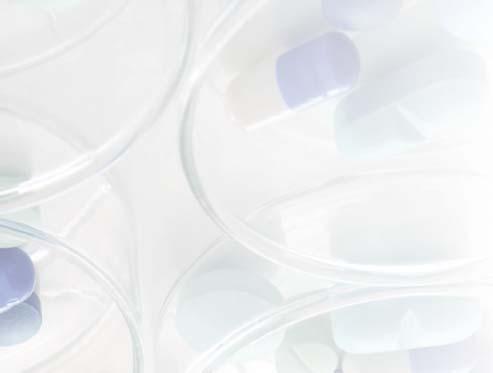

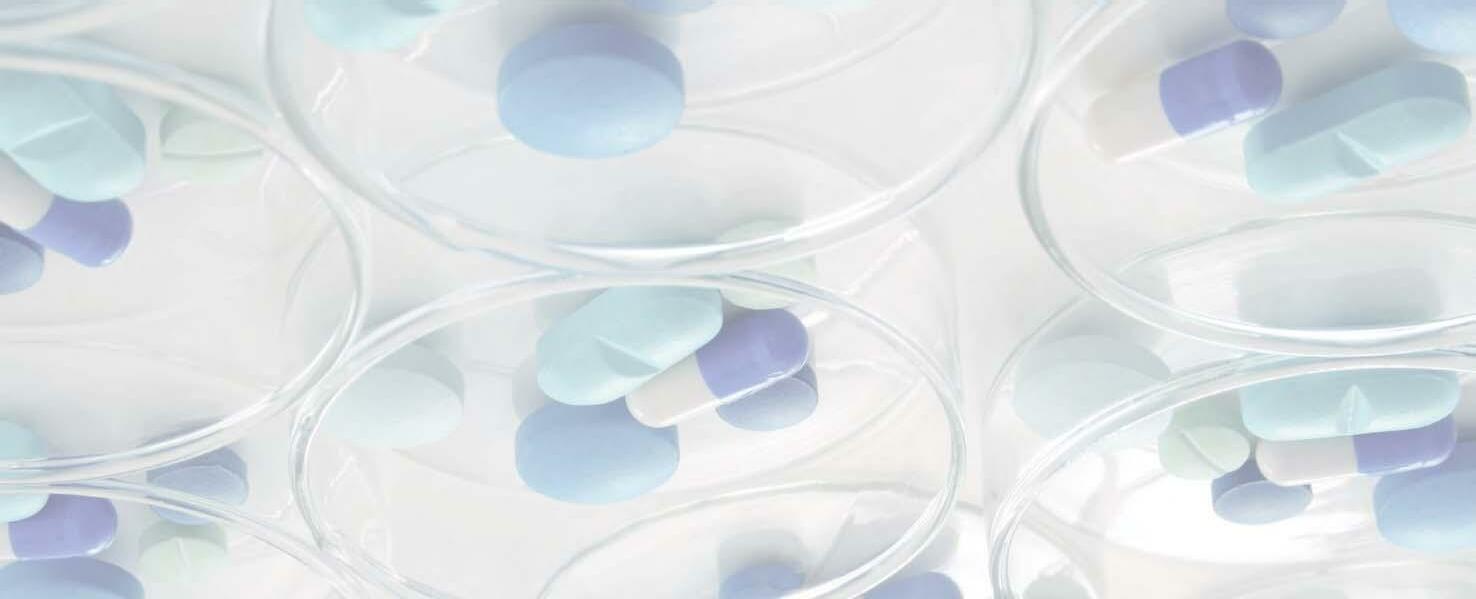
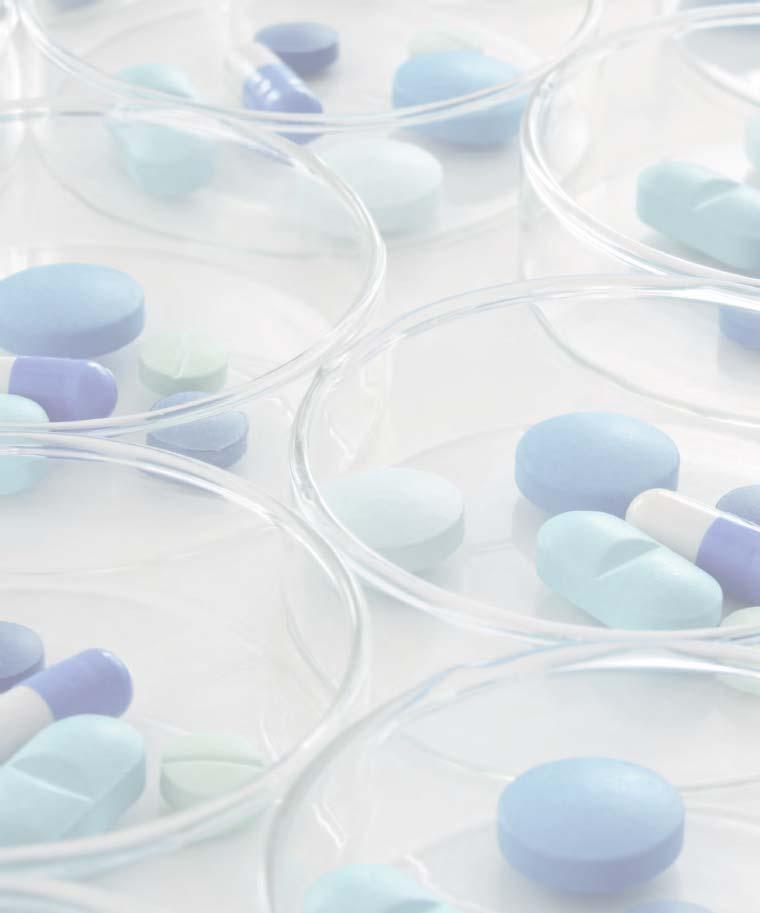
Shastri concludes, "Leveraging technology to anticipate unpredictable shortages, so that a plan B or C can be developed and deployed before a crisis, is the need of the industry."

Learning from other sectors

Drawing on his experience in the aviation defence and auto sectors, Reddy of Viyash Life Sciences spoke about the need for similar vendor development programmes in the pharma sector. 2022 has been a year of great disruption for pharma supply chains, with end-to-end visibility, which, according to him, has improved the credibility of supply chain professionals as well.
But Reddy cautioned that there are still challenges and gaps in the pharma supply chain, which benefit pharma giants. Therefore, he posits that making a supply chain as foolproof as possible, with all the uncertainties, calls for creativity from supply chain leaders.

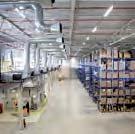
"Building a proactive supply chain is today’s need and challenge. Today, the challenge of SCM leaders is to balance their time and technology, to form a good strategy to bring success and value to the company. Past supply chain systems were more stable, but today’s supply chains are more dynamic for a variety of reasons. Today’s supply chain should be owned by stakeholders across the organisation, not just the supply chain leaders, so that it is not a blame game," says Reddy.
Vishnu Rayapeddi, Head, Supply Chain Management, Indian Immunologicals, spoke of how the pandemic proved that change is the only constant. Just as we got used to using masks, procurement teams now have weekly reviews.
He also spoke of the hard learnings of the pandemic. In-



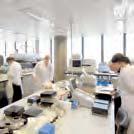





















October 2022 EXPRESS PHARMA 29
dian Immunologicals supplied the raw products for the Covaxin vaccine to Bharat Biotech in large quantities in a very short period of time. But, now, the company is left with huge stocks of consumables and some raw materials as demand dried up in March this year. "We were left with excess stocks of filters, but we could not pass them on to other companies who needed them. The lessons from the pandemic, like the formation of e-commerce platforms for finished goods, need to be taken forward."
In retrospective, Chandan Shirbhayye, AVP and Head, Supply Chain, Aragen Life Sciences, believes that the silver lining in the COVID cloud was that the SCM community came closer. "Competitors shared the best practices and even collaborated on various instances to mitigate the impacts of the pandemic. We are still dependent in a big way on imports, and the need is to bring down dependency, and improve capability in India."
While he highlighted that the SCM function is the data custodian of the organisation, he pointed out that there is an urgent need to create a solution for uniform material master data management which is the foundation to have effective technology implementation and data analytics. For instance, there are multiple technology solutions available, and there is a need for a solution to integrate and avoid creation of duplicate data. Avoiding duplicate Master Data creation is one basic requirement which needs immediate solution.
Shirbhayye also highlighted that India has huge potential in the pharma space, and the industry will have to take the lead and partner with the Government in ensuring that we convert this opportunity into economic growth. According to him, we need to continue to drive improvements in two areas which will help India to gain the logistics/supply chain leadership, globally.
Firstly, upgradation of infrastructure (power, logistics, con-
LEARNINGS
nectivity, etc), including digital infrastructure across India to have uniform growth opportunities. Encouraging faster logistics both inland and outbound is the need of the hour to make Indian industry competitive with global players. And, secondly, Shirbhayye opines that we need simplification, rationalisation and integration of compliances among various statutory and regulatory bodies of states and ministries using the digital platform for seamless and transparent execution. His rationale is that many procedures can be simplified by better coordination among various statutory bodies.
Sudarshan Jain, Secretary General, Indian Pharmaceutical Alliance (IPA), highlighted that adversity brings the best in any situation. The pandemic brought uncertainty on both the demand and supply sides, which had never happened before in the world. Pre-pandemic, pharma companies set their manufacturing schedules based on quarterly demand forecasts from the sales and marketing teams, based on market trends. But the pandemic changed all that as one never knew which way the virus was going.
He summarised five key learnings from the pandemic (see box) and also quoted from IIM Ahmedabad Professor Tambe’s book, Age of the Pandemic, which makes the point that while the world learns from war history, we don't learn from pandemics of the past. He highlighted that learn-
ings from pandemics should be recorded and leveraged to strengthen pandemic prevention, preparedness and response for the future. His strong advice is that we have to learn from the pandemic and change our strategies as far as organisation dynamics and economics are concerned.
Tech as a lever
Technology solutions do exist and many companies like SAP are collaborating with pharma companies to scale up faster by expanding their solution platforms and business network for collaboration between various stakeholders. The SAP team gave examples of how the SAP Business Network platform is helping buyers connect, collaborate and transact with suppliers in a transparent and efficient manner. The SAP Business Network has already clocked $189 billion worth of annual transactions for life sciences industry by connecting 169 customers in the industry with more than that 300000 life sciences suppliers. These members are exchanging 9.5Mn+ documents (PO and Invoices) on the Network.
They also pointed out that the push for digitisation has to come from the top management. Secondly, adaptability and simplification of the tools should be from bottom up. They believe that this will help the sector prepare for upcoming unexpected pandemics. SAP Business Network, formerly known to millions of companies around the world as
Ariba Network, makes it easy for buyers and suppliers to collaborate on transactions, strengthen their relationships, and discover new business opportunities. Buyers can automate the entire procurement process from source to settle, while controlling spending, finding new sources of savings, and building a healthy, ethical supply chain. In turn, suppliers can help buyers achieve their procurement transformation goals, collaborating in the cloud to boost customer satisfaction, simplify the sales cycle, and improve cash flow.
Policypush as a pivot
But even though many companies are already investing in such technologies, it will be a long an uphill task without the right policy push and a conducive ecosystem.
Industry leaders have concerns that with the slower than desired implementation of PLI schemes and other policy measures, pharma manufacturing in India might never be sustainable from a business ROI perspective. For instance, many companies investing in API manufacturing or fermentation plant infrastructure today under the PLI scheme might still find themselves undercut by and lagging Chinese products by the time their plants get into production mode.
The growing consensus is that policy makers should realise that the Indian pharma sector is one of the most competitive in the world. We have
passed the age of price control and now the focus should be on quality, research. And companies investing in manufacturing infrastructure should get assurances of guaranteed local demand, like the Chinese government promoted manufacturers with a guarantee of local demand. The expanding list of medicines under the NLEM is sure to cause more heart burn, but this too can be balanced better.
The code word is collaboration between competitors, in a model called co-opetition, which evolved during the pandemic. A classic example is the fact that a consortia of big Indian pharma companies have collaborated to invest in DigiHealth Technologies, with the common goal of creating an IT backbone for a digital pharma supply chain and distribution network.
IPA’s Jain clarified that derisking pharma procurement practices did not mean making everything in India, following the Atmanirbhartha policy. This might not be economically feasible. It was about having the most cost effective alternate suppliers for key products. So a supplier in Europe could be an alternative to China. Similarly on the fermentation front, China is the unsurpassed leader but that’s fine, because Indian pharma players will still find an alternative, till we have our own fermentation plants.
While these interactions show that most big pharma companies have taken the COVIDlessons to heart and are proactively planning for disruptions like scarcity of key ingredients, consumables, etc, this transition remains a work in progress. In the coming months, Express Pharma , in partnership with IPA and SAP, will continue to meet more leaders to reflect how companies are transforming into more resilient corporations and to ensure this transition percolates into all segments of the sector.
viveka.r@expressindia.com viveka.roy3@gmail.com
JAIN,SECRETARYGENERAL,IPA
EXPRESS PHARMA October 2022 30 cover )
FROM THE PANDEMIC: SUDARSHAN
Learning 1: The Standard Operating Process (SOP) has undergone a fundamental change in pharma companies.For instance,the business planning process has been compressed from quarterlyto monthlyor bi/monthlybasis demand forecasting. Learning 2: Building a networkof vendors and developing a strategic partnership is important. Learning 3: Digitisation will be fundamental as all information systems are connected.As the world and organisations are becoming boundaryless Learning 4: Collaboration is fundamental between government and industry; and various departments of the company. Learning 5: The Production Linked Incentive (PLI) schemes were announced to strengthen the competitive position of the industry.PLI 1.0 was aimed for building self-reliance and PLI 2.0 was to create global champions of the industry.The draft R&D policyand Research Linked Incentive (RLI) scheme will be important to move from volume to value leadership.
ADVERTORIAL
ProPharma Group: Delivering qualityservices throughout full product lifecycle
ProPharma Group is the leading global,independent,single-source provider of regulatory,clinical and compliance services serving pharma,biotech and medical devices companies
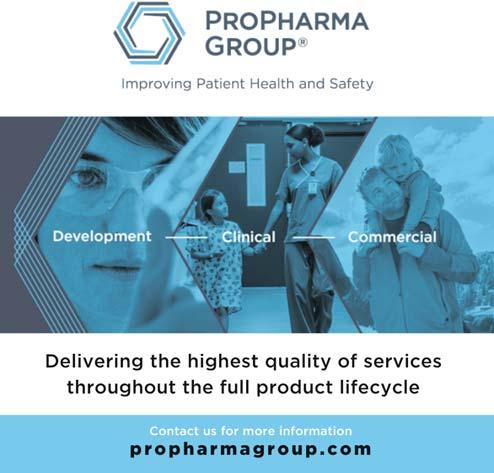
The Indian pharma industry is on its path of continuous growth and evolution. Today, India is the third largest global supplier of medicines by volume. It boasts more than 3,000 pharma organisations spread across close to 11,000 manufacturing units.
ProPharma Group is the leading global, independent, single-source provider of regulatory, clinical and compliance services serving pharma, biotech and medical devices companies. We have presence in six continents with more than 2,500 professionals providing the highest quality of services on a global scale supported by regional expertise. Our experts bring in a comprehensive portfolio of regulatory sciences, clinical research solutions, lifescience consulting, auditing, remediation services, R&D technology, pharmacovigilance and medical information services to help solve complex challenges in a dynamic regulatory environment. With our mission to improve the health and safety of patients, we are focussed on delivering the highest quality of services throughout the full product lifecycle.
ProPharma Group’s India business started with the acquisition of iSafety in 2021, one of the premier organisations in India providing pharmacovigilance services. In April 2022, ProPharma set up lifescience consulting in India to cater to the pharma and medical devices markets in India to offer their services.
Through lifescience consulting business in India, ProPharma Group offers a whole array of services including auditing, remediation, compliance to the EU and the US regulatory agencies, product and process lifecycle management, commissioning,
qualification and validation, regulatory strategy, compliance, technology transfer, etc. We have a dedicated team of experts in India with extensive experience in global markets backed up by our global team of consultants.
James Kolbet, President, Life Science Consulting (Global), ProPharma Group, feels that Indian market has a lot of opportunities. He says, “As our scope of services and capacity grows, we are able to
support our current and expanding client base with the critical services they need to achieve business goals. A vast number of global supply chains originate from India and we want to do our part to make them successful.”
Dr David Crome has spent over 20 years supporting many clients both in India and setting up their operations in Europe and the UK to be regulatorycompliant. Now, with the setting up of our lifesciences consulting
division based in Mumbai under Amol Yelgaonkar, Director, Life Science Consulting, India, who has worked in the Indian pharma industry for last 25 years on global markets, and our worldwide network of consultants to call upon, we are able to support clients to achieve the development, expansion and export strategies on time. We will be available for helping organisations expand their business in semi- and highlyregulated countries.
Dr David Crome, Managing Director, ProPharma Group, The UK and India says, “Our vision is to be with you throughout your business lifecycle, to support you through the inevitable challenges along the way, and be there to celebrate your achievements with you.”
Amol Yelgaonkar says, “ProPharma is here to serve pharmaceutical organisations who want to expand their businesses in the EU and the US and other regulated countries. With a collective experience and proven track record across the product lifecycle from R&D through to pharmacovigilance, we can cater to any of your requirements.”
About ProPharma Group
ProPharma Group is the industry leading global single sourced provider of scientific and technical services throughout the full product lifecycle, from development through to clinical and commercial production. We have 2500+ employees working with 1000+ clients in the pharmaceutical, biotechnology, medical device and diagnostics arenas. We work across six business divisions which are interlinked to support our clients throughout their product life cycle.
R&D Technology
Regulatory Sciences
Clinical Research Solutions
Life Science Consulting
Pharmacovigilance
Medical Information
ProPharma Group can support a wide range of clients covering the areas of KSM & API manufacturers, finished dosage forms, CROs, CMOs ATMP, gene therapy
biotechnology companies, conventional small molecule pharmaceuticals, medical device, diagnostics, etc.
ProPharma Group is a global organization with local on the ground teams that are there to support you whenever you need them. With a strong work force of 2500+ experts globally in almost every pharma market, we can cater to requirements right from research and development through to post commercial activities like Pharmacovigilance. ProPharma is a one-stop-solution for all your needs.
India is the largest global provider of generic drugs and ranks 3rd in terms of pharmaceutical production by volume and 13th by value. Their domestic pharmaceutical industry includes a network of 3,000 drug companies and 11,000 manufacturing units and they have the largest number of US FDA approved sites outside of the USA. Exports of pharmaceutical products were around US$25 billion last year with around 50% going to North America and Europe. With the announcement of Pharma Vision 2020 and the setting up of the Hyderabad Pharma City and Genome Valley Park projects which are anticipated to attract US$8.4 billion of investment and generate over half a million jobs in the longer term, ProPharma Group sees this as a great opportunity to support these new businesses in getting their new facilities commissioned and regulatory agency GMP inspection ready in a timely manner.
ProPharma Group’s India business started with the acquisition of iSafety in 2021, one of the premier organisations in India providing pharmacovigilance services.In April 2022,ProPharma set up lifescience consulting in India to cater to the pharma and medical devices markets in India to offer their services
October 2022 EXPRESS PHARMA 31
◆
◆
◆
◆
◆
◆
STRATEGY
Merck's endeavour has been to expedite the journeyof the vaccine molecule with our technologies and expertise
As we continue to track COVID variants and rising monkeypox cases, Aditya Sharma, Head – Bioprocessing,Merck Life Science India,explains to Viveka Roychowdhury how Merck’s Collaboration Labs in India and APAC helped vaccine makers ramp up in record time to meet emergency immunisation drives and continue to support the sector with investments spanning traditional and novel modalities like mAbs,ADCs,HP-APIs,viral vectors and mRNAvaccines
What were the choke points in the manufacturing process that vaccine makers in India had to overcome to scale up COVID-19 vaccine supplies?
India launched the largest vaccination drive at the start of 2021, with COVID at its peak. It was always going to be a difficult task, no matter how well-planned the campaign would have been. The logistics of dispensing vaccine to such a large population, at the earliest, keeping in mind the training of staff, with precautions at hand, was a herculean challenge. The choke points were at various levels.
Supply of required raw materials was a major challenge for vaccine manufacturing operations. Expected turn-around time was much lower than the production schedule. As a social responsibility, we had preferentially prioritised supplies to COVID vaccine manufacturers.
Rising to the occasion, the regulators also expedited the pathway of Emergency Use Authorisation (EUA), communicating with a large population and prioritising vulnerable and high-risk segments of the population, supply and safe preservation of vaccine, availability and accessibility of vaccines, and then, faced by a sudden shortfall. Now in hindsight, it may all seem objective on paper, but at that time, these were edging on emergency levels.
Every country had its own set of unique challenges pertaining to the vaccination drives. Roll-out challenges such as timely development of national vaccination plans, getting timely approvals on the vaccines, storing and availability of vaccines, training of staff, research efficacy and orientation of the masses to accept vaccines were some of the primary choke points that India, along with many other nations, had to overcome.
What were the measures taken to make the COVID19 vaccines affordable without compromising on quality and safety?
The vaccine manufacturers are well aware and best placed of the protocols to follow for the efficacy of COVID-19 vaccines. Further, the regulators have checks and balances in place to ensure quality and safety. At Merck, we collaborate with vaccine manufacturers to provide them with technologies and technical and regulatory consulting to maximise quality and safety.
What was the role of Merck’s Collaboration Labs in India and APAC to make this happen?

The biggest scientific breakthrough in the 21st century would probably have to be the development of the COVID vaccine. And yet, there were challenges because of the changing nature of the variants that
posed serious and unknown threats to the lives of people. The mutant variants and their high infectivity were throwing everyone off-guard.
Merck’s Collaboration Labs in India and APAC rose to the challenge and stepped up their capabilities to support vaccine manufacturers in various ways. Some of the ways that the organisation helped was by technical consultation for process developments, regulatory services for risk mitigation, patient safety and approvals, expanding our facilities and supplying in the midst of severe global disruption to facilitate the early launch of vaccines for immunisation.
We prioritised supplies to help vaccine manufacturers at any given point in time to provide timely aid to the populace. We are also strengthening our capacity
for developing and manufacturing vaccines and treatments based on messenger ribonucleic acid (mRNA) technology acquisitions.
What are the key technologies that lifescience companies will have to invest in to deliver the next round of vaccines, therapeutics and test kits as COVID-19 variants continue to threaten populations?
For COVID vaccines, under development protein sub unit, viral vector and nucleic acid-based vaccines are the top modalities being explored by companies, and molecules are at different stages of development.
Our endeavour at Merck has been to expedite the journey of the vaccine molecule with our technologies and expertise.
What are the technologies required to research and refine intra-nasal spray vaccines, mRNA vaccines and other such delivery platforms?
Over the past two years, Merck’s Life Science business sector has made significant investments to advance traditional and novel modalities –
Monoclonal Antibody (mAb), Antibody-Drug Conjugates (ADC), high-potency API (HP-API), viral vector and Messenger Ribonucleic acid (mRNA) through acquisitions, expansions and launch of new product
platforms/technologies.
Our recent acquisitions have enabled us to become one of the leading CMO players in mRNA vaccines and gene therapy, offering an integrated CDMO across the value chain pre-clinical to commercial. In addition, we have also launched new product platformsfor gene therapyand have specialised teams, enabling our customers to bring new curative treatments to market.
Our goal is to invest in using path-breaking technologies to simplify treatment and make it accessible to all those in need, in collaboration with drug manufacturers across the world, and scale up to make treatments and therapies available to all.
How is Merck preparing for other disease threats like monkeypox virus, etc?
Many vaccine manufacturers have been working on developing vaccines for monkeypox. Our endeavour at Merck has been to expedite the journey of the vaccine molecule with our technologies and expertise. Our capacity expansions will strengthen our global manufacturing footprint, allowing us to meet unprecedented demand and help get lifesaving vaccines and therapies to more patients, faster.
viveka.r@rxpressindia.com viveka.roy3@gmail.com
EXPRESS PHARMA October 2022 32
INTERVIEW
The curious case of India’s rising trade deficit with China in pharmaceuticals
Pharmaceuticals is one of the key sectors of India in external trade, accounting for about eight per cent of India’s merchandise exports. Although India has been facing a steadily growing deficit in external trade, this is a sector that has shown a steady increase in trade surplus which stood at $16.4 billion in 2021.
India had an overall trade deficit of $192.4 billion in 202122. More than one-third (38 per cent) of this is on account of the trade deficit with China. India is a leading exporter of formulations and some APIs, globally. Despite that, the country is having a growing deficit in bilateral trade with China in pharma products; the deficit increased from $1.6 billion in 2015 to $2.6 billion in 2021. While India’s dependence on China in some APIs and KSMs/DIs is growing, Indian exporters are finding it difficult to access the Chinese market due to a number of non-tariff barriers erected by that country.
Barriers to access Chinese market
India is the 10th largest exporter of formulations, globally, exporting formulations worth $18.2 billion in 2021. However, India’s export to China, which is the second largest pharma market globally after the US, is just $0.04 billion in 2021.
Why are Indian exporters not finding a place in the Chinese market? The deliberations at the WTO Trade Policy Review Body last year on the trade policies of China show
curement of medicines with the objective of reducing drug prices. Initially, it covered 25 medicines covering four municipalities and seven cities. This policy has resulted in an average price reduction of 54 per cent. By 2021, it was expanded to the whole of China and the coverage of drugs increased to 218. By 2022, the number of drugs covered in the scheme is expected to reach 250, covering 80 per cent of drugs by national purchase value.
However, the new ‘auditing guidelines for the government procurement of imported products issued last year
While India’s dependence on China in some APIs and KSMs/DIs is growing,Indian exporters are finding it difficult to access the Chinese market due to a number of non-tariff barriers erected by that country
that China is resorting to several non-tariff barriers to restrict the import of formulations to China.
There is a long delay in getting market approval for formulation in China. It takes about two to three years. The National Institutes for Food and Drug Control, the agency entrusted with the task of testing formulations, is alleged to selectively delay foreign applications and thus give an advantage to local manufacturers.
China introduced a volumebased procurement policy in 2019 for the centralised pro-
require up to 100 per cent local content on hundreds of items, including pharma products. This eliminates the prospects of expansion of formulation exports to China.
India is also a leading exporter of certain categories of APIs. Many APIs are categorised under HS chapter 2942 (other organic compounds), which includes APIs of Cefadroxil, Ibuprofen, Cimetidine, Famotidine, etc. Export from India of this category in 2021 accounted for 70 per cent of global exports. However, the export of this category APIs to China constituted only five per
cent of India’s total exports. China restricts the import of APIs by linking their approval with the approval of formulations; APIs will be registered only if their formulations are registered in China. On the contrary, in other countries, registration of APIs is much simpler.
Growing dependence on China for APIs
The national security establishment of India has been warning since 2014 of the strategic implications of excessive dependence on China for APIs and the government of

India adopting various measures to reduce import dependence on China since then. However, India’s dependence on China keeps growing. The share of China in India’s import of APIs increased from 68.3 per cent to 69.2 per cent between 2015 and 2021. Now, APIs are increasingly imported from Hong Kong, which is not known for APIs. The import of APIs from Hong Kong increased from $5 million to $54 million during this period, accounting for three per cent of India’s total import of APIs in 2021. It is likely that China is routing its exports through Hong Kong as well. If that is so, the dependence on China is more than what is captured through the analysis of bilateral trade between India and China.
Indian pharma industry is increasingly becoming exportoriented. The share of exports in the turnover of the industry has increased from 24 per cent in 2000-01 to 54 per cent in 2020-21. However, the key driver of this export orientation is the import of cheaper raw materials coming from China, and not the capabilities acquired through R&D, according to a study published in the RBI Bulletin last year (https://bit.ly/3PO7yTC). The state support that the Chinese producers receive is a key factor that makes imports from China much cheaper (up to 40 per cent) as compared to the cost of production in India.
Thus, India’s trade with China in pharmaceuticals represents a typical case of mercantilist trade policies pursued by China.

Reji KJoseph,Associate Professor,Institute for Studies in Industrial Development,and Dinesh Kumar, Consultant,Institute of Economic Growth,New Delhi,trace down how India’s trade with China in pharmaceuticals represents a typical case of mercantilist trade policies pursued by China
Reji KJoseph Dinesh Kumar
October 2022 EXPRESS PHARMA 33
COMMENT
Navigating Section 194R with respect to pharma business organisations and wayforward
Dr Sandeep Narula,Director,Pharm Tech Management,Shobhaben Pratapbhai Patel School of Pharmacy and Technology Management (SPPSPTM),NMIMS,explains how Section 194R can impact pharma organisations

The Central Board of Direct taxes (CBDT), on 16th June, 2022, issued the guidelines for the effective implementation of section 194R. Although the new guidelines have been applicable from 1st July, 2022, these are applicable for the full financial year, i.e. from April 2022 onwards.
For a common man, it is important to understand and know that it is an amendment /extended version of Section 194Q and section28(iv).
As per the new guidelines, under I-T act, any person, whosoever, is providing any “benefit” or “perquisite” to the resident and if that benefit/perquisite exceeds Rs 20,000 in a year, it is liable for the Tax Deducted at Source (TDS) at the rate of 10 per cent. The value of the benefit/perquisite will be based on the fair market value.
The government feels that in various business/professions, especially like FMCG/ consumer durables/ pharma sector, the benefits/perquisites are offered to their channel partners and customers, especially the Health Care Physicians (HCPs)/social media influencers and the amount of these benefits/perquisites now has become so high that the government feels this as a potential source of “leakage” or “evasion of taxes” and hence, it should fall under the gamut of TDS, Section 194R.
Section 194R has caught the attention from all the corners, especially from the people who are directly/indirectly involved in the business/profession where the nature of business/profession by default binds them to opt for benefit/perquisite. For instance, as per the statement of
Kamlesh Varshney, Joint Secretary, Finance, the physician samples offered to the doctors are not free, and they have value (physician samples are supposed to be free and till date pharma companies claim that is free and does not attract any commercial value and also print the same on the samples –“Physician samples not to be sold.”
The circular of section 194R mentions that sales discounts/ cash discounts and rebates will not come under the section 194R tax applicability.
Similarly, if the trade promotion schemes or free goods or the bonus offer, which are offered to the stockiest/dealers (e.g. on the purchase of 10 strips, two strips free) will also be free from section 194R ruling.
However, the circular of Section 194R clarifies that if it is the case of “incentives” (earned by the dealers or channel partners), whether it is kind or cash or may be the case of “foreign trip” earned by dealer on any business offer by the business organisation or “sponsoring of the trip” to the channel partner or to the HCPs or
may be providing any “free tickets” to any of the residents who are involved in the business/profession with payee, are eligible for the tax.
The circular has made clear, and has kept government hospitals/institutions out of the gamut of section 194R.
The circular has also clearly elaborated the role of social media influencer in the section 194R.
Under section194R, if the social media influencer is accepting and retaining it with himself, any product/gadget/ device, for e.g. a nutra or cosmetic product, or may, any digital app, or any electronic gadget and testing it, verifying it and then posting on the social media, its role/applicability/significance in the social/digital media platforms, then, it will attract tax. But, if the social media influencer, after testing and verification, is not retaining and returning back to the business organisation, then, it will not attract any tax liability. Here, the circular is not able to elaborate on the role of the dealer/distributor/retailer, who also receives these free products for
testing, validation and consumption. It does not specify whether the tax will be applicable on these category of people too, apart from social media influencers.
The section 194R also mentions about “out-of-the-pocket expenditure” incurred by the service provider on behalf of the client/business organisation. There are many occasions when it has been observed that the company channel partners/consultants /stockiest/dealers carry out the business activity, along with company field force and then settle expenses after the event or the trip. In these types of instances, if the expenses are settled by the dealer/consultant, and they raise a claim to the business organisation, and if these expenses are settled to them by the business organisation, it will attract TDS. But, if the initial invoice/bill is raised in the name of the company, and if the dealer/consultant is settling the expenses, and after few days, if those expenses are reimbursed, then it will not attract the tax.
Section 194R has kept away the conferences/business meets which are meant for educating the dealers, especially in the case of health-apps/gadgets/medical devices. Any expenditure incurred on these trade-partners to educate them for the application and understanding of these products will not entail the tax applicability. It is exempted from this clause. On the account of these educative business conferences, if the dealers are staying after the conference or arriving before the conference, then, that particular duration, which is not part of the event, will attract tax. Similarly, if the
dealer is arriving with his family members, he/she is liable for tax for their friends/family members accompanying them.
The issued circular for the section 194R mentions the threshold of Rs 20,000 for the benefit/perquisite. Although the circular is operationally effective from 1st July, 2022 onwards, the threshold limit is applicable for tax computation from 1st April, 2022 onwards.
Marketing expenditures –Snapshot
The marketing expenditure incurred by the pharma companies has always been under the scanner by the government authorities, media and common public and the litigation between the pharma companies and the government has always received due attention by all the people.
The recent 2022 case of Apex Laboratories (Chennai) turned against them by the Supreme Court (SC) where it gave directives to the company that expenses incurred on the medical promotion on HCPs will be covered under the tax.
This further motivated the government authorities to go all out and review the marketing expenditure of Micro Labs (makers of Dolo 650, Bengaluru) and disallowed their entire marketing expenditure worth few hundred crores. The pharma industry experts believe that these types of actions will lead to cascading effects and probably will engulf other pharma business organisations.
The marketing expenditure incurred by pharma companies in the past 30 years or so has gone up, and, as per industry experts, it shot up to more than 20 per cent in the bottom line,
EXPRESS PHARMA October 2022 34 STRATEGY
STRATEGY
eventually leading to high medicine cost, and, thus, making medicines costlier for the common masses.
The “freebies,” as labelled by the trade pundits, listed various gifts and articles, including computers, holidays to exotic locations, home utensils, mobiles, scientific journals, costlier medical books, refrigerators, TVs/LEDs, sponsoring to the Key Opinion Leaders (KOLs) to the hi-tech scientific sessions and conferences, etc. The list is endless. This is over and above the physician samples and various different forms of attractive highvalue/low-value brand reminders.
This all started way back in early 1980s with small prescription pads and common gift items, especially those
which used to be placed on the HCPs desk/table and used to serve them as the brand reminder. However, very soon, it caught up the imagination of marketing heads, and, from these small “low-value brand reminders,” it got escalated to “high-value brand reminders.”
In 1970s, the pharma professionals, who were selling science to the HCPs through their knowledge and intellectual capital, ultimately took a back seat temporarily as the majority of pharma companies engaged themselves into “high-/lowvalue brand reminders” competition.
All this eventually came into limelight through the famous 2017-18 Aristo Pharma, Solvay litigation (2017-TIOL-135-ITATMUM, 2019-TIOL-2682-ITATMUM,) in which the SC passed



the decisions against these business organisations and imposed tax on their marketing expenditures.
The wayforward
The deductibility of these types of marketing expenditures incurred by the pharma companies has always been a bone of contention between the business organisation and government tax authorities.
The Medical Council of India (MCI) has always taken their stand, and has always issued timely guidelines as well as the code of conduct, stating clearly that HCPs/Recognised Medical Practitioners (RMPs) are not allowed to accept any gifts/favours from pharma business organisations. Even the Department of Pharmaceuticals (DoP) also issued guide-

lines in the form of voluntary code as Uniform Code of Pharmaceutical Marketing Practices (UCPMP, 2014) for pharma business organisations with respect to their marketing practices.
Now, since section 194R is in place, the role of marketing professionals from the pharma industry will need a paradigm shift, and they have to identify new and innovative methods of promoting science to the HCP community.
The pharma companies need to enter into strategic tieup with the academic and research organisations and should start harnessing the new talent and should invest their resources on the new talent and develop them for the future. Today, we are in the era of digital world, a world full of
new methods of analytics with plethora of software and innumerable methods to express the data in highly-customised format. It’s now high time to relook on these new resources and sharpen their business and marketing strategies with these new analytic techniques and strengthen the medical fraternity with highly-customised patient-centric approach. It’s high time to relook and re-design their business models giving due space to physical and digital applications and channels and bring out the new inn ovative methods of drug promotion to healthcare professionals, for which, probably, they are also eagerly waiting, as this era of science and technology is certainly going to benefit all the stakeholders.
October 2022 EXPRESS PHARMA 35
E m a i l r a j e s h b h a j n i k @ e x p r e s s i n d i a c o m ■ C o n t a c t N o 9 8 6 7 1 4 5 0 2 8 C o m p a n y N a m e T h e I n d i a n E x p r e s s ( P ) L t d , C o m p a n y A d d r e s s M a f a t l a l C e n t r e , 7 t h F l o o r , R a m n a t h G o e n k a M a r g N a r i m a n P o i n t , M u m b a i 4 0 0 0 2 1 B a n k N a m e H D F C B a n k L t d ● B a n k A d d r e s s C 5 / 3 2 , S a f d a r j u n g D e v e l o p m e n t A r e a ( S D A ) , N e w D e l h i 1 1 0 0 1 6 ● A c c o u n t 0 0 3 2 8 6 3 0 0 0 0 0 7 5 ● S w i f t C o d e H D F C I N B B ● I F S C H D F C 0 0 0 0 0 3 2 A c c o u n t T y p e C u r r e n t
Conservation of endangered medicinal species “Picrorhiza kurroa”
Sami-Sabinsa
Group, a research-oriented international health science organisation with the intention to increase the area under cultivation of medicinal herbs in India, has begun work on the large-scale cultivation of an endangered medicinal species in the higher reaches of the Jammu & Kashmir region. The project, in addition to conserving the endangered species, “Picrorhiza kurroa” will also enhance the sustainable livelihoods of marginalised communities who live in harsh environments, such as high-altitude regions of Himalaya, where employment opportunities are too scarce owing to the region's poor connectivity with the rest of the world.
Nature’s benevolence under threat
“Picrorhiza kurroa” is one of the most revered and well-researched herbs in Ayurveda that grows at high altitudes in the Himalayan region between 8,000 and 15,000 feet. Popularly called Kutki , it naturally grows in the wild in India, China, Pakistan, Nepal and Bhutan. In India, it is found from Kashmir to Sikkim. The roots and rhizomes of Kutki have immense healing properties, and are used in Ayurvedic and Unani medicines. Since a few decades ago, unlawful collectors have found success in exploiting this species from the wild for commercial purposes. This herb is in high demand in national and international markets due to its vast medicinal properties. The overexploitation and unsustainable harvesting have posed an alarming
threat to the existence of this important species, and its population has declined drastically.
Realising the disappearing population of Kutki, this plant was listed as an endangered species in Appendix II of the Convention on International Trade in Endangered Species (CITES), a multi-lateral treaty drafted by the member nations of the International Union for Conservation of Nature (IUCN). This has made it mandatory to get a Legal Pro-
curement Certificate (LPC) for manufacturers and traders to export any Kutki -based products.
Kutki conservation for long-term sustainability
With a view to reduce the pressure on Kutki population in the wild, it became imperative to go for commercial cultivation of this species close to its natural habitat to ensure a regular supply of raw material to industries.
Motivated to conserve biodiversity, Sami-Sabinsa Group has initiated a conservation project for large-scale cultivation of Kutki. The plant needs a specific environment for its successful cultivation with the necessary therapeutic characteristics. A cool and moist climate with adequate snowfall is required for the plant to thrive well. After assessing critical growth parameters such as climate, soil factors, availability of pollinators and micro-climatic
conditions, a region in the higher altitudes of the Himalayas, which is the species' natural habitat, was identified for cultivation by SamiSabinsa.
For the implementation of this conservation project, the company had signed a Tripartite Agreement with the J&K State Medicinal Plants Board, Jammu, and the Farmers’ Group, during the ‘BuyerSeller Meet’ at the Global AYUSH Investment & Innova-
 Dr Arvind Saklani,Vice President,Agri Biotech,Sami Sabsina Group,traces down the origin, history,benefits,farming aspects,challenges and opportunities associated with “Picrorhiza kurroa (Kutki)”,amid much more
MoU Exchange between Sami-Sabinsa Group,J&KState Medicinal Plants Board,Jammu,and the Farmers’Group at Global AYUSH Investment & Innovation Summit,Gandhinagar (April 2022).(Lto R) Dr Mahendra Munjapara,State Minister of AYUSH; Dr Arvind Saklani,VP,Sami-Sabinsa Group; Dr Mohan Singh,Director,ISM and CEO,J&KState Medicinal Plants Board; Farhan Rashid,Farmers Group Head,Kupwara,J&K; and Dr Wahid ul Hassan,Nodal Officer,J&KState Medicinal Plants Board
Dr Arvind Saklani,Vice President,Agri Biotech,Sami Sabsina Group,traces down the origin, history,benefits,farming aspects,challenges and opportunities associated with “Picrorhiza kurroa (Kutki)”,amid much more
MoU Exchange between Sami-Sabinsa Group,J&KState Medicinal Plants Board,Jammu,and the Farmers’Group at Global AYUSH Investment & Innovation Summit,Gandhinagar (April 2022).(Lto R) Dr Mahendra Munjapara,State Minister of AYUSH; Dr Arvind Saklani,VP,Sami-Sabinsa Group; Dr Mohan Singh,Director,ISM and CEO,J&KState Medicinal Plants Board; Farhan Rashid,Farmers Group Head,Kupwara,J&K; and Dr Wahid ul Hassan,Nodal Officer,J&KState Medicinal Plants Board
EXPRESS PHARMA October 2022 36 AYUSH
OPINION
tion Summit, Gandhinagar, in April 2022.



Following the agreement, with assistance from local farmers, cultivation of Kutki was started in the Kupwara district of the Kashmir valley in July this year. The region under cultivation is at an altitude of 8,500 feet. The cultivation of the crop is currently being done on 10 acres of land. The technical guidance for raising the crop is given by the J&K State Medicinal Plants Board. Sami-Sabinsa, along with the Board, will assist the farmers on the technical front with field demos, workshops and crop monitoring, and support them in the post-harvest management of the produce. The crop has a harvesting cycle of 2.5 to three years. The organisation is also working to eventually increase the area of cultivation in consecutive years. It assures the farmers of a buy-back guarantee and will source the produce from them at a price that has been mutually agreed upon and is comparable to the market price at the time of harvest.
Financial assistance for Kutki cultivation
The Ministry of AYUSH is promoting large-scale cultivation of medicinal plants in agricultural land to ensure a regular supply of raw material to AYUSH industries besides offering opportunities for crop diversification, exports growth and improve the standard of living of these farmers. For en-
dangered species as Kutki, the ministry, through National Medicinal Plants Board (NMPD), provides financial assistance in the form of subsidy at the rate of 75 per cent of the cost of cultivation.
Katuki (Kutki): The goodness of Ayurveda “Picrorhiza kurroa (Kutki)” and Katuki in Ayurveda, is widely used since antiquity in traditional system of medicine for its varied pharmacological activities. It is vividly explained in
Charaka Samhita, Sushruta Samhita, Ashtanga Hrdaya as well as in later Nighantus. It is a well-known hepatoprotective agent and has utility in various ailments. It is a liver stimulant, blood purifier, cholagogue, and is used as a purgative agent too. Katuki is used in the management of various liver conditions, including jaundice. It also helps to improve digestion and metabolism. Sami-Sabinsa uses the rhizomes of “Picrorhiza kurroa” to make the ingredient Picroliv, which is
used to treat bronchial and hepatic conditions.
By gaining attention of researchers all over the world, “Picrorhiza kurroa” has been proven for various pharmacological activities such as hepatoprotective, anti-asthmatic, anti-cancer, anti-microbial, anti-inflammatory, anti-diabetic, anti-oxidant, immunomodulatory activity, etc, thus, justifying scientific evidence for the traditional claims given in the ancient treatises.
Conservation efforts in line with the Biological DiversityAct
Sami-Sabinsa’s conservation programme to help Kutki through commercial cultivation is in line with India’s Biological Diversity Act (2002), which aims to conserve biological resources, manage sustainable use of the resources, and enable fair and equitable benefit sharing arising out of the use with local communities. Along with raising the standard of living of the local community, this conservation measure also makes this community proud collaborators in their larger effort to conserve the endangered species for future generations and avert its extinction from the natural wild habitat.
Sami-Sabinsa Group, while pursuing its vision of identifying and serving products that provide better health and wellbeing to its community, is working on more such conservation projects to protect endangered medicinal plant

species. In Madhya Pradesh, the company is engaged in a ten-year reforestation project to plant more than 1,66,600 Indian Kino (Pterocarpus marsupium), which is a high-value, vulnerable medicinal tree.
There is high demand for Kutki extracts in international markets, especially from the US and European markets. However, as this species is an endangered one, and is listed under CITES Appendix II, there could not be a significant volume of exports from India. In the financial year 2021-22, Kutki extracts worth Rs 4.7 million only could be exported from India. Moreover, the process of going through the steps for cultivation and procurement of the raw material for production of extract is rather laborious. Apart from it, it is essential to obtain Legal Production Certificates and Legal Procurement Certificates from the appropriate authorities for its production and procurement, and a CITES export permit is needed to export its extracts. Due to this, Kutki exporters struggle to obtain the raw materials needed for manufacturing and exports. Additionally, low per capita land holding for cultivating the crop in the Himalayan region and a long gestation period for cultivation – 2.5 to three years of the crop are further impediments. Therefore, in order to make this species widely available for healthcare, more stakeholders and major companies in the herbal sector need to come forward.

The roots and rhizomes of Kutki have immense healing properties,and are used in Ayurvedic and Unani medicines
October 2022 EXPRESS PHARMA 37
Cyber insurance – Need of the hour amid rising hacks
The healthcare industry has expanded in market size since the onset of COVID-19 pandemic, to provide access to hospitals, medical devices, clinical trials, telemedicine, etc. With this increase in demand and supply, and the entire data being managed digitally, it leaves no scope for cyber criminals to find opportunities for cyber-attacks and steal such hypersensitive and valuable data.
A report by the CyberPeace Foundation in 2021 states, “At the initial peak of the pandemic, seven million cases of cyber-attacks on the healthcare industry were registered in India.”
Another report by Sophos titled “The State of Ransomware in Healthcare 2022” reveals a 94 per cent increase in ransomware attacks on the organisations surveyed in this sector in 2021. In 2021, 66 per cent of the healthcare organisations were hit by ransomware attacks, while 34 per cent were hit in 2020.
With these rising attacks, healthcare organisations are
increasingly concerned about the rampant data security breaches where critical business information, along with electronically protected health information, is at risk. Phishing emails, hacked IoT devices, insider threats, man-in-themiddle attack and ransomware threats continue to be the most prevalent attacks in the healthcare industry.
Healthcare companies, together with their partners, have a responsibility to provide quality care to their patients, protecting their privacy, complying with the regulations, and keeping pace with the technological advances, all at the same time.
It is a sign of maturity to note that the leading Indian pharma companies, including the top pharma companies, are proactively adoptingcyber solutions with a view to protect the company and other stakeholders.
There is an increased focus towards supply chain, operations and data security. Organisations are giving priority to multi-level data resilience.
There is even an increase in system security budget and investment in new-age solutions like End-point Detection and Response (EDR), digital identity and User and Entity Behaviour Analytics (UEBA), Domain-based Message Authentication, Reporting, and Conformance (DMARC), etc. Organisations can truly ace their ability to combat cyber threats when they look at implementing resilience across the business.
Companies can adopt a proactive approach towards protection of their systems and data by having a robust incident response plan, including
personnel training in place. They can couple it with advance security measures like employing threat intelligence and having comprehensive visibility not only on-premises, but cloud environments as well, addressing potential vulnerabilities before they can be leveraged by criminal actors.
We are, in fact, witnessing some smart security measures implemented by companies in this segment like enforcing least-privilege policies limiting the lateral movement an attacker can make once they are inside a network. In parallel, they are also including MachineLearning (ML), automation and advanced analytics to keep track of the identities on their network. Another smart measure adopted by pharma companies is monitoring sensitive resources and high-risk permissions which can help in quick remediation of configuration drift or any violations of policies.
A combination of workforce education, technology and security culture provides a layered defence to shield pharma

organisations from cyber-attacks.Implementing a holistic cybersecurity approach can help to unearth potential risks before they can be exploited, at the same time keeping up to date on the latest cyber security threats, and continuously re-evaluating the company’s cyber security protocols to ensure they are meeting the needs of business continuity effectively.

Having said the above, cyber being an enterprise-wide risk needs company-level response and cyber liability insurance can be a powerful tool to bolster your defence against cyber-attacks.
Cyber liability insurance policy is helpful in protecting businesses from cybercrime such as ransomware, spyware and Distributed Denial-of-Service (DDoS) attacks. In the case of an unfortunate successful attack, it provides incident response costs along with cover for third-party claims that may arise due to data breaches, failure of network security or loss arising out of multimedia activities.
Ashwin Sunder,Managing Partner,Practice Leader,Cyber and Liability,Gallagher Insurance
for
organisations in the present scenario
TECHNOLOGY EXPRESS PHARMA October 2022 38
Brokers,explains why cyber insurance is essential
pharma
QualitybyDesign (QbD) with JMP® - Areliable partner
Prior to QbD,pharma development and manufacture placed a higher premium on checklist procedures than on scientific knowledge
QbD
was born out of a cultural shift within the pharma sector, promoting a scientific and riskbased approach to pharma product development and manufacture. Prior to QbD, pharma development and manufacture placed a higher premium on checklist procedures than on scientific knowledge. The high attrition rate of drug candidates during development, the high value of pharma products, and the extremely high regulatory load, resulted in risk-averse corporate practices that limited process improvements and changes, and the introduction of new technology.
Historically, pharma process and product development relied on unstructured experimentation, usually with one factor at a time. In production, processes were operated under fixed conditions and monitored via offline analytical testing (involving a lengthy delay) and end-product testing. Additionally, it was customary to disclose minimum process
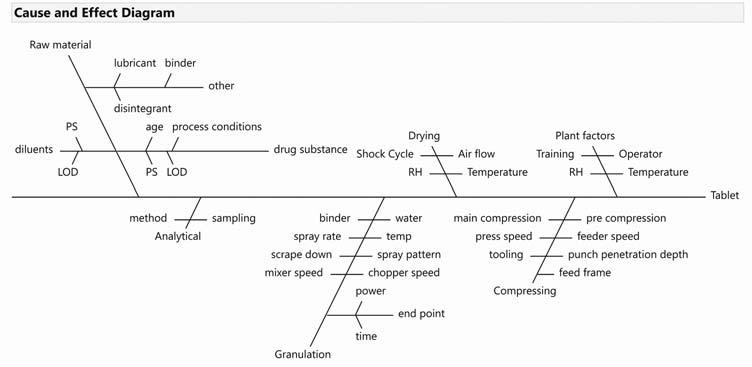
and scientific information to regulatory bodies, and for these agencies to respond to this with a barrage of specific inquiries.
Recognising that more testing will almost certainly not improve the quality of a drug, the US Food and Drug Administration (FDA) started this paradigm shift through its imitative "Pharmaceutical Quality for the 21st Century: A Risk-Based Approach." Regulators are now placing process understanding centre stage, encouraging pharma companies to develop the ability to assess the dependability and robustness of their manufacturing systems, and rewarding them for doing so.
These initiatives, coupled with a general realisation that the pharma sector had low levels of productivity, efficiency and quality compared with other industries that have long embraced QbD-like approaches, have led to the rapid and widespread adaptation of QbD by pharma and bioscience companies.
Transition to QbD
Science has always been important in the development of pharmaceuticals, and its commercial application has been a key to the industry's many lifesaving and life-enhancing drugs. Biotechnology-based drugs are more difficult to understand, make and analyse than small molecules; but specialised therapies such as advanced therapeutic medicinal products and gene therapies are beginning to emerge. At the same time, developments in IT and data acquisition mean that it’s now easier than ever to take a holistic and data-driven approach. For example, although used by other industries for many years, Process Analytical
Technology (PAT) is relatively new for the pharma industry and is now being used to gather more information, more quickly, than offline and endproduct tests produce. And now that data is more available and is easier to process, new possibilities such as Design of experiments (DOE) and multivariate analysis (MVA), arise.
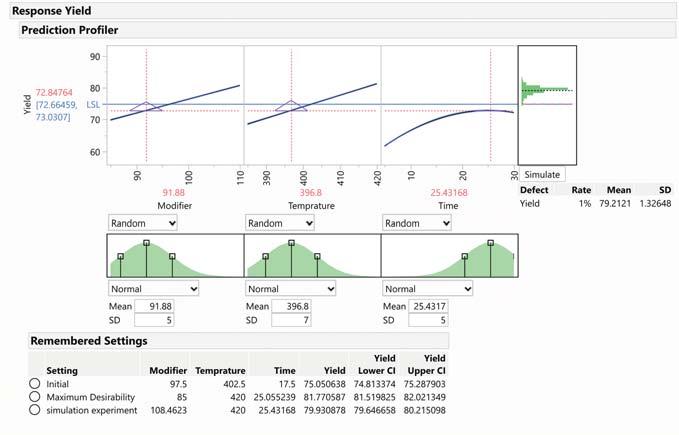
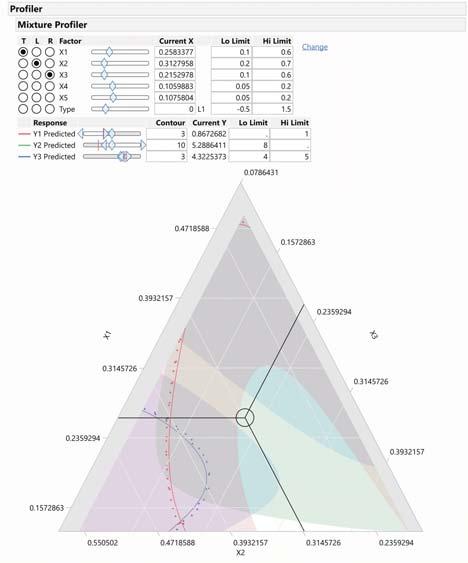
The pharma supply chain has become more fragmented and diverse, with more parties involved, including CROs, CMOs and external suppliers, leading to the rise of "virtual" companies. In a world where many countries are involved in the supply chain, maintaining quality across national borders and cultures has become essential.
At the same time, the public insists on safeguarding patient safety and on a ‘right first time’ approach, and the industry is making structural changes to try to reduce production costs and make supply chains more lean and agile. So, from development to manufacturing and supply, the management of knowledge is crucial. Knowledge includes an understanding of science, as well as its applications in technology, manufacturing, engineering, material science and other fields. Regulators now have a vigorous emphasis on data integrity, lifecycle management, process validation, quality metrics and knowledge management.
October 2022 EXPRESS PHARMA 39
TECHNOLOGY
QbD eases pharma product development
QbD is applicable to any pharma dosage form or manufacturing process, from small chemical molecules to large biopharmaceuticals and biological products.
When QbD is used in the development of a new product, the following stages are followed:
◆ Establish the Quality Target Product Profiles (QTPPs) and Critical Quality Attributes (CQAs) for the intended product profile
◆ Review options for formulation and manufacturing process design
◆ Decide formulation and manufacturing process design
◆ Design review by development team
◆ Develop and optimise formulation and manufacturing process design
JMP’s strengths supporting QbD: Design of Experiments (DOE)
DOE is a logical and practical method for investigating multifactor opportunity spaces, and JMP provides world-class design and analytical tools in a userfriendly application. Structured experimentation may be used in a variety of ways for generating new process understanding efficiently and reliably. The best way to reveal and model connections between an input, or factor and an output, or response, is to modify the former and observe if the latter changes as well. And, with multiple factors, the best approach to get relevant, new information is to actively manipulate these together according to a pre-specified plan.
JMP offers a state-of-the-art custom design capability that tailors your design to answer specific scientific or technological questions without wasting valuable resources. Furthermore, JMP simplifies data collection, analysis and the development of the associated statistical models so you can quickly understand the pattern of response, identify active factors, and optimise responses.
JMPin process and product development
JMP allows you to keep track of project deadlines and dependencies. Missed milestones increase
workload and stress, resulting in late product releases and increased costs – leading to being late to market, poor profitability and unpredictability of supply.
JMP helps to improve the efficacy and safety profile of your product by supporting datadriven methods that are effective and repeatable. You can also increase R&D efficiency by codifying and reusing process understanding and automating regular, manual operations to improve analytical speed and quality.
JMP’s advantage when enabling QbD processes
When JMP is used to enable QbD, it helps manage quality conformance and regulatory
compliance while considering trade-offs in speed and cost.
With JMP, you can monitor processes to make sure they stay the same, find and fix problems with batches more quickly, continuously improve processes and products to get more value, and cut down on waste. Effective analysis plans can help you get rid of parts of a process that don't work well or cost too much. You can save time by accessing and processing production data on a single self-service application that is intuitive and easy to use.
Implementation of a control strategywith JMP
At each step along the way, there are many tests to see how well
the product and process are working. In the lab, scientists and technicians use high-tech instruments that produce a lot of data, and PAT initiatives bring these on-line in real time.
Using JMP, you can quickly access any data and check its quality to see if there's anything that needs to be done before you can analyse it successfully. You save a lot of time by supporting the whole process of data analysis in one self-service application. JMP also allows you to communicate more effectively, promoting a collaborative datadriven approach that shows when a product or process needs to be fixed and, more importantly, what needs to be done to fix it.
Resources
White Paper - Optimizing Pharmaceutical Production Processes Using Quality by Design Methods
https://www.jmp.com/en_in/whitep apers/jmp/pharmaceutical-qualityby-design-methods.html
Webinar – QbD QbD: Using DOE to Increase Knowledge ofthe Process and Design Space
In this on-demand webinar, you will learn about JMP’s select the best DOE approach for your experimental needs, weighing options like custom designs, mixture designs and definitive screening designs. By adopting the right, tailor-made approach to experimentation, you'll be able to identify the design space and get your processes back into control faster and at lower cost to your organization and deriving the JMP’s QbD advantage.
https://www.jmp.com/en_in/events/ ondemand/technicallyspeaking/qbd-using-doe-to-increase-knowledge-of-the-processand-design-space.html
Download your free trial of JMP®
Used by hundreds of thousands of data explorers worldwide, JMP data analysis software reveals insights that raw tables of numbers or static graphs tend to hide. Get more out of your data by downloading a free, fully functional 30day trial now.

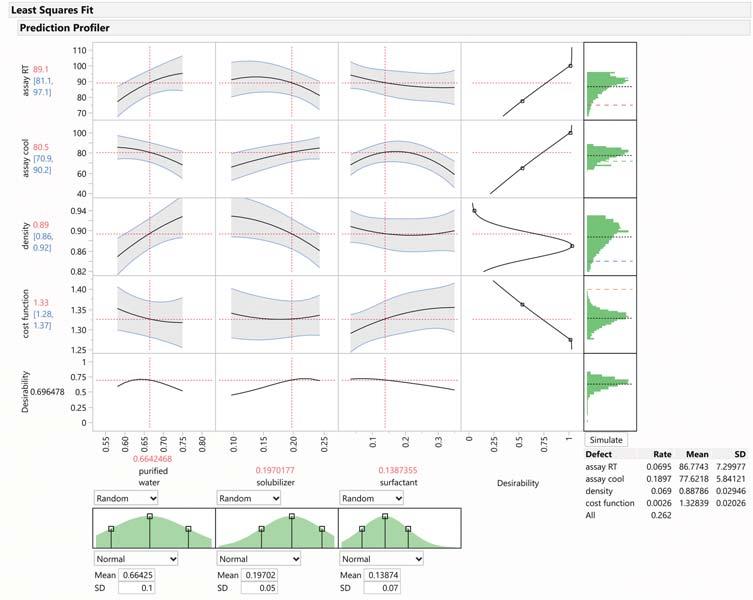
https://www.jmp.com/en_us/download-jmp-free-trial.html



EXPRESS PHARMA October 2022 40
Avantor® chromatographysolutions for analysis of nitrosamines
Nitrosamines
have become an increasingly prominent concern as they are highly potent genotoxic impurities which may inadvertently be formed during the manufacturing and processing of various consumer goods. The recent detection of nitrosamines in, and recall of, some pharma products has further increased concern over the presence of these compounds. Additionally, environmental contamination through release of nitrosamines, along with their formation during treatment processes (e.g. water treatment), are also areas of concern.
Nitrosamines are a class of organic compound containing a nitroso group bonded to an amine (Figure 1) and are typically formed by reaction of a nitrosating agent, such as nitrite, with various amines. Due to many nitrosamines being classified as probable human carcinogens, it is essential to establish and quantify their presence in a broad range of products and sample matrices. This article details several chromatographic solutions that can be applied to the determination of nitrosamines.
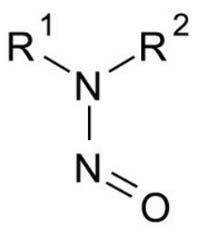
tory methods and guidance published by bodies such as the US FDA, USP and EPA typically utilise either Liquid or Gas Chromatography (LC or GC).
The Avantor® ACE® and Avantor® Hichrom chromatography ranges include numerous GC and LC stationary phases which can be utilised for the analysis of nitrosamines. GC is ideally suited to the analysis of volatile
stringent regulatory requirements. These high-quality GC phases provide numerous options for new method development and for use with the existing and future regulatory GC and GC-MS methods.
Liquid Chromatography is also commonly used and can overcome some reported issues with GC analysis; for example, allowing determination of in-
tection limits.[3] The use of LCMS/MS has become increasingly common, with nitrosamine detection, quantification and confirmation achieved through monitoring analyte specific Multiple Reaction Monitoring (MRM) transitions. Alternatively, LC-high resolution MS (LC-HRMS) has also been employed to provide highly specific detection and quantification.
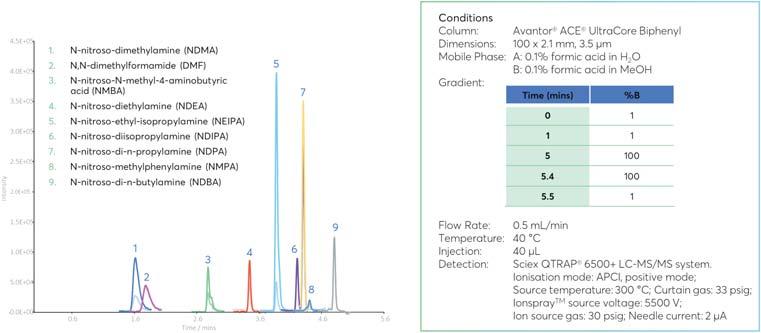
present in the sample as a residual solvent from manufacturing processes. Isotopic ions of DMF (13C or 15N) are isobaric with NDMA and therefore could potentially interfere with NDMA quantification.[6] The chromatographic separation provided by the method in Figure 3 has been demonstrated to provide a solution to this issue.[7]
Chromatographic methods for nitrosamine determination
Analytical methodologies for the determination of nitrosamines (including regula-
nitrosamines and has therefore proved a popular choice for nitrosamine analysis, providing high-resolution separations, fast analysis and a cost-effective solution. Figure 2 shows the analysis of three nitrosamines specified in EPA method 607, which can be applied to the analysis of these analytes in municipal and industrial wastewater samples.

In this example, the HI-5 GC phase, a low-polarity stationary phase with a five per cent phenyl, 95 per cent methyl polysiloxane composition, provides separation of these key nitrosamines in compliance with the EPA methodology. The Avantor® Hichrom GC phase portfolio includes a wide range of standard GC phases, along with several specially developed unique phases. Columns are available in all common column formats and provide demonstrable reproducibility to meet
volatile nitrosamines such as NMBA, and avoiding thermal degradation of ranitidine drug substance under GC conditions to yield NDMA.[2] In the pharma industry, the exceptionally low allowable intake levels for genotoxic impurities necessitates the use of analytical techniques that can achieve very low-level de-
Figure 3 shows the LCMS/MS determination of eight nitrosamines spiked into valsartan API. This application includes key target analytes specified for monitoring by a variety of regulators including EMA and the FDA.[4,5] The separation is achieved using an Avantor® ACE® UltraCore Biphenyl column, manufactured using ultrahigh purity solid-core silica, which provides exceptional UHPLC-like separation efficiencies at low back pressure, compatible with standard HPLC systems. In this example, a highresolution separation of these key analytes is readily achieved within 5.5 minutes. The analytical performance of this method has been extensively assessed and demonstrated to achieve low ppb detection limits required by regulatory authorities. A key feature of this application is the separation of NDMA and DMF, which may be
Figure 4 demonstrates an alternative solution for the LCMS/MS separation of nitrosamines according to the European Union EN 71-12 safety of toys standard. In this example, a simple acidic mobile phase is used to separate a wide range of nitrosamines on an Avantor® ACE® Excel 2 C18PFP column. Often the alternative selectivity offered by nonC18 phases such as pentafluorophenyl (PFP) can be highly advantageous, enabling the separation of analytes that cannot be achieved using a C18 phase.[8] The alternative selectivity offered by this phase, when compared to a standard C18 phase, is clearly demonstrated in Figure 5A and 5B. However, shorter, more chemically labile ligands, typically utilised for such phases, can potentially show high levels of phase bleed, resulting in reduced or variable MS signal sensitivity. Figure 5A, C and D
Figure
Figure 2: Nitrosamine analysis using the HI-5 Phase (EPAMethod 607,
note
Figure 3: LC-MS/MS separation of nitrosamine contaminants in valsartan API (Application note AN7580).[1,7]
October 2022 EXPRESS PHARMA 41 TECHNOLOGY
The Avantor® ACE® and Avantor® Hichrom chromatography ranges include numerous GC and LC stationary phases which can be utilised for the analysis of nitrosamines
1: Generic nitrosamine structure
Application
C-13033).[1]
TECHNOLOGY
clearly demonstrate the high levels of bleed that can potentially arise when using a propyl PFP phase compared to a standard C18 phase. The ACE C18PFP overcomes this issue (Figure 5B) by combining the alternative selectivity of a PFP phase with the longer chain, rugged and stable C18 ligand to substantially reduce stationary phase bleed (Figure 5E), providing superior LC/MS compatibility.

Conclusion
As concern over the presence of nitrosamines in various consumer products, pharma products and the environment grow, industry regulators are demanding increasingly sensitive methods for their determination. Liquid and Gas Chromatography, especially when coupled to mass spectrometry, provide highly selective and sensitive analytical approaches to this challenge. This article has provided examples of how the Avantor® ACE® and Avantor® Hichrom ranges of LC and GC columns provide numerous options for the high-resolution separation of nitrosamines. The high quality and reproducibility of all Avantor® chromatography products ensure that customers have confidence that methods will meet stringent regulatory performance requirements and offer consistent and reliable long-term performance.

References
1. VWR Chrom-Application library (https://uk.vwr.com/cms/ chromatography_chrom_ library)
2. H-H. Lim, Y-S. Oh, H-S Shin J. Pharma. Biomed. Anal. 189, 113460 (2020)
3. M. James, T. Edge LCGC Europe 34, 267-276 (2021)
4. “Questions and answers for marketing authorisation holders/applicants on the CHMP Opinion for the Article 5(3) of Regulation (EC) No 726/2004 referral on nitrosamine impurities in human medicinal products” (https://www.ema.europa.eu/en/ human-regulatory/post-authorisation/referral-procedures/ nitrosamine-impurities), Accessed March 2022
5. “Control of Nitrosamine Impurities in Human Drugs Guidance
Figure 4: Separation of nitrosamines according to the European safetyof toys standard method byLC-MS/MS (Please refer to Application Note AN1110 for MRM transitions[1]).Reproduced with permission of LGC Limited,UK
Figure
Conditions
for Industry” (https://www.fda.gov/media/141720/download). Accessed March 2022
6. J. Yang, T. Andres Marzan, W.
5E demonstrates the
Ye, C. D. Sommers, J. D. Rodriguez, D. A. Keire, AAPS J. 22 89 (2020)
7. M. James, T. Edge “Determination of nitrosamine impurities in
on a C18 phase (A),C18-PFPphase (B) and two com-
of
bleed observed on the ACE C18-PFP.
65:35
pharmaceutical API’s and addressing issues associated with DMF and NDMA co-elution” (https://av.cmd.vwr.com/rq/ddl/ avantorace_nitrosamines_white
paper) Accessed March 2022
8. M. R. Euerby, M. Fever, J. Hulse, M. James, P. Petersson, C. Pipe LCGC Europe 29, 8-21 (2016)
EXPRESS PHARMA October 2022 42
5: LC-UVanalysis of a set of basic compounds showing varying level of observed bleed
petitor pentaflurophenyl-propyl stationaryphases (C & D).Figure
lowlevel
LC-MS
for A-D: Column dimensions: 150 x4.6 mm,Mobile phase: A: 20 mM KH2PO4 pH 2.7 (aq) B: 20 mM KH2PO4 pH 2.7 in MeOH/H2O
v/v, Gradient: 5-100 %B in 20 minutes,hold for 5 mins,Flowrate: 1 mL/min,Injection volume: 5 μL,Temperature: 60 °C,Detection: UV,210 nm.Sample: 1) Nicotine 2) Benzylamine 3) Procainamide 4) Terbutaline 5) Phenol 6) Proprietarybase 1 7) Proprietarybase 2 8) Remacemide 9) Nortriptyline. Comparative data maynot be representative of all applications.Phenomenexcolumns were not used in the above comparison
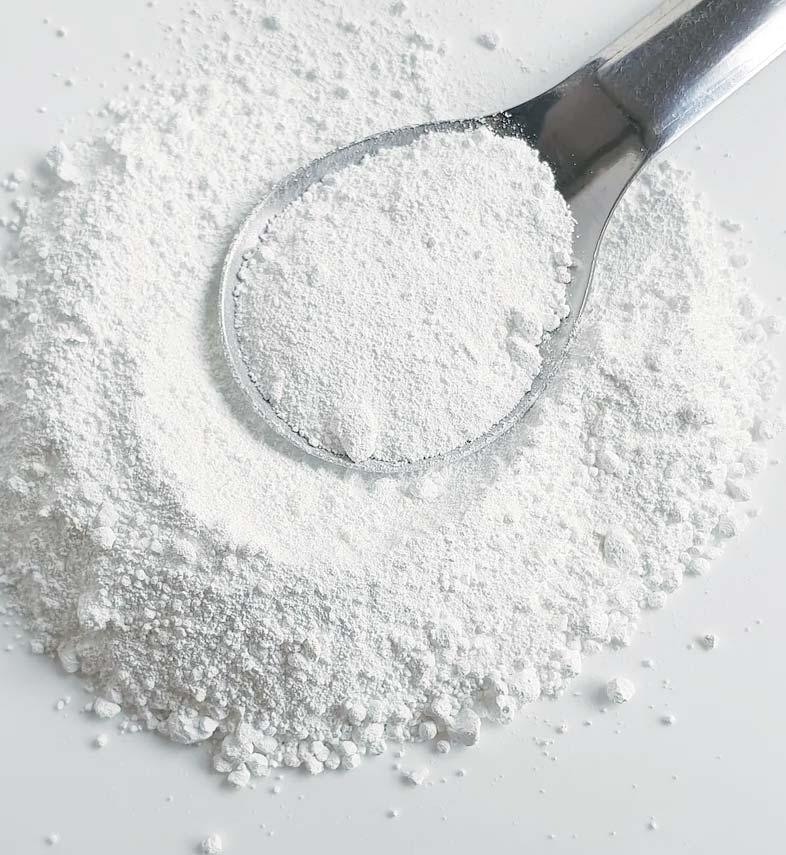





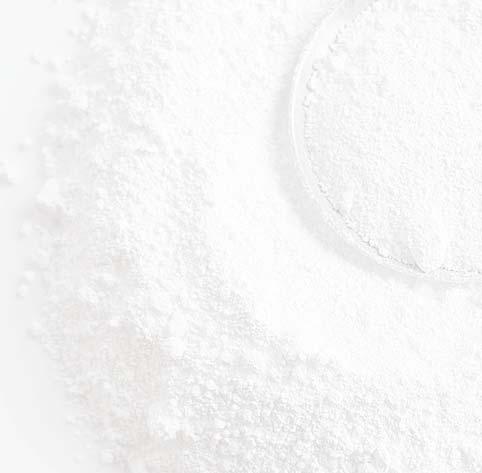





BUSINESS AVENUES EXPRESS PHARMA EXPRESSPHARMA October 2022 43
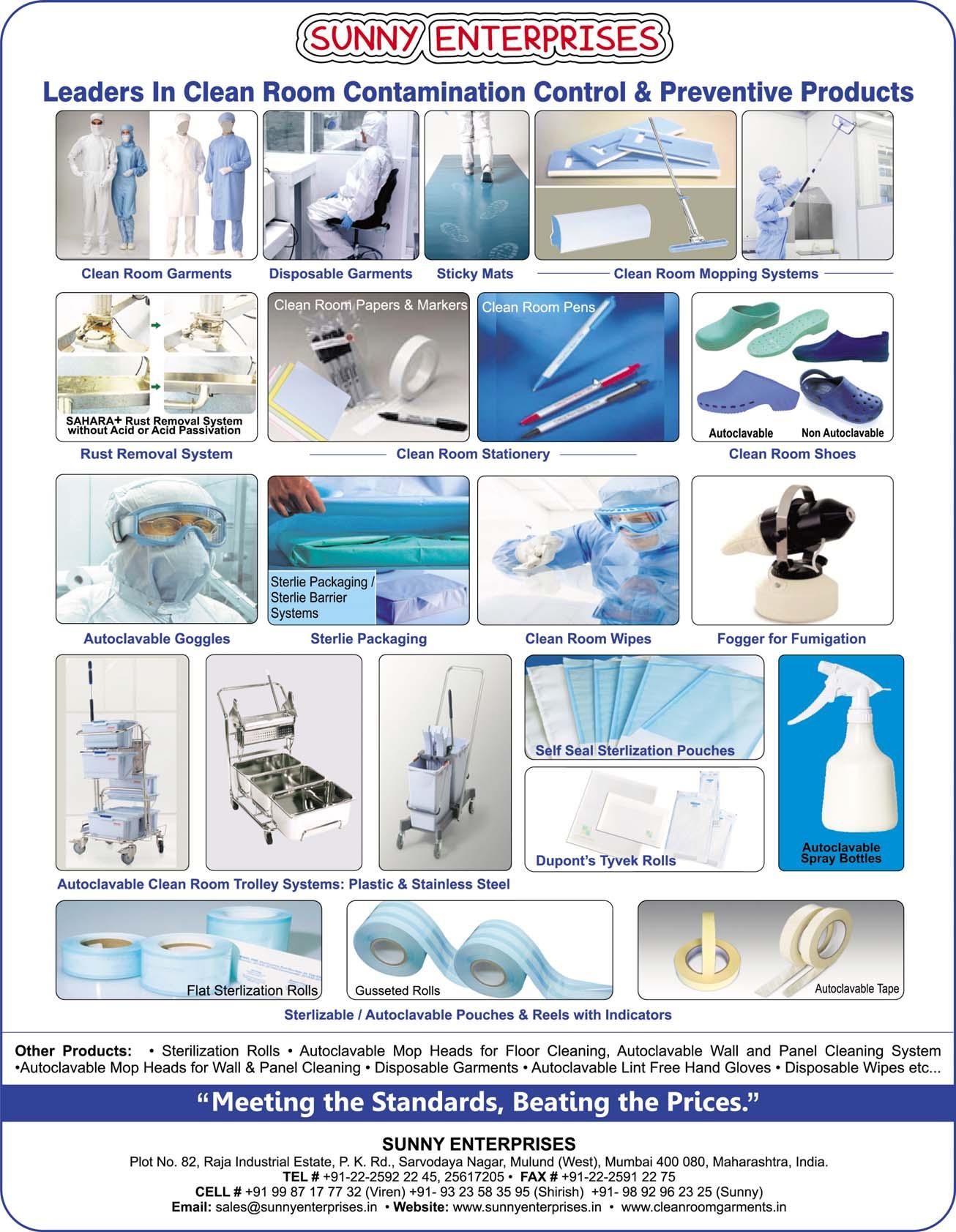
BUSINESS AVENUES EXPRESS PHARMA October 2022 EXPRESSPHARMA44
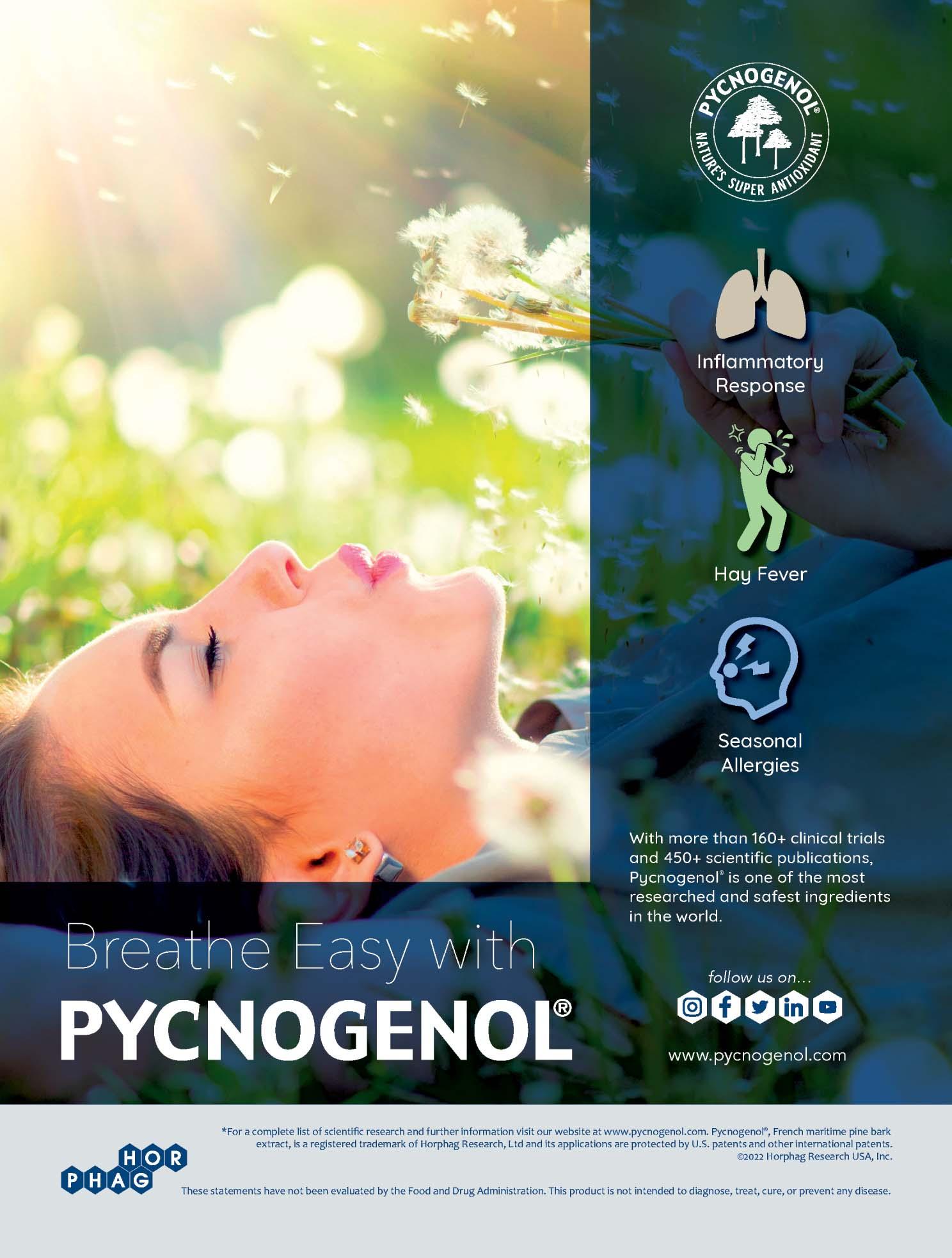
DKSHIndiaPvt.Ltd. HiranandaniLightHallBusinessPark.AWing,FirstFloor SakiViharRoad,AndheriEast,Mumbai400072,India Mobile:+918291086293 priyanka.mishra@dksh.com,www.dksh.in MarketExpansion Servicesby www.dksh.com BUSINESS AVENUES EXPRESS PHARMA EXPRESSPHARMA October 2022 45
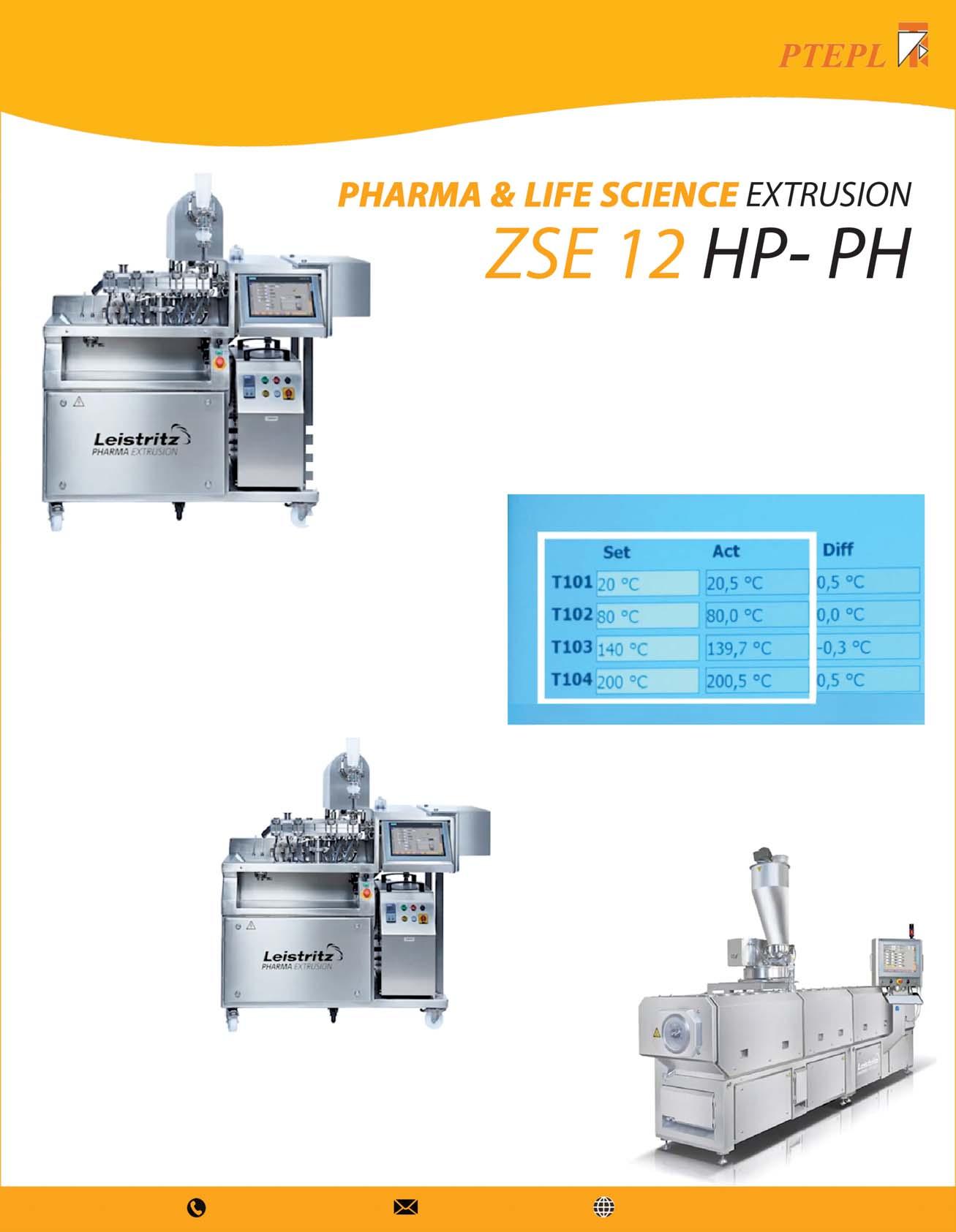





BUSINESS AVENUES EXPRESS PHARMA October 2022 EXPRESSPHARMA46
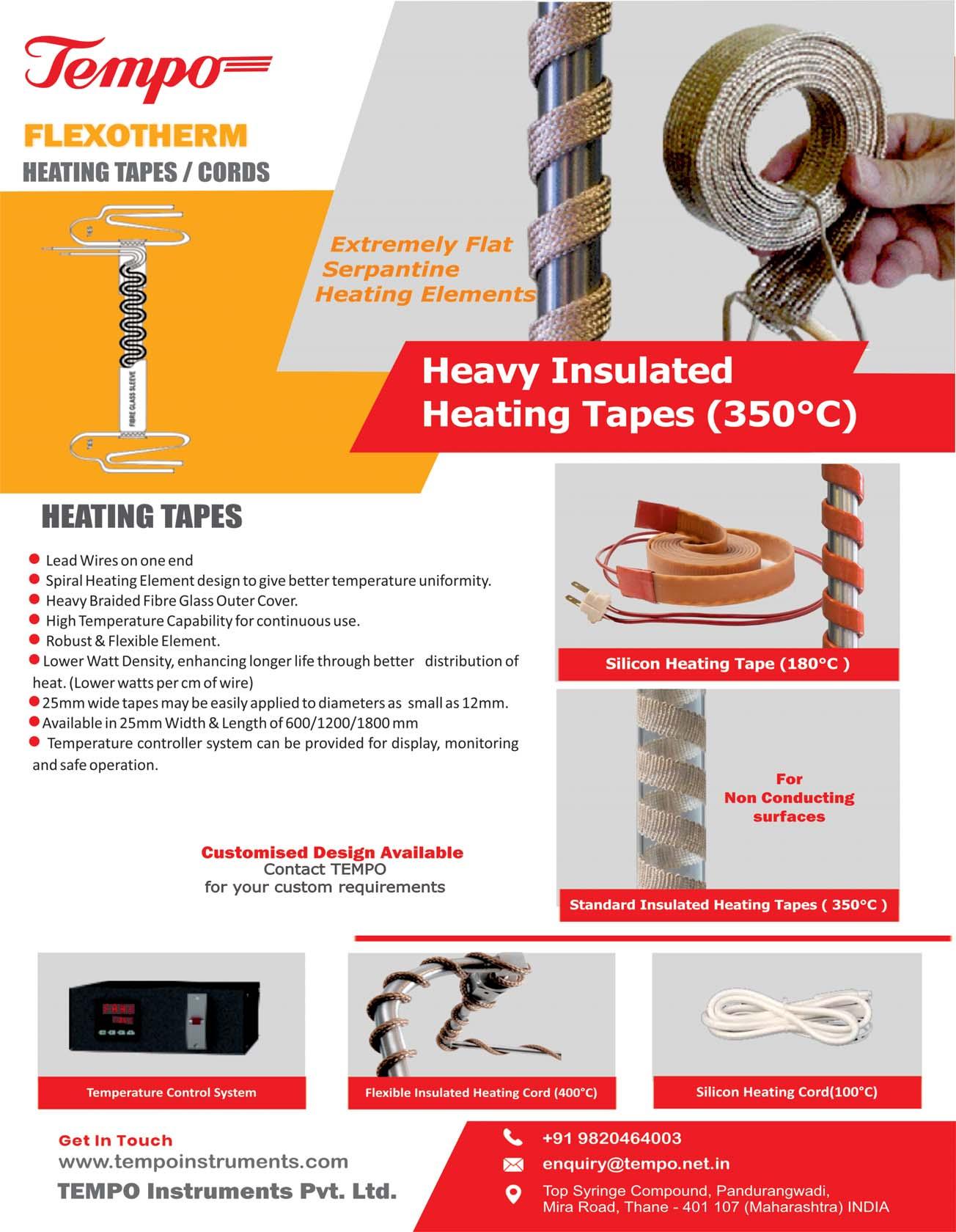
BUSINESS AVENUES EXPRESS PHARMA EXPRESSPHARMA October 2022 47







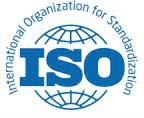



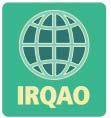




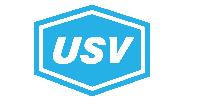



BUSINESS AVENUES EXPRESS PHARMA October 2022 EXPRESSPHARMA48
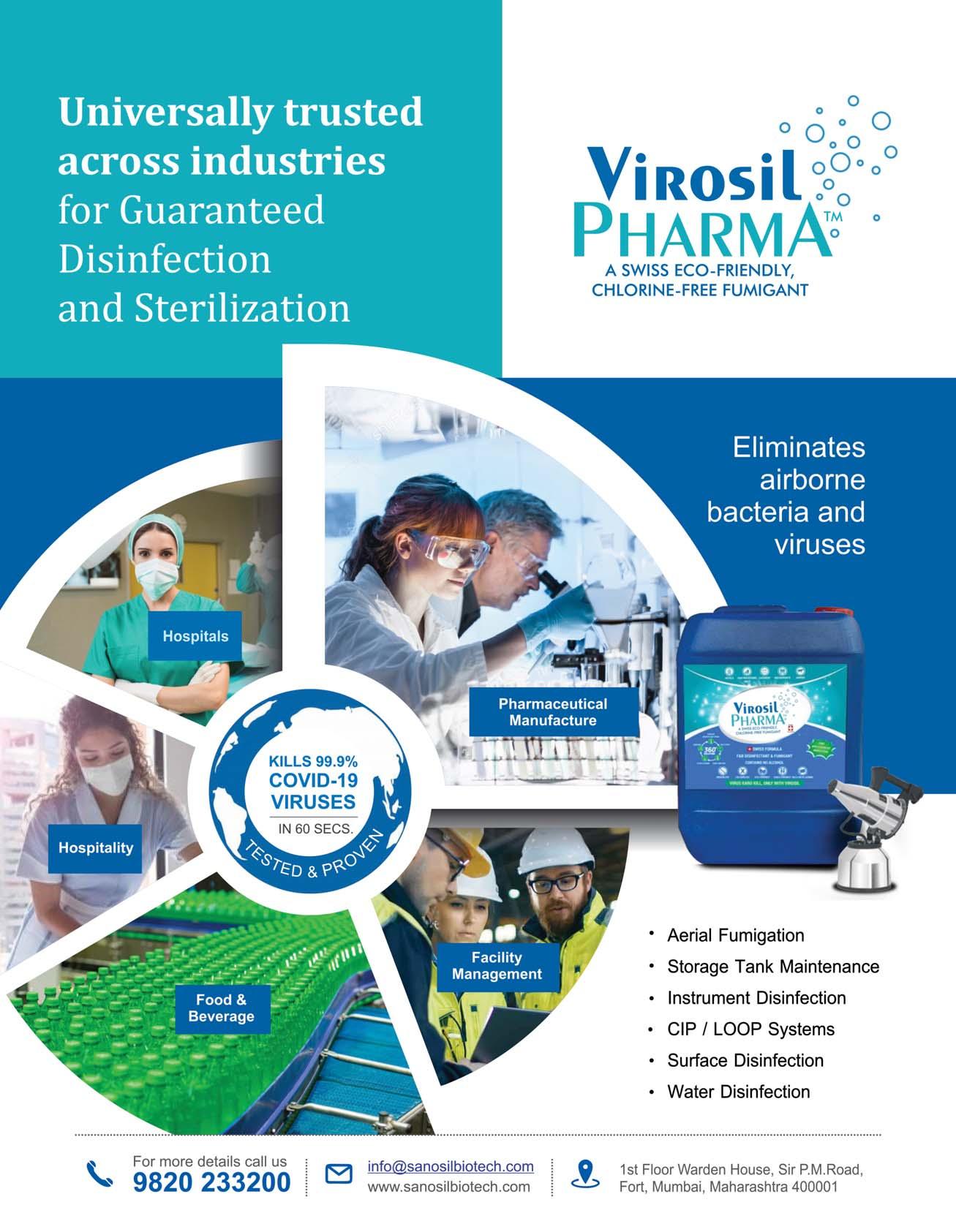
BUSINESS AVENUES EXPRESS PHARMA EXPRESSPHARMA October 2022 49
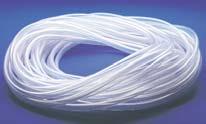



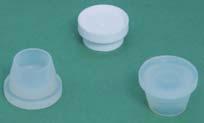
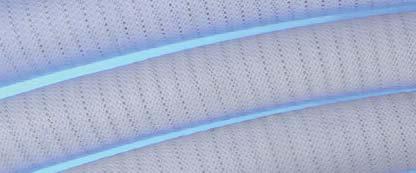


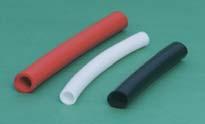
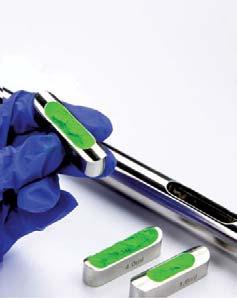


BUSINESS AVENUES EXPRESS PHARMA October 2022 EXPRESSPHARMA50 BlueHeaven SILICONETRANSPARENTTUBING M.K.SiliconeProductsPvt.Ltd. E-mail:sales@mksilicone.com 205&206HillViewIndustrialPremises,AmrutNagar, Ghatkopar(W),Mumbai-400086,India.Tel.:022-25004576 fortheQualityConscious…. INDIA QM002 AnISO9001-2015COMPANY Quality Products Since 1997 CERTIFIED CLEA N ROOM IS08
eatures
• Compactandcompletesolution
• Design,engineering,manufacturingand instrumentationunderoneroof

• Customizedadvancedtemperaturecontroller withDCSconnectivity
• Skidmountedsystemforeaseofinstallation
• Versatileheatingcontrolsforconsistentand desiredtemperatures
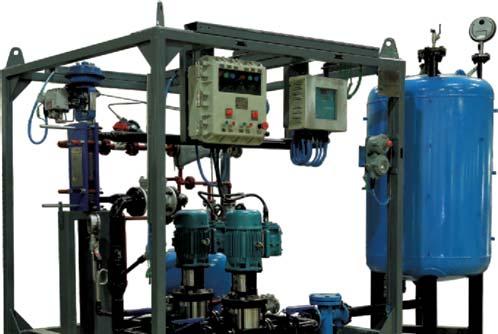
• Advancedcondensateremovaltechnique

• Instantaneousresults
HotWaterGenerator
• Forpharmaceuticalprocess, heatinganddrying
• Workscontinuously
• Requiresminimalmaintenance
• Efficientcontrol
Advantages
• Instantoutput -Hotwatergenerationis instantaneouslyavailableforfluctuatingprocess loadsandurgentdemands
• Lessenergyconsumption -Systemdesignedwith heatexchangerswithveryhighheattransferrates andefficiency
• Leastcostofownership -Inexpensivesolutionin termsofinitialcapitalcosts,installation,operation controlwithsafetyandmaintenance
• Mostreliable -Ensuresaccuratehotwater temperaturedemandedbymostofthetemperature sensitivedryingprocesses
• Compactyetefficient -Upto75%lessspace requiredforinstallationwhencomparedto conventionalhotwatertankheatingsystems
F
INSTRUMENTS|AUTOMATION|HEATTRANSFERSYSTEMS 25+years OFDEDICATED SERVICETO LIFESCIENCES INDUSTRY 1300+ CUSTOMERS PAN-INDIA 1500+ REACTORS AUTOMATED SOLUTIONS ACROSSTHE AUTOMATION PYRAMID AuthorisedSystemIntegrator &GalaxyPartnerSince2001YourtrustedpartnerforProcess&AnalyticalInstrumentation POLMONINSTRUMENTSPVT.LTD. PolmonHouse,NizampetRoad,Kukatpally,Hyderabad-500085TelanganaIndia T:+914023057308/3046info@polmon.comwww.polmon.com CORPORATEOFFICE BUSINESS AVENUES EXPRESS PHARMA EXPRESSPHARMA October 2022 51




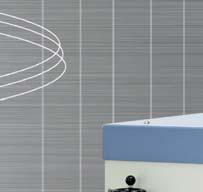

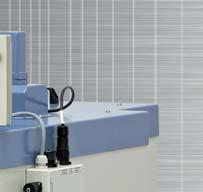
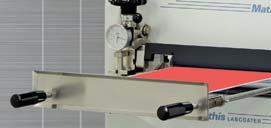


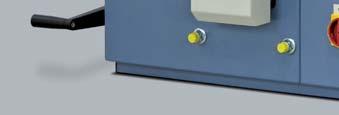
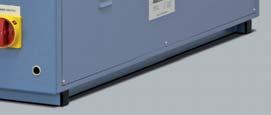










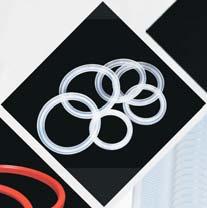


























BUSINESS AVENUES EXPRESS PHARMA October 2022 EXPRESSPHARMA52 LABCOATER Coating,DryingandLaminatingthebasicfunctionsofthe«LTE-S» Variousoptionse.g.surfacetemperaturemeasurement Wewillshowyouhowtoachievetheoptimalperformancefromthe«LTE-S» SmallLABCOATERforsamplesizeA3 MarketleadersareusingMathistechnology Versatileusagefor •knifeoverroll •airknife •rubberblanket •lamination
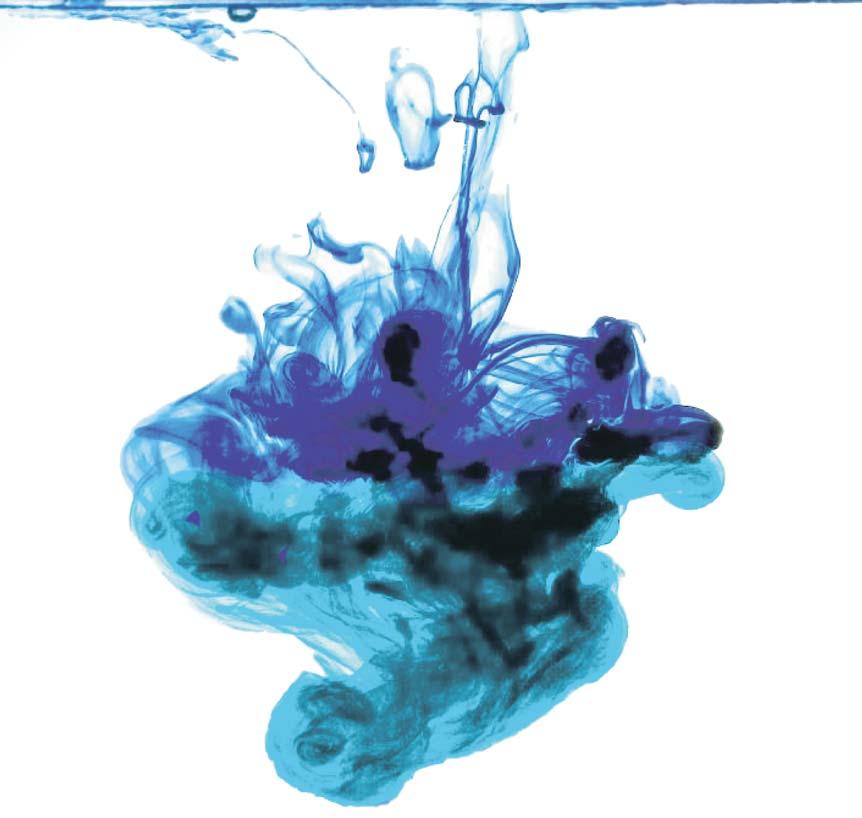
BUSINESS AVENUES EXPRESS PHARMA EXPRESSPHARMA October 2022 53
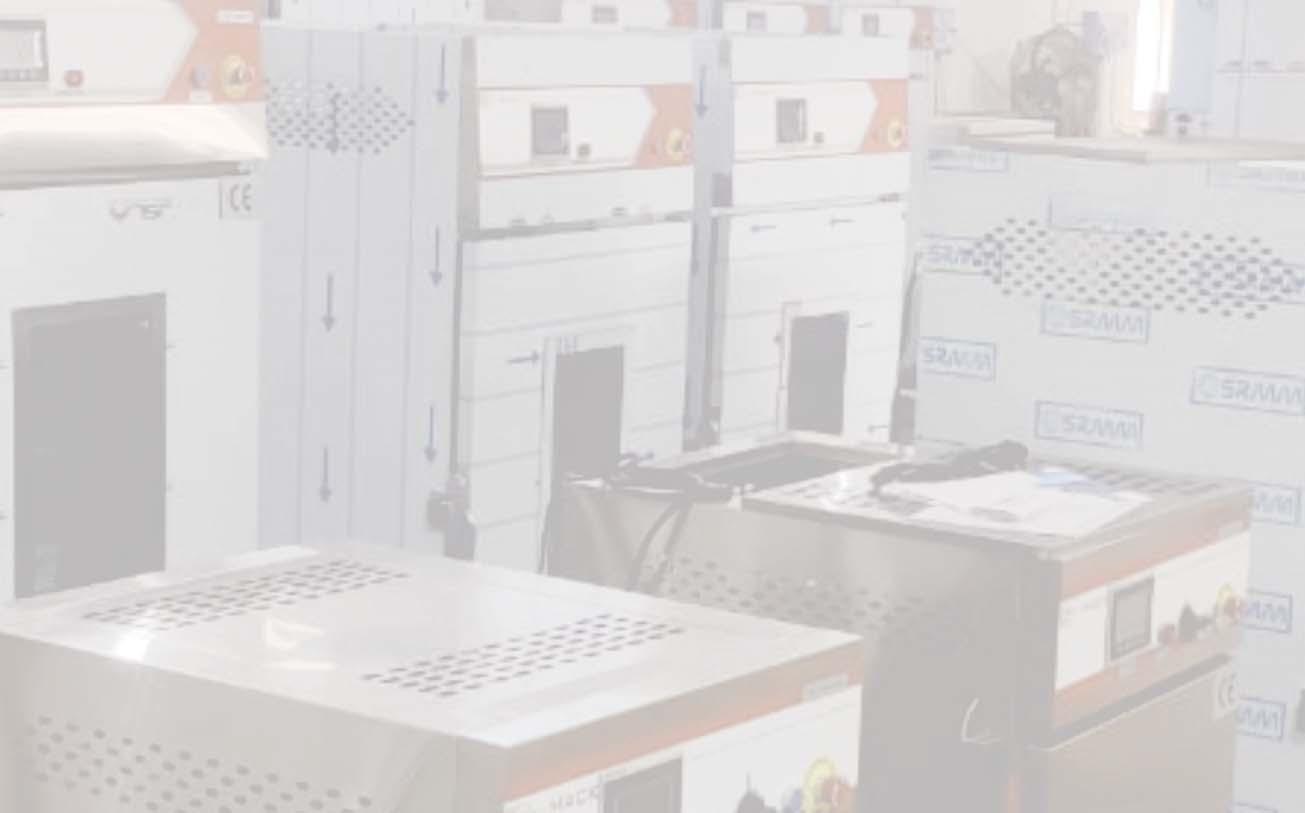







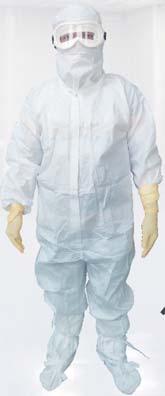



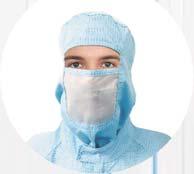




BUSINESS AVENUES EXPRESS PHARMA October 2022 EXPRESSPHARMA54

BUSINESS AVENUES EXPRESS PHARMA EXPRESSPHARMA October 2022 55
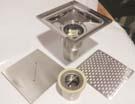


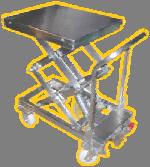






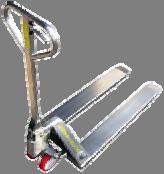

















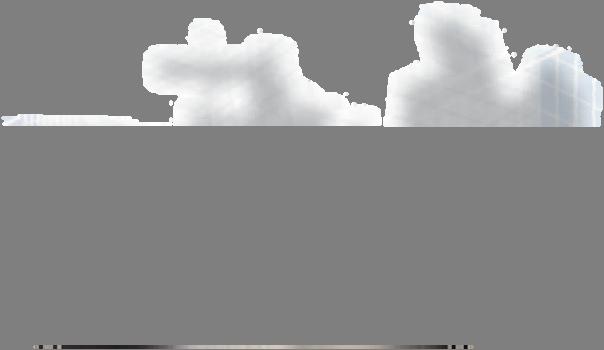
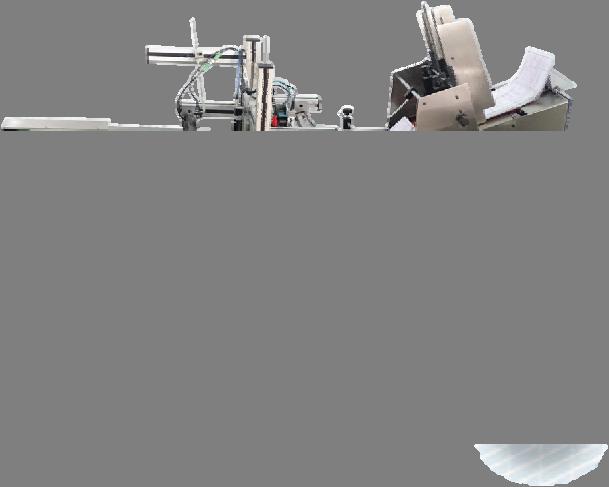





































The Ultimate Solution for Marking and Coding Systems... Scan this QR code to view product applications MVT Series 1 Media Transport System X1 JetCamera BUSINESS AVENUES EXPRESS PHARMA October 2022 EXPRESSPHARMA56 To Advertise in Business Avenues Email: rajesh.bhatkal@expressindia.com rbhatkal@gmail.com
Non-AgitatedtypeNutscheFilter withcleanableSS316Lfilterdisc forfiltrationofpharmaceuticalsinsterilerooms
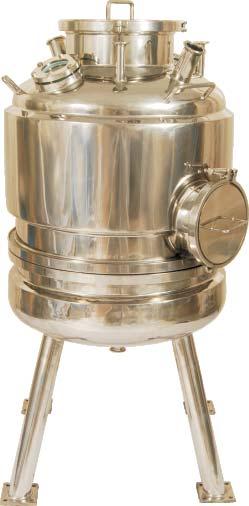
KumarprocesshasdesigneduniqueNon-agitated typeNutscheFilterswhichcanbeusedforfiltrationof antibiotics,vitamins&pharmaceuticalproductsin sterilerooms.ConventionalNutschefiltersusePP /Polyestercloth,whichcouldreleasefibersleadingto productcontamination.Weoffercleanable,nonfiber/particlereleasingSinteredSS316Lfilterdiscs. Thisisamajoradvantageinapplicationsrequiring filtration of antibiotics, vitamins etc. in ster ile rooms whereordinarycentrifugecannotbeusedanduseof conventionalfilterclothisruledout.
Mostofourassembliesarecustomdesignedtosuit theproductbeingmanufacturedwithrespecttocake height,liquidhold-up,CIP/SIPrequirementsetc.
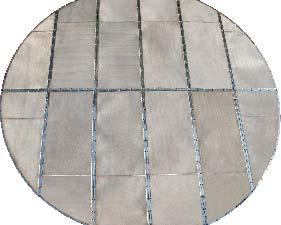
WecanretrofityourexistingAgitated Nutschefilters&Dryers(ANFD)withour cleanablefiltermedia.HastelloyC22 filtermediaalsocanbeofferedfor corrosiveproductapplications.Filter discsaslargeas2.6mdiametercanbe offeredinasinglepieceorassegments.
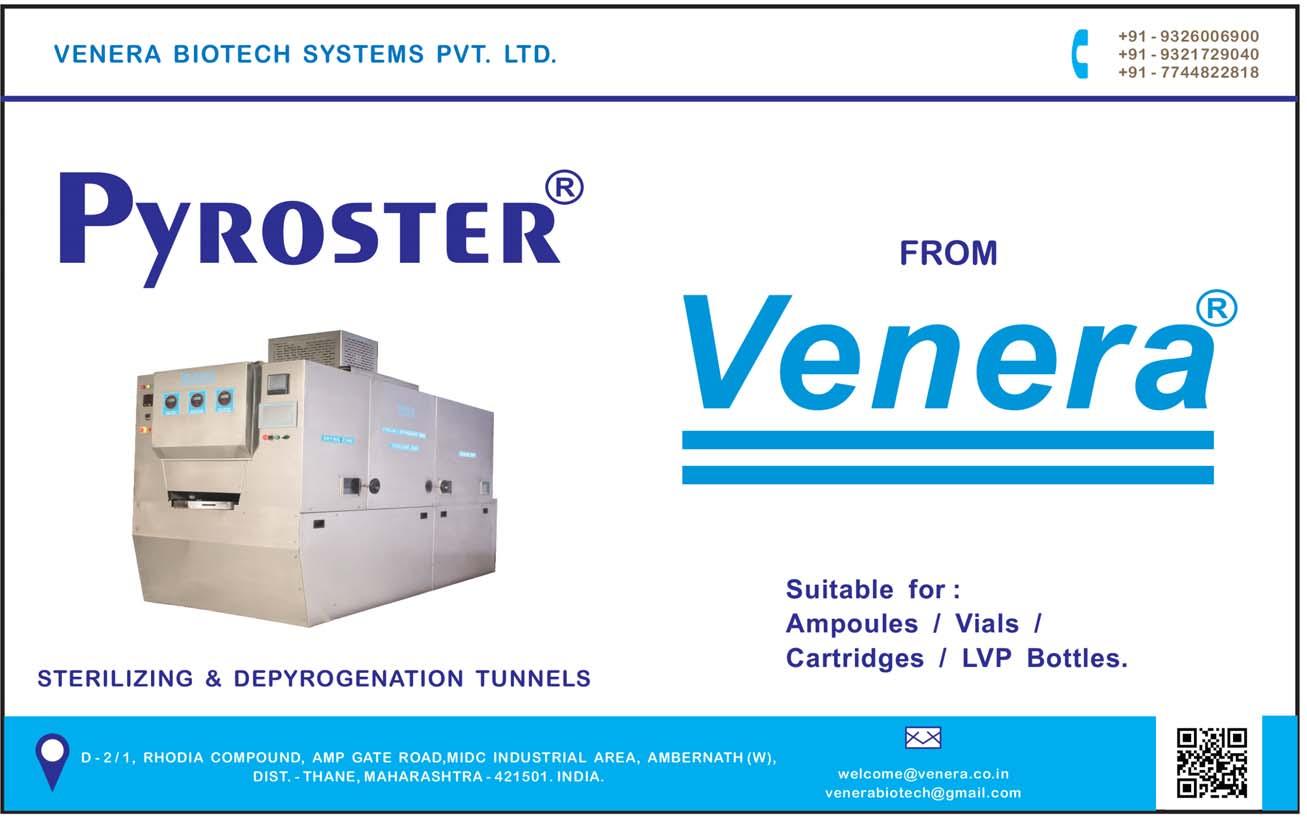
AllnozzlesareprovidedwithTCtypesanitary connections,‘O’RingsareofferedwithspecialPTFE encapsulationwhicharecompatiblewithavarietyof solvents.OtherfeatureslikeSight/Lightglass,spray ballsetc.areprovidedasperthecustomer’sneeds. Superiorqualitycastorwheelsareprovidedforeasy mobility.Theinternalsurfacesareelectro-polished& offeredwith320gritfinishtocomplywithcGMP.



Withcountlesssatisfiedcustomers,ourNutsche filtersarepreferredasastandardbyallmajorAPI& Bulkdrugmanufacturers.Experienceoursuperior levelsofcustomizationbygettingintouchwithour technicalexperts.

KumarProcessConsultants &ChemicalsPvt.Ltd. 4&5,BhagtaniEnclave,SonapurLane,Off.LBSMarg, Bhandup(West),Mumbai-400078.INDIA. Tel
Mobile:9004706047,9892312343 email:info@kumarfilter.comwww.kumarfilter.com
Clearsolutionsforyourfiltrationproblemssince1978
www.siddharthads.com
BUSINESS AVENUES EXPRESS PHARMA EXPRESSPHARMA October 2022 57
Contactusforfurtherdetails
l : 91 1 22 2 355552 2 355662 2







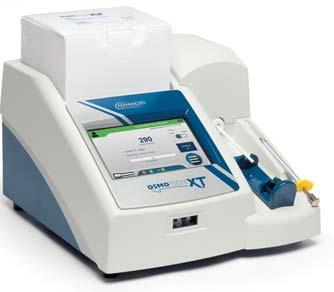

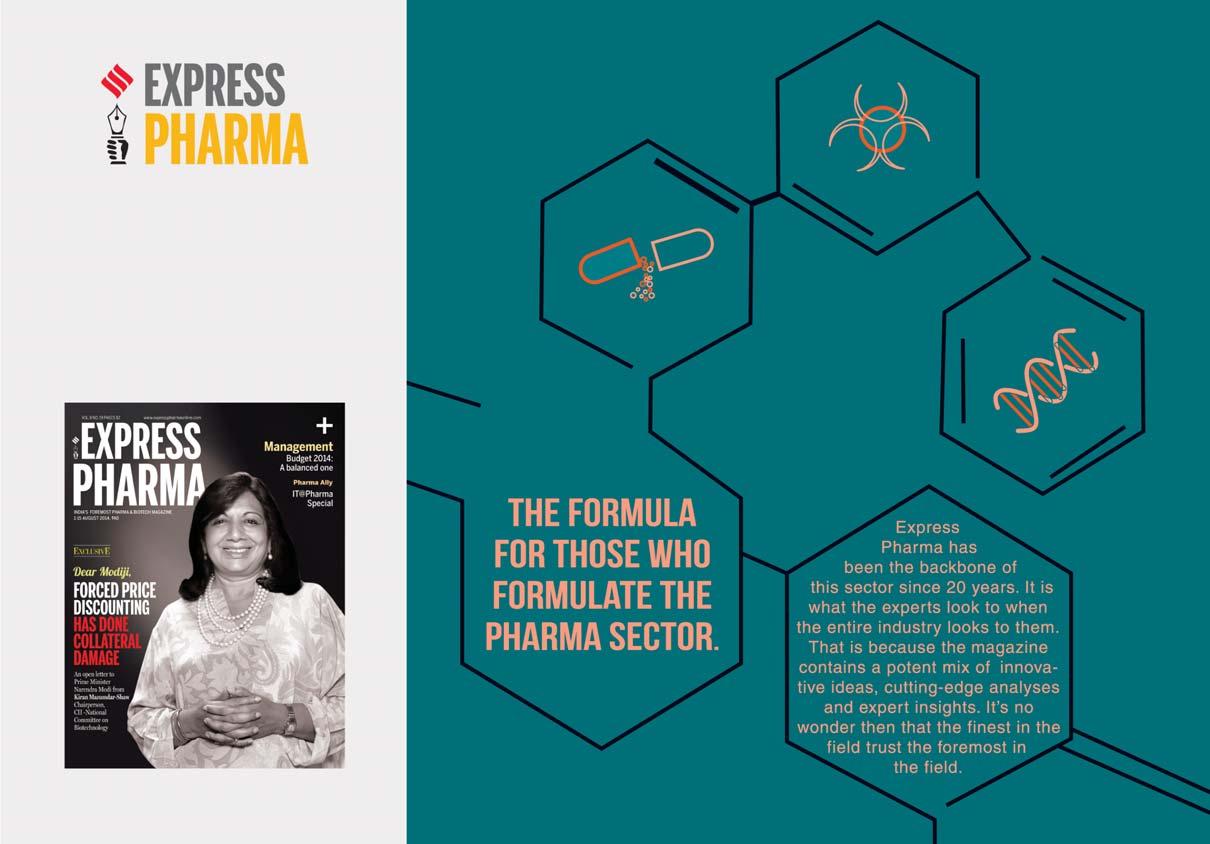
® ® ® OsmoTECH®XTSingle -SampleMicro-Osmometer Best-in-classosmolalityperformance, designedwithyouinmind. Nowavailable! HIGHLIGHTEDFEATURES: No.127,BussaUdyogBhavan,TokershiJivrajRoad,SewriWest,Mumbai-400015, Maharashtra,Landline:+91022-24166630Mobile:+919833286615 Offersthewidestrangeofosmolalitytesting(0–4000mOsm/kgH2O) Supports21CFRpart11,GMPandEUAnnex11compliance MeetsPharmacopeiaosmolalitytestingguidelines 3Leveluseraccessandpasswordprotection Storage:unlimiteddatastorageforaccess Audittrail:Preserveunlimitedresultsandevents Databasebackup,protectsyourdatawithautomaticormanualbackup BUSINESS AVENUES EXPRESS PHARMA October 2022 EXPRESSPHARMA58
PHARMA PULSE
Yokogawa launches OpreXIT/OTsecurityoperations centre service
Yokogawa
Electric Corporation has announced the OpreXTM IT/OT Security Operations Centre (IT/OT SOC) service. This new addition to the OpreX Safety and Security family is a centrally managed service based on people (service organisation), processes and technology. Targeted primarily at industrial enterprises, this service was developed by Yokogawa to improve the security of IT and OT networks by detecting, analysing and enabling a quick and effective response to cybersecurity incidents from anywhere in the world.

Monitoring in real-time for cybersecurity threats to networks and IT/OT infrastructure offers customers comprehensive protection that mitigates both operational and business downtime and eases the task of IT/OT asset management.
Development background
New cybersecurity threats emerge every day. As technologies evolve, so do the associated cyber threats and vulnerabilities that can cause severe damage to an organisation's data, assets and reputation. Security Operations Centres (SOCs) are increasingly regarded as critical to an effective cybersecurity strategy as they proactively focus on undiscovered cyber security threats and vulnerabilities.
While traditionally, the IT and OT domains have been managed separately, the convergence of IT and OT networks – driven by digital transformation (DX) – has made the two domains increasingly interdependent. For efficiency reasons, organisations can choose to establish a converged IT and OT SOC that acts as one team, using a shared data lake, tooling, resources and processes.
In 2019, Yokogawa began developing an internal security monitoring service for the IT infrastructure of Yokogawa Group companies around the
globe, monitoring personal computers, DNS/AD servers, intrusion detection systems and factory systems and processing up to 600 million events a day by using Cyber Threat Intelligence (CTI) and Machine Learning (ML) programmes. Utilising the vast experience that it has gained internally, and complemented by its best-inclass approach to OT security for its customers, Yokogawa has developed a cloud-based IT/OT SOC service to provide its customers with an integrated, consistent and holistic approach to security for the IT and OT domains.
Features
IT/OT SOC is a security monitoring service that uses nextgeneration Security Information and Event Management (SIEM) which is fast, scalable and unified. The service uses various CTI and ML tools to collect event logs from customers' IT/OT devices to detect cyber attacks, unauthorised accesses and infiltration by malware. It provides a wide range of analysis, consulting and man-
aged services with next-generation SOC architecture.
Detection of unknown threats byMLand AI-based SIEM
Powered by ML and AI, the IT/OT SOC is an advanced intelligent SIEM service that detects abnormal activities and sophisticated attacks. The MLand AI-driven SOC can devise a threat response by implementing the right playbook, reducing the investigation time by providing analysts the precise action point, and minimising the mean time to detect and respond.
Reduction of human errors and acceleration of workflowthrough the use of advanced automation and orchestration tools
IT/OT SOC employs a Security Orchestration, Automation and Response (SOAR) platform of technologies that coordinate, execute and automate among various people and tools, minimising human errors and thereby speeding up the overall security response.
24-hour protection through CTI
Collected logs and event information are collated in realtime by multiple CTI tools, providing around-the-clock, year-round protection through the detection of suspicious communications and malware.
Ultimate deployment flexibilityand support
IT/OT SOC can be integrated with the existing IT/OT security services, network security infrastructure, and incident management systems. Customers can also integrate it with their SOCs or Yokogawa's existing SOC.
Major Target Markets
Oil and gas, petrochemicals, chemicals, iron and steel, pulp and paper, electric power, and wastewater treatment
Applications
Information security, network security, application security, IT and OT security monitoring and detection, and cybersecurity consulting
More Information
IT/OT SOChttps://www.yokogawa.com/itot-soc/
About OpreX
OpreX is the comprehensive brand for Yokogawa's industrial automation (IA) and control business. The OpreX name stands for excellence in the technologies and solutions that Yokogawa cultivates through the cocreation of value with its customers, and encompasses the entire range of Yokogawa's IA products, services, and solutions. This brand comprises the following five categories: OpreX Transformation, OpreX Control, OpreX Measurement, OpreX Execution, and OpreX Lifecycle.
IT/OT SOC, an OpreX Safety and Security family solution, is in the OpreX Lifecycle category. For its development of products, services, and solutions in this category, Yokogawa tapped its extensive experience in working closely with customers to optimize operations and maintenance over the entire plant lifecycle.
About Yokogawa Yokogawa provides advanced solutions in the areas of measurement, control, and information to customers across a broad range of industries, including energy, chemicals, materials, pharmaceuticals, and food. Yokogawa addresses customer issues regarding the optimization of production, assets, and the supply chain with the effective application of digital technologies, enabling the transition to autonomous operations.
Founded in Tokyo in 1915, Yokogawa continues to work toward a sustainable society through its 17,000+ employees in a global network of 122 companies spanning 61 countries.
For more information, visit: www.yokogawa.com The names of corporations, organizations, products, services and logos herein are either registered trademarks or trademarks of Yokogawa Electric Corporation or their respective holders.
October 2022 EXPRESS PHARMA 59
Providing enterprise IT/OTassets with real-time protection from cybersecurity threats
PULSE
High throughput high sensitivityμElution technology for bioanalysis

LC–MS/MS has played an incredible role in drug metabolism and pharmacokinetics studies
In pharma industry, novel drug discovery and development relies on adequate in-vitro and in-vivo data. Drug candidates' bioavailability, bioequivalence, toxicokinetic and pharmacokinetic characteristics are assessed using bioanalytical techniques. CROs have evolved into strategic partners to ensure high-quality bio-analytical methods for drug discovery, toxicology studies and clinical trials.
LC–MS/MS has played an incredible role in drug metabolism and pharmacokinetics studies. In an analytical lab, processing and setting up samples account for 75-80 per cent of job activity and opera-

individual cartridges.
PPT results in a higher background and increased phospholipid interference, which causes ion-suppression, reduced column lifetime and instrument downtime. The current trend in sample cleanup is to use the solidSPE technique. The SPE method includes the steps of conditioning, equilibration, loading, washing of interferences, eluting analytes of interest, evaporating and reconstituting the eluate before the analysis (e.g., LC–MS/MS).
The evaporation and reconstitution steps not only take time and effort, but can also lead to the loss of valuable samples. Therefore, the ability to elute
microplates as the preferred sample collection format. Microplates intended for SPE applications contain sorbent media in each well. The sorbents are commonly chemically bonded silica or polymer particles and display chemical affinity for certain analytes.
smallest bed mass that will provide sufficient capacity for the drug in its sample matrix.

Microplates are 96-well, 8-row by 12-column in a compact format that allow dramatically faster-pipetting throughput. The grid layout and numbering scheme for each well is uniquely identified by column number and row letter, e.g., A1, A2, A3, C5, F8 or H12. The tedious and time-consuming task of individually labelling tubes or vials is now eliminated. The microplate architecture offered the increased proficiency and productivity in sample preparation processes and analyses that were sought.
The time analysts spend in
reliable and to reduce analyst hands-on time, ensuring their importance in the laboratory for most pipetting tasks.
Using the uElution formation, it is possible to gain as much as a 15x concentration factor over traditional SPE formats which requires larger elution volumes. This reduces the need for drying down and reconstituting the sample, that minimizes the adsorption and sample losses. The format also significantly increases throughput and removes a sample handling step, improving reproducibility.
μElution plate-loading capacity
Oasis Sorbents are designed
tional costs.
The purpose of sample preparation is to selectively isolate analytes of interest from a complex sample matrix in a highly concentrated form prior to identification and quantification. All biological samples are subject to matrix interferences, large biomolecules like proteins, enzymes, peptides and carbohydrates will compete for ionisation during MS analysis. Without sufficient sample cleanup, this may produce data that is inconsistent. Individual test tubes and vials have traditionally been used as sample containers or collection devices for extraction techniques such as protein precipitation (PPT) and Liquid-Liquid Extraction (LLE) in bioanalysis. Solid-Phase Extraction (SPE) has used
in very small volumes of solvent is desirable to minimise the amount of time required.

Several advances occurred concurrently at this time, resulting in a shift from tubes to
The bed mass will influence the solvent and elution volume requirements, as well as the capacity for analyte and matrix components. In general, it is suggested to use the
the lab has been greatly reduced by similar sample processing in a 96-well configuration using robotic liquid handling workstations that have been shown to be very
to provide exceptionally high loading capacity. Breakthrough will occur when the capacity of the sorbent bed is exceeded. Oasis generic method includes both a
uElution well plate grid
uElution well plate tip
Andrewalliance liquid handling robot
SPE Syringe barrel cartridgeSPE disc cartridge Vs Micro-Elution well plate
SPE disc Syringe barrel,Macro and Micro elution 96-well plates
EXPRESS PHARMA October 2022 60 PHARMA
PHARMA PULSE
centrifugation and evaporation step, which produces the cleanest sample extract possible for protein precipitation. The Oasis Method enables improved sensitivity by eliminating matrix effect and reducing ion suppression. Oasis μ Elution plates achieve superior results compared to protein precipitation in less time.
Applications:
◆ Ideally suited for small molecules as well as therapeutic peptides and proteins.
Case study: Sample enrichment with uElution 96-well plates
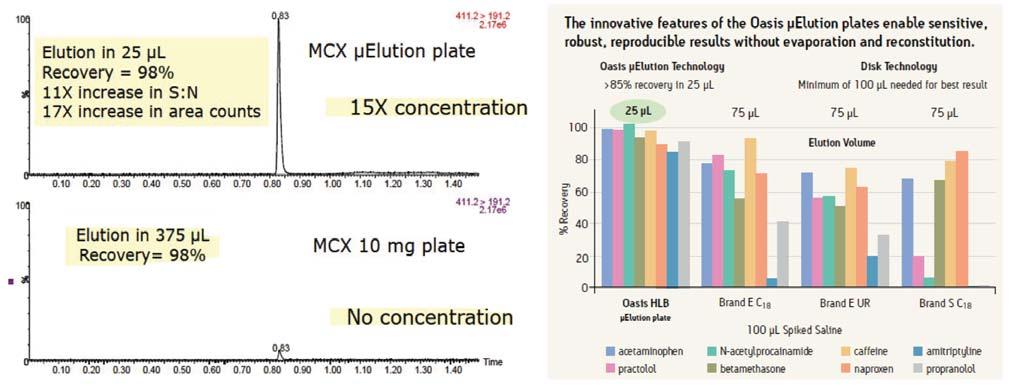
Analyte: Risperidone (Conc. 0.5 ng/mL)
Sample prep: 375 μ L sample diluted with 375 μL 4% H3PO4 loaded into Oasis® MCX μ Elution plate
Observations: Significant increase in S:N and area counts. This makes the peak easier to identify and provides more robustness in this method b. This could be a great improvement when developing a method to boost confidence.
Qualitycompliance and qualitysupports
Waters has made sample preparation easier with the reduction of condition and equilibration steps and enhanced phospholipid removal. The Oasis polymeric range of sorbents, with the three-step approach, is the easiest and cleanest sample prep approach. The advantage to our customers is that we control the quality and we understand the science behind the materials we are creating. This allows us to quickly create chemistries for specific application spaces as well as drive innovation and create new types of particles with specific chromatographic attributes. Many manufacturers outsource the sorbents used in the packing of SPE devices. This affects their quality, enduse reproducibility, product availability and delivery timelines.
Summary
The Oasis family of sample extraction products is designed to simplify and improve your

Typical Load: 250-1000 μLof undiluted sample
Minimum elution volume: Typical 200 μL
Larger hold up volume
Evaporation and reconstitution necessaryfor concentration
25-375 μLof undiluted sample (50-700 μLof diluted sample)
Minimum elution volume: 25 μL
Small hold up volume in achieving lowelution volumes
Evaporation and reconstitution mostlynot required
Results of sample enrichment
The journeyof Waters Oasis familySPE devices
sample preparation. The Oasis® μ Elution technology functions more like a chromatography column and enhances the capture of target analytes. It also helps to prevent breakthrough during the load and wash steps. μ Elution Sorbent 96-well plates are compatible with most liquidhandling robotic systems for automated, high throughput SPE. All Waters Oasis 96-well plates and μ Elution plates
meet the American National Standards Institute (ANSI) standards.
◆ Oasis μ Elution sorbent selection method development plates facilitated fast SPE sorbent screening for small molecule bioanalysis
◆ Oasis μElution Peptide Separation Technology (PST) method development plates facilitated fast SPE sorbent screening for peptide bioanalysis
References
1. Waters Literaturebrochures, infographics, technical documents, web assets etc.
2. Oasis® μElution Plate by Waters-Product special feature in Select Science
3. Progress in pharmaceutical and Biomedical analysis
4. Highly Versatile CloudBased Automation Solution for the Remote Design and Execution of Experiment
Protocols during the COVID-19 Pandemic; SLAS technology 1-13 (2020) Sage Pub
5. Highly Versatile Cloud-Based Automation Solution for the Remote Design and Execution of Experiment Protocols during the COVID-19 Pandemic
For furthermore information, please contact chemistry_india@waters.com
CURRENTLY,THERE ARE TWO TECHNOLOGIES (DISC VS μELUTION) TO MINIMISE THE ELUTION VOLUME FOR SPE
Traditional Macro Well plate μElution Well Plate
Recoverycomparison of uElution Vs.Disc technology
CROs have evolved into strategic partners to ensure high-quality bio-analytical methods for drug discovery,toxicology studies and clinical trials
October 2022 EXPRESS PHARMA 61
PULSE
Gandhi Automations’s DockLevelers
Gandhi Automations’s widely recognised position has been achieved over years of hard work, innovation, commitment to quality and reliable customer service. The company is also proud to be certified to ISO 9001 : 2015, ISO 14001 : 2015 & ISO 45001 : 2018.
Since its inception in 1996, we have been manufacturing, importing, distributing and installing products that are problem-free and easy to operate.
The company offers complete logistics solutions by providing Dock Levelers, Dock Shelters, Sectional Overhead Doors and Dock Houses.
Electro-hydraulic Dock Levelers offered by Gandhi Automations are not only “a bridge for connecting a vehicle,” but also facilitate fast, smooth and safe transition by compensating the difference in heights between the loading bay and the vehicle.

This contributes to minimising energy used and savings on heating and chilling costs resulting in maintaining the quality of the transported goods. Dock Levelers offered by Gandhi Automations are designed as per EN 1398 standard for the most demanding loading and unloading operations.
Efficient loading and unloading the goods
The importance of efficiently loading the goods has always been evident, and it has increased over the years, essentially for two reasons: the lesser availability and the higher cost of manpower. Consequently, lesser qualified manpower is being utilised which leads to damage to the goods.
The cost of loading and unloading the goods can be calculated precisely and is exactly definable, which allows for a scientific approach to find out the investment that goes into the process. Gandhi Automations has always designed solutions based on such scientific approach and feedback from clients. The Dock Levelers of-
fered by the company ensure loading and unloading with lesser effort and minimal cost.
It is possible to load and unload your products in a safe way and in the process, obtain remarkable energy savings. The Dock Leveler remains with the Loading Bay in the rest position and the Sectional Overhead Door closed, until the vehicle is positioned. The driver drives back centring to the Dock Shelter and stops the vehicle the moment it gets in contact with the bumpers.
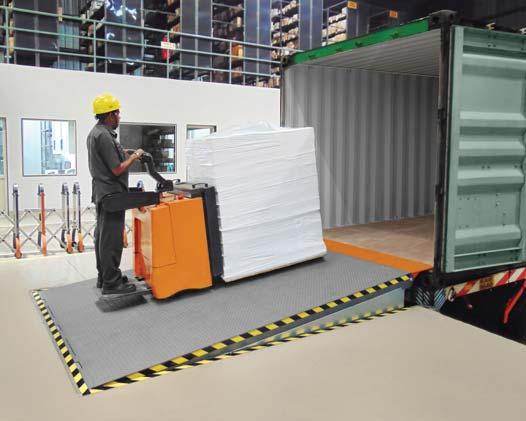
The Sectional Overhead Door is then opened only when the vehicle is positioned, brakes are applied and engine is shut off. This eliminates the exit of hot air, intake of cold air (or the opposite in hot area and inside conditioned places) and intake of

ing Lip-Hinge System does not retain dust and dirt which allows a smooth operation.
b) Telescopic Lip Dock Levelers: Telescopic Lip Dock Levelers are ideal for connecting vehicles unable to drive near dock, i.e. sea containers, side loading railway wagons, etc. These Dock Levelers can be supplied with a lip extending up to 1 m.
c) Edge-of-Dock Levelers: Edge-of-Dock Leveler is developed in compliance with the latest European safety standard, EN 1398. It has a capacity of 6,000 kg and is suitable for use with all types of material-handling equipment.
d) Forklift Roll-Off Barrier Lip Dock Levelers: The newly introduced product Forklift RollOff Barrier Lip Dock Leveler adds a run-off protection which
exhausting gases in the warehouse. After the Sectional Overhead Door opens, the lip of the Dock Leveler connects to the truck bed for loading/unloading to take place.
At the end of the loading/unloading, the Dock Leveler is put in the rest position and the Sectional Overhead Door is closed, without moving the vehicle. The vehicle then departs at the end of the process. Following are the types of Dock Levelers
a) Radius Lip Dock Levelers: Radius Lip Dock Levelers are available in multiple sizes and capacities. It allows the dock to connect with the truck bed, thus making it convenient to drive directly on and off with forklift trucks, etc. Also, the Self-Clean-
prevents accidental forklift rolloff when the Ovehead door is open and no trailer is stationed at the dock. These dock levelers are designed and built to provide all the benefits of the hydraulic dock leveler along with the additional benefit of providing a formidable barrier. Gandhi Automation’s Dock Levelers are equipped with the most secure safety devices and accessories.
For further details, contact: Gandhi Automations Pvt Ltd Chawda Commercial Centre Link Road, Malad (W) Mumbai – 400064, India
Off : +91 22 66720200 / 66720300
Fax: +91 22 66720201
Email: sales@geapl.co.in Website: www.geapl.co.in
The company offers complete logistics solutions by providing Dock Levelers,Dock Shelters, Sectional Overhead Doors and Dock Houses
The importance of efficiently loading the goods has always been evident,and it has increased over the years, essentially for two reasons: the lesser availability and the higher cost of manpower
EXPRESS PHARMA October 2022 62 PHARMA
DaVinci is an automatic hand-operated self-refilling pipette syringe designed for continuous repetitive dispensing at the laboratory. The inert liquid path ensures that there is no component contamination to the liquid and comes with a calibration certificate. The syringe with the integrated valve system proves to be an excellent solution for accurate delivery of repetitive fixed doses without any errors during use. The comfortable grip and ergonomic design ensure fatigue-free working during serial precision dosing. The fast and reliable volume selection ensures highly accurate dosing. The robust construction makes it easily autoclavable. The Luer lock nozzle is made as per universal specs and ensures fitment of any laboratory needle (reusable or disposable). The syringe comes with a one-year warranty from manufacturing defects.
The liquid path consists of borosilicate glass, SS 304, NiCr-plated brass, FPM, PTFE and silicone.
Features :
◆ Plunger tightness without O ring: Hence, no contamination when it comes in contact with drug/liquid. The smooth plunger travel and tightness is achieved through the highprecision stainless steel plunger and grounded glass barrel. No O-ring to mess with or replace ever.
◆ Simple and natural movements: The activation of the DaVinci self refilling syringe is performed with limited effort for efficient work even during long dispensing series. This ensures complete user comfort.
◆ Fast and reliable volume selection: Volume is set
within seconds. It will not vary while activating the syringe, thanks to the safetylocking nut on the micro-metric screw. Dose-by-dose reproducibility is excellent.
◆ Glass barrel and SS plunger
– Insert ensures long life.
◆ Clear visibility of dose and fully autoclavable. Sterilisation possible while fully assembled in boiling water or in autoclave at 121C (250F).
◆ No need of servicing with silicon oil – same effortless movement is ensured every time.
◆ Liquid path 100 per cent inert.
◆ Long-lasting and low maintenance: The DaVinci syringes are made of only six main parts, which are easy to disassemble and reassemble.
The fast access to all elements allows rapid and efficient cleaning. Spare parts are available at reasonable cost.
◆ Light weight and easy to use.
◆ Fast and reliable volume selection.
◆ Packed individually in a convenient attractive box, along with instruction manual.
◆ Calibration certificate provided with each syringe.
◆ High-quality construction: All components are made of superior-quality raw material which are thoroughly checked by our qualified QC department prior to production. Each component is made from superior-quality material, including glass, plastics, metals, etc. These are thoroughly checked during each stage of manufacturing for quality and specification.
◆ Economical and low replacement cost: Only the glass part will have to be changed instead of buying a new device. Truly an unbeatable price to quality ratio product.
The DaVinci syringe comes in five sizes – 0.5ml, 1ml, 2ml, 5ml and 10ml. Dispensing ranges are 0.1-0.5ml, 0.1ml-1ml, 0.1ml-2ml, 0.25ml5ml and 1ml-10ml.
The DaVinci syringes come in three styles
◆ DaVinci Feed Tube Set: This model comes with accessories that facilitates repetitive dosing from bottles or jars using feed tubes, sinker valve, feed cannula, etc. The sinker valve ensures it reaches and stays at the bottom of the jar during the time of usage. This would ensure that the entire liquid in the jar would be used making iy highly effective. The model is compatible for use with aqueous, oily, viscous or heavy iron solutions as well as a variety of suspensions using special viscous spring.
◆
DaVinci Vial Holder Set:
This model consists of a vial holder, integrated vented needle, locking ring and bottle lock. This ‘Vial Holder’ model is used to draw liquid out of the original liquid manufacturer’s vial. The vial holder body is at an optimal angle. The locking ring on the vial
ensures the vial does not get disengaged from the vial holder body. The integrated vented needle ensures smooth operation of the dosing. The detachable slant vial holder body fits standard vials of neck diameter of 20mm. The safety-locking nut ensures reliable and highly accurate repetitive pre-fixed dose dispensing.
◆ DaVinci Bottle Mounted se: This model consists of a 60ml detachable threaded polypropylene vial with an airtight lid. Large open mouth of the reagent reservoir/ container ensures easy repeat filling of liquid without any wastage of time. The dribble valve inside the container allows smooth flow of liquid to the injector without any error.
Recommended applications
Reagent distribution
Hot agar
Sterile work
Filling of well plates
HPLC vial preparation
Small batch injection vials
Best suited for
Distribution of sterile hot agar
Distribution of cell culture media
The DaVinci syringe is manufactured 100 per cent in India by Top Syringe Mfg Co (P) Ltd. We are fully committed to supporting you with our full product range, spares and technical assistance.
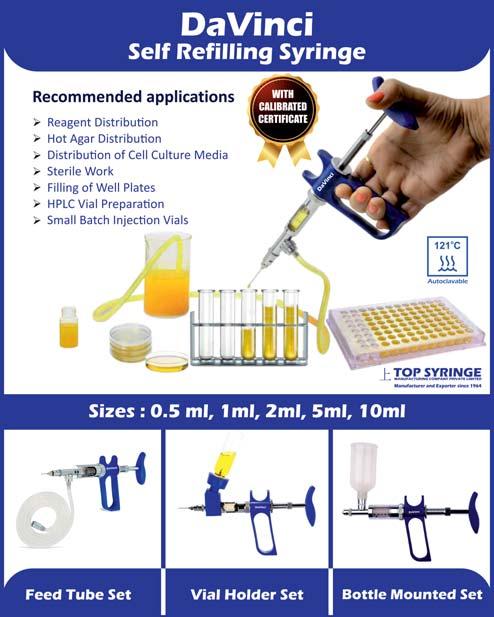
Top Syringe Mfg Co (P) Ltd
Top Syringe Compound, 118-A CTS No 2513, Western Express Highway, Near Pandurangwadi, Mira Rd (E), Thane - 401 104 Telephone: 91.9769175036 Email: sales@topsyringe.com Website: www.topsyringe.com
October 2022 EXPRESS PHARMA 63 PHARMA PULSE
◆
◆
◆
◆
◆
◆
◆
◆
DaVinci – Calibrated syringe pipettes for repetitive laboratorydosing The syringe with the integrated valve system proves to be an excellent solution for accurate delivery of repetitive fixed doses without any errors during use The DaVinci syringe comes in five sizes – 0.5ml,1ml,2ml,5ml and 10ml
Hydrocolloids are high molecular weight hydrophilic polymers (usually proteins and polysaccharides chemically), which contain polar or charged functional groups, rendering them soluble in water. They are produced or extracted from various sources, such as plants (trees, seeds, tubers and pulses), animals (milk, meat, animal by-products) and microorganisms (bacteria, fungi and yeast), etc. A few examples include locust bean gum, carrageenan, pectin, starch (plant), chitosan (animal), xanthan gum (microbial fermentation), carboxymethyl cellulose, hypromellose, methylcellulose, alginates (chemical modification of natural polysaccharides) and many more. [1] [2]
Chemically, hydrocolloids generally consist of many hydroxyl groups and polyelectrolytes, which make them hydrophilic in nature. They are incorporated into food formulations mainly to control rheology and structure. In aqueous environments, hydrocolloids swell, increasing their hydrodynamic volume, thereby increasing the viscosity of the system. In addition, if the hydrocolloids entrain sufficient water due to their concentration, their chains will interact, yielding a gelled network. These gels can be produced at high concentrations of polymer, or by reducing the solvent quality (i.e., alteration of pH or ionic strength). For example, addition of sufficient calcium ions to a liquid sodium or potassium alginate solution yields a gel. Due to their swelling behaviour, hydrocolloids are required only in low concentrations to confer the desired effect. [1] [2]
They are used in a variety of industries to perform a number of functions, including: ◆ thickening,
Alginates – Natural versatile hydrocolloids
◆ gelling and binding, ◆ coating, ◆ syneresis control, ◆ stabilisation of foams, ◆ emulsions and dispersions/ suspensions, ◆ stabilisation of pH, ◆ enhancement of heat resistance, ◆ improvement of salt tolerance, ◆ control release formulations and many more. [3]
JRS offers a range of hydrocolloids, useful in solid, liquid, semi-solid products for pharmaceuticals, nutraceuticals and food applications. The
portfolio consists of:
◆ VIVAPHARM® Alginates (Sodium Alginate/Calcium Alginate/Alginic acid)
◆ VIVAPHARM® HPMC (Hypromellose 2910)
◆ VIVAPHARM® Pectin (Pectins)
◆ VIVAPUR® MCG (Microcrystalline Cellulose Gel) [5]
VIVAPHARM® alginates are linear polysaccharides consisting blocks of guluronic acid and mannuronic acid. [5]
They are derived from a rich field of brown algae (a type of seaweed) off the French coast. [4] As mentioned above, the range consists of –
◆ Sodium Alginate
◆ Calcium Alginate
◆ Alginic acid

Typical properties and benefits
Natural
◆ Extracted from sustainable harvested seaweed/no animal origin/vegan
◆ During manufacturing process, no solvent or alcohol is used
◆ No allergens
◆ Clean label-friendly
◆ Recognised as GRAS [4]
Solubility
Solubility behaviour is the most important aspect for most functionalities of hydrocolloids. Considering that, sodium and potassium salts are water-soluble, whereas calcium salt and acid are insoluble. [4] The table below elaborates their solubility pro-
system of Sodium Alginates. [4] This gives uniform batch results of viscosity, gel strength, consistency and texture to food and pharma products.
Thermostable and water-insoluble gels
Gels made with Alginates exhibit improved heat and moisture stability. This results into less or no melting and no sticking of the final product in hot climatic conditions, e.g. maintains capsule integrity. [4]
Hemostasis
When Calcium Alginate dressing comes into contact with wound exudate, there is an exchange between the calcium ions in Alginate and the sodium ion in blood or exu-
Applications
Owing to these unique and versatile properties and benefits we can impart to various food products and pharma formulations, Alginates are widely used and generally regarded as non-toxic and nonirritant excipient. Pharma and medical applications are discussed in this section.
Medical wound dressing
Calcium Alginate is useful in this application due to hemostasis properties and benefits stated in the previous section. It can absorb 15-20 times of their own weight of wound exudates. Dressing with calcium Alginate provides moist environment to the affected area and is easy to remove. [4]
Dental care
Precise gelation and control over consistency makes sodium alginate suitable for dental impression and dental gel preparations. [4]
Anti-refluxraft barrier
file in more detail –Gelation via ion-exchange
In the liquid, semi-solid or textured products, Sodium Alginate helps through gelling without applying any temperature. Infusion of calcium chloride or other suitable calcium ion source leads to ionexchange between calcium and sodium, which results into gelation. [4] This is beneficial to products and actives where higher temperatures may prove detrimental.
Precise control on gelling
The gel-setting time and its consistency can be precisely controlled by adjusting the rate of addition and concentration of calcium ion into the liquid
date, resulting in swelling of Alginate fibers and formation of a gel. This leads to hemostasis and subsequent healing. Other properties like biodegradable, biocompatible and non-immunogenic make it useful for these applications. [4][8]
Film formation
Alginates are excellent filmforming agents. They give instant gelling for strong, flexible, clear, glossy and consistent film-strips. [4]
Versatile
Its viscosity modifying, gelling and film-forming properties in various conditions make Alginates one of the most versatile polymers. [4]
Alginate-based anti-reflux preparations have been in use for the symptomatic treatment of heartburn for many years. Calcium alginate and Alginic acid gels are used to form protective layers in the stomach. Another element of action of these formulations is the floatation of the gel layers in the form of protective raft. When bicarbonates (sodium and/or calcium) and sodium alginate solution come into contact with gastric acid, chemical reaction occurs, and Alginic acid and/or calcium alginate (insoluble gel layer) is generated respectively along with carbon dioxide. Floatation is achieved by embedding carbon dioxide bubbles in the gel layer.
Thickener/suspending agent
Alginates modify
of
EXPRESS PHARMA October 2022 64 PHARMA PULSE
[4] [6] [8]
viscosities
aqueous systems. This can be VIVAPHARM®
JRS offers a range of hydrocolloids,useful in solid,liquid,semi-solid products for pharmaceuticals, nutraceuticals and food applications Image 1: Manufacturing process of VIVAPHARM® Alginates [4] Table 1: Solubilityof VIVAPHARM® Alginates [4] Sodium Alginate Calcium Alginate Alginic acid Solubilityin cold water ✓ × × Solubilityin hot water ✓ × × Gel forming with calcium ✓ × × Swells in cold water × ✓ ✓
PHARMA PULSE
effectively applied to oral solutions and dispersions to provide structure and/or retard sedimentation of suspended particles. Alginates are widely used as a thickening and suspending agent in a variety of pastes, creams and gels, and as a stabilising agent for oil-in-water emulsions. [5] [8]
Film-former
With sodium alginates, films with oil-barrier properties, anti-sticking and protective coatings can be prepared. This is quite useful when usage of conventional film-formers are restricted. [4]
Binder
Due to polymeric structure, alginates can be used as a binder in granulation techniques. [5]
Controlled-release polymer
Alginate matrices are highly suited for modified/controlled release of highly acid-soluble drugs. At low pH in stomach, it forms an insoluble gel layer that acts as a functional diffusion barrier, which limits the release of the API. In the intestine, it turns to sodium salt due to higher pH. It behaves as soluble viscous layer, which releases API by diffusion and erosion. [4] [7] [8]
Disintegrant
The solubility profile of calcium alginate and Alginic acid show


that they do not get dissolved, but swell in cold water. This property makes them suitable to be used as disintegrants in oral solid formulations. [4] [8]
Enteric polymer
Being anionic in nature and exhibiting pH-dependent solubility profile, sodium alginate can be explored as an enteric polymer for tablets and capsules. [4] [8]
JRS offerings of grades under VIVAPHARM® Alginates
Multiple grades are available under VIVAPHARM® Alginates umbrella, which consist of Alginic acid, Calcium alginate and Sodium alginate. A
tracted from brown seaweed. Their different solubility profiles make them suitable for various applications in food, medical and pharmaceuticals.
References
[1] O’Sullivan, J.J. and O’ Mahony, J.A.; Food Ingredients, School of Food and Nutritional Sciences, University College Cork, Cork, Ireland (2016).
[2] Gawai, K.M., Mudgal S.P., Prajapati J.B.; Chapter-3, Stabilizers, colorants, and exopolysaccharides in yogurt; Yogurt in Health and Disease Prevention (2017).
[3] McArdle R. and Hamill R.; Utilisation of hydrocolloids in processed meat systems; Teagasc Food Research Centre, Ireland and J. P. Kerry, University College Cork, Ireland (2011).
VIVAPHARM® Alginates are linear polysaccharides consisting blocks of guluronic acid and mannuronic acid. [5] They are derived from a rich field of brown algae (a type of seaweed) off the French coast
short summary is given below Table 2
Summary
VIVAPHARM® Alginates consist of Alginic acid, Calcium alginate and Sodium alginates. They are of natural origin ex-
[4] VIVAPHARM® AlginatesJRS Pharma (https://www.jrspharma.com/p harma_en/technicalinfo/brochures/brochures/vivapharm-alginates.php)
[5] JRS Hydrocolloids - Innovations based on renewable re-
sources (jrspharma.com) (https://www.jrspharma.com/p harmawAssets/docs/brochures/brochu re-hydrocolloid-gb-210216web.pdf)
[6] The Use of Alginates in AntiReflux Suspensions - JRS Pharma (https://www.jrspharma.com/p harma_en/technicalinfo/brochures/technicalinfo/technical-information-alginate-anti-reflux.php)
[7] Technical Info Sodium Alginate Extended Release- JRS Pharma (https://www.jrspharma.com/p harma_en/technicalinfo/brochures/technicalinfo/technical-info-sodium-alginate-extended-release.php)
[8] Sheskey, P.J., Cook, W.G., Cable. C.G. (2017) Handbook of Pharmaceutical Excipients, 8th edition, Pharmaceutical Press.
AUTHOR Krishnakumar Patel Technical Services – Pharma Rettenmaier India Private Limited Krishna.Patel@jrsindia.com

October 2022 EXPRESS PHARMA 65
Image 2: Alginic acid raft formation [6] Image 3: Calcium Alginate raft formation [6] Chemistry Grade Viscosity(mPaS) Application(s) Alginic acid VIVAPHARM® Alginic Acid PH 060 NA Disintegrant Calcium Alginate VIVAPHARM® Alginate PH 460 NA Disintegrant VIVAPHARM® Alginate PH 470 S2 NA Disintegrant Sodium Alginate VIVAPHARM® Alginate PHU R5 300 – 700 at 10 % Suspending agent,Anti-refluxraft former VIVAPHARM® Alginate PHU 170 S1 100 – 300 at 2 % Controlled-release polymer VIVAPHARM® Alginate PHU 175 350 – 550 at 1 % Controlled-release polymer Table 2: Various grades of VIVAPHARM® Alginates and related applications
PULSE
Simplifying solvent evaporation for sample prep with next-generation systems
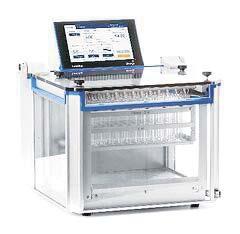

The new TurboVap® 96
Dual allows users to program a method with a simple touchpad, designating variable gas flows, establishing a temperature ramp, and even the distance between the nozzle and the sample is customizable. In the method shown here, a gas flow ramp is used to accelerate the evaporation process.

As the sample dries and gets further from the top of the well plate, increased gas flow is used to maintain a consistent rate of evaporation. Not only are these methods fully optimizable, but they may also be stored so that lab personnel can be certain the same method is applied each time, improving the consistency of results.
Running automated methods also frees up technicians, because they don’t have to manually move the 96-well plates up as the evaporation occurs. This is a huge gain in efficiency when running a high-throughput assay. To have a system that you can simply start and rely on to shut itself off following completion of the method guarantees the samples are seeing the same conditions every time. This is extremely beneficial when users struggle to get back to shut their evaporators off manually. It is nice to see these essential evaporation steps that are common in most sample prep workflows finally benefit from the conveniences of modern technology. Some other improvements are mentioned here.
Let’s face it. You have usually gone through a fair bit of work with your samples prior to the evaporation step, so don’t you want to ensure you don’t lose or damage the sample during the final steps of the process? By understanding the effects of temperature, gas flow, and sample height we can optimize these variables to our benefit to create robust and reproducible
evaporation methods. With the new TurboVap® 96 Dual these experiments are easier to manage with a user-friendly interface, and customizable conditions which can be stored to ensure consistent results are obtained.
One of the hottest, yet most neglected topics in sample preparation is evaporation. Most chromatographic methods require some form of sample cleanup prior to injection into a HPLC or GC system to prevent clogging or undesired interferences. Many users opt to skip evaporation and perform a direct injection of the purified sample, but this is not always feasible.
Often, sample prep includes an evaporation and reconstitu-
tion step that adds time and complexity to the workflow. With new state-of-the-artinstrumentation, evaporation can be done on plates, tubes, or vials in a shorter amount of time, and with minimal intervention. The new generation of nitrogen evaporators, such as theTurboVap® 96 Dual,TurboVap® LVandTurboVap® II from Biotage offer revolutionary performance and a userfriendly interface.
Control of the nitrogen flow and gradient programming are criticalforoptimum evaporation. When beginning the evaporation procedure, it is a good idea to start with a gentle flow, as to not cause cross-contamination of samples. As the evaporation of solvent increases, so does the space above the sample, which can permit an increase of the gas flow through a
programmed method. This approach increases the rate of evaporation. Easily programmed and stored methods allow for automated integration and reproducible performance from day to day.
With older systems, the evaporation process was hard to monitor and determine when complete. Often the user had to pause the evaporation and place their head into the evaporation chamber filled with dangerous fumes. Through advances in design and manufacturing, solvent evaporators are now available with clear tanks and lids allowing the sample evaporation process to be observed from a safe distance. The use of coloured lamps indicates when evaporation is in process, completed, or has encountered an error. The keyword is visibility, and this is a significant benefit for lab personnel.
Most evaporation systems require the purchase of multiple racks to accommodate the range of vessels routinely used in a lab. Newer racks feature adjustable tube holders allowing the use of one rack for multiple vessel sizes. Labs can have fewer racks and save money at the same time. Some racks are even designed to accommodate processing samples on a positive pressure manifold and transferring them directly to the evaporation system, thus eliminating costly sample transfer steps.
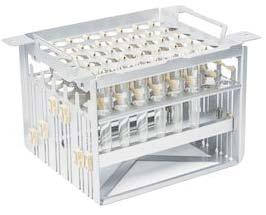
The TurboVap® P+ is a prime example of how samples processed in cartridges can be collected and immediately transferred for efficient evaporation.
Many improvements have been made to solvent evaporators in recent years which aim to improve the workflow for labs performing sample preparation and chromatography. We have found in our lab that the TurboVap® Next Generation Solvent evaporators offer faster, simpler and more efficient evaporation of samples prior to reconstitution and analysis by LC or GC technology.
For further information : please contact india@biotage.com , www.biotage.com
This concept seems simple today,but traditional nitrogen evaporators haven’t been overhauled for many years
Often,sample prep includes an evaporation and reconstitution step that adds time and complexity to the workflow
EXPRESS PHARMA October 2022 66 PHARMA
PULSE
Continuous at-line microbial monitoring for pharma waters
Measuring bioburden in Purified Water (PW) and Water for Injection (WFI) was dependent on time consuming, errorprone culture-based lab methods. At-line microbial detection offers the potential to improve pharma water system operations, reduce costs and ensure water quality.
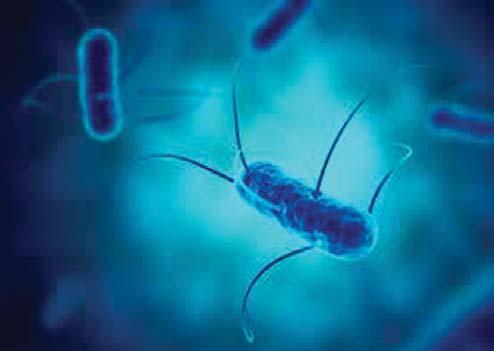
Lower operating costs, reduces risk
The 7000RMS detects microbial presence within seconds after the sample enters the analyser. Measurements are continuously updated providing a real-time profile of your PW or WFI system. This realtime information enables the user to quickly divert contaminated water before it impacts other locations within the water system.
With no reagents, sample preparation, growth media, or incubation time requirements, the 7000RMS offers lower operating costs by reducing or even eliminating the need for routine plate counting. The 7000RMS reduces:
◆ costs associated with plate counting.
◆ costs associated with false positive investigations.
◆ costs associated with delayed release of product while awaiting lab results.
Managing costs and risk
Understanding the microbiological quality of pharma water prior to use and being able to react quickly to out-ofspecification events reduces potential financial loss and regulatory risk.
◆ Water sampling for plate counting is often performed daily to weekly at multiple locations throughout the water system.
◆ Plate count results are not obtained for five-to-seven
days or longer.
◆ Estimates have shown that as much as 80 per cent of posi-
tive results of plate counts are false-positives created by errors in manual, grab sampling.
◆
Costs to investigate these false-positive occurrences can have a significant negative financial impact on operations.
◆
Delays in product release while investigations are conducted can result in lost revenue and added costs.
About Mettler Toledo Mettler Toledo is a leading global manufacturer of precision instruments. The Company is the world’s largest manufacturer and marketer of weighing instruments for use in laboratory, industrial and food retailing applications. The Company also holds top-
three market positions for several related analytical instruments and is a leading provider of automated chemistry systems used in drug and chemical compound discovery and development. In addition, the Company is the world’s largest manufacturer and marketer of metal detection systems used in production and packaging. Additional information about Mettler Toledo is available at www.mt.com.
Visit: www.mt.com
Email: sales.sales@mt.com
Call toll-free: 1800 22 8884 & 1800 1028 460
October 2022 EXPRESS PHARMA 67 PHARMA Mettler Toledo Thornton’s 7000RMS is an at-line analyser for real-time measurement of microbial contamination (bioburden) in pharma water.Laser-based technology enables immediate detection and quantification of micro-organisms directly from the water sample, overcoming limitations of time-consuming growth-based methods
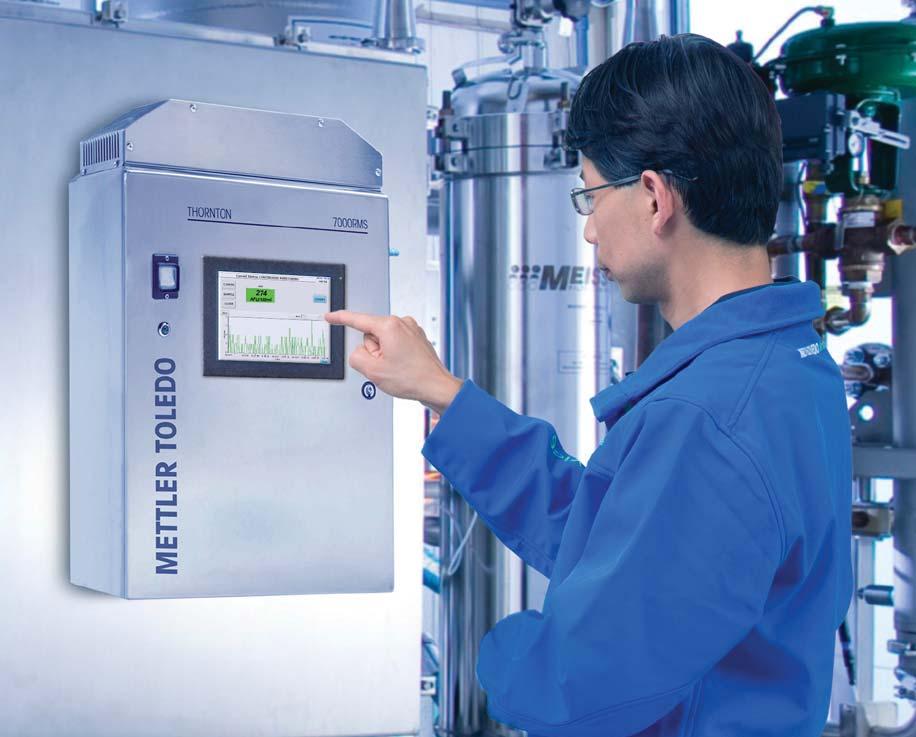
Imaseal®- The sealing solution for pharma,food and engineering industries
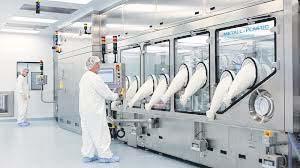
Imaseal®gaskets are made up of advanced-grade silicone rubber which conforms to FDA21 CFR 177.2600 for the
Sealing becomes a prominent aspect when any machine is designed, whether it is to be provided at doors, rings, bowls, etc. However, one cannot move directly to choose solid rubber gaskets as ma-
grade criteria
gaskets was done. These are hollow gaskets having tendency to inflate and deflate on application of air pressure, these are provided with pneumatic nozzles through which air pressure is applied and these gaskets inflate and
maceuticals, beverage, medical, dairy, food, oil, chemical-ceutical industries inflatable gasket are used in fluid bed dryers, isolator doors, cleanroom, etc. Inflatable gaskets are used to prevent
leakages of any gas or liquids from the machine


◆ It works as an inflation pressure in the cavity and also works as cycle tube.
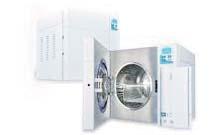
◆ Inflatable gaskets are accurate and withstand with 1
hoses and whole lot range of food grade products on global scale with facility of cleanroom 10000. Our inflatable gasket is registered as Imaseal®. These gaskets are made up of advanced-grade
chine parts experience wear and tear when they are operated for longer duration. In addition, metallic parts are rigid and have tendency to experience small deformation but minute deviation will have huge impact on machine operating condition liable to increase in energy losses, product quantity losses, unfavourable operating condition, etc. Here, adjustable sealing gaskets come into the picture which can adjust through these small deviations and that is why inception of inflatable
provides sealing at various machine parts. These are available in various shapes and sizes according to one’s need and their inflation can be adjusted through application of pressure, but, again, application of pressure depends on withstanding capacity of those gaskets.
They are again modified into fabric reinforced, generally fiber glass, polyester, rayon or metal reinforced to have greater pressure-bearing capacity. Inflatable gaskets find application in wide range of industries like phar-
any leakages of gases and liquids. With its versatility, silicone being food grade and its resistance to high temperatures are preferred over other Material of Construction (MOC), but you can choose depending on your application and processing conditions.
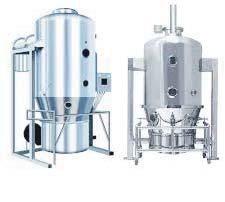
Factors to consider while selecting inflatable seal
◆ Working condition like temperature, pressure and working cycles
◆ Height, width and shape of profile as per the door structure since various shapes and sizes are available

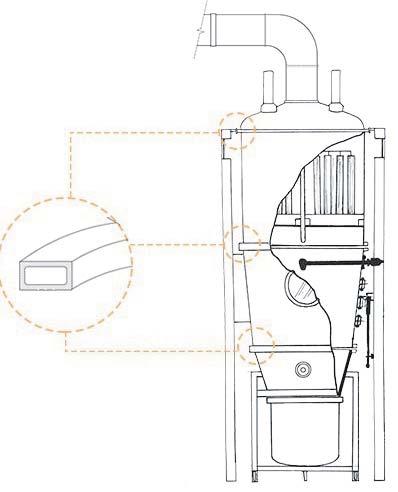
◆ MOC that depends on applications and working conditions
Features of inflatable gasket
◆ It helps to p revent any
to 4.5 kg/cm pressure.
◆ It is used for gripping and lifting object.
◆ It has a good inflation and deflation property at nozzle and joint areas.
Whychoose Ami Polymer Pvt Ltd’s Imaseal®?
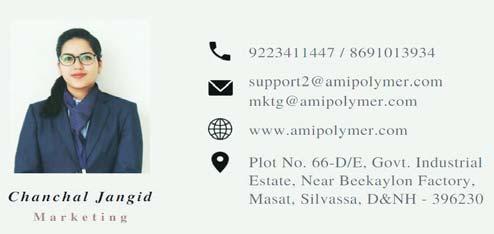
Ami Polymer Pvt Ltd is an eminent player in silicone market with its expertise of 25 years, a home-grown company, which is fulfilling the demands of gaskets, tubing,
silicone rubber which conforms to FDA 21 CFR 177.2600 for the food grade criteria. MOC range available: Silicone, Ethylene Propylene Diene Monomer (EPDM), Neoprene and Thermoplastic.
Ami Polymer Pvt Ltd provides its Imaseal®inflatable gaskets to their major Fluid Bed Dryer Manufacturers Glatt Systems, ACG Pharma, Alliance Machine, Gansons, Anchor Mark, Gea Process, Mark Maker, Sunsai, etc.
R
Applications
Fluid Bed DryerSteriliser Isolators/Glove Box
Rapid Mixer Granulators
FurnacesNuclear Door Seals
EXPRESS PHARMA October 2022 68 PHARMA PULSE
food
Inflatable gasket fitting in FBD machine F
PHARMA PULSE
Virosil
area becomes completely sterile within 60 minutes of spraying without causing any irritation to the eyes,nose and skin - unlike conventionally used formulations
ABSTRACT
In the past years, the pharma and healthcare industry has witnessed tremendous growth and there have been tie-ups with a number of multinationals for production and R&D facilities to be nurtured in India. Organisations are applying for ISO standards and upgrading themselves to the latest norms related to health and hygiene.
Microbial contamination and pollution play a significant role in the pharmaceutical industries. Control of microbes has always been the biggest challenge to these industries. A load of microbes are present in areas such as production, storage/packaging, R&D, Q.A/Q.C., filling etc. They are present everywhere in the air, surface, water, instruments, linens etc.
Hence the disinfectant used should be so precise that it should not only take care of the microbial contamination but also be user and eco-friendly. Virosil Pharma meets all the required standards for the pharmaceutical industry.
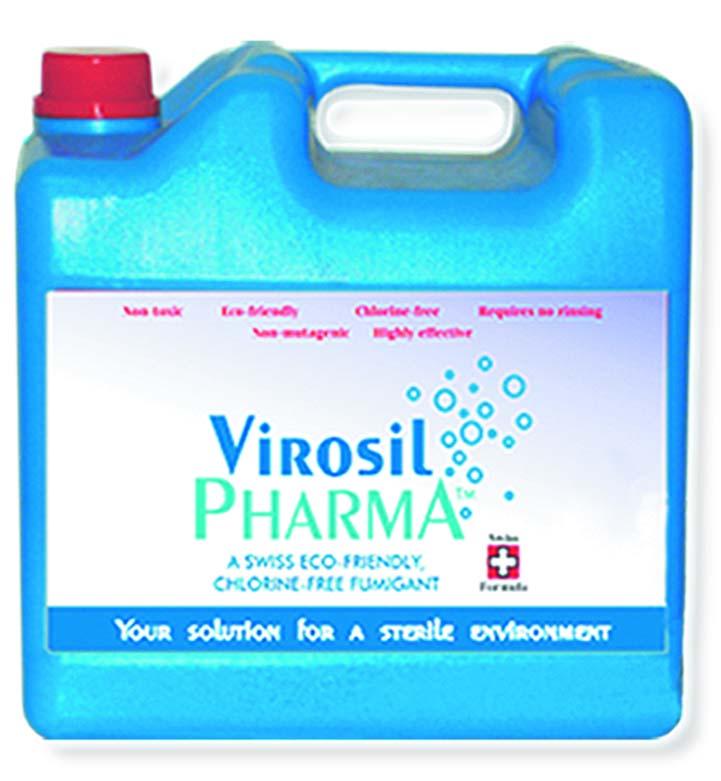
ABOUTUS
Sanosil Biotech, a Mumbaibased company, has launched a range of multipurpose disinfectants which are eco-friendly, chlorine-free and completely biodegradable and have applications in the pharma and healthcare industry as well as in the food processing industry. It is manufactured in India in technical collaboration with SANOSIL AG of Switzerland. SANOSIL AG in Switzerland is the patent holder and has joint venture agreements in more than 15 countries such as France, Italy, Spain, Holland, Norway, South Africa, Australia, Saudi Arabia, Oman, the UAE, etc. The product is being used in various countries by reputed institutions and has been thoroughly tested under
strict regulations imposed by European Health bodies.
PRODUCTDISCRIPTION
Virosil Pharma is a multicomponent fumigant and disinfectant. The oxidizing agent used is hydrogen peroxide, which is bonded with stabilizing agents to form a complex solution. A long-lasting effect is ensured by the addition of silver, which acts as a catalyst in trace amounts. The bactericidal effect of silver is based on the fact that the monovalent silver
ion Ag+ binds very firmly to bacterial proteins by a covalent or co-ordinate bond, and thus inactivates or precipitates these.
◆ Its effectiveness against bacteria, viruses, amoebae, fungi and algae; i.e. its extremely wide range of application makes it easy to handle for the end user; i.e. only one product is needed, where so far 2, 3 or various products were necessary.
◆ Owing to the good stability of the product, a long storage
time can be guaranteed. As the product remains stable at high water/air temperatures, and as its effectiveness is even increased at high temperatures.
ter, because it breaks down into water and oxygen (H2O and O2), i.e. it produces no noxious by-products.
◆
Due to its long-term effectiveness and pronounced characteristics to prevent recontamination, this product is perfectly suited for disinfection of drinking water and wells.
◆ The two basic substances (H2O2 and Ag) enhance their advantages (*synergism). The bactericidal effect comes into action quicker and more intensively than if either substance was used on its own.
Virosil Pharma is ecologically harmless. Its principal constituent - hydrogen peroxide - does not pollute waste wa-
◆
Fumigation with Virosil Pharma,the perfect Salternative to Formalin Fumigation is one of the most
bacteria and fungus present in sterile
October 2022 EXPRESS PHARMA 69
Pharma: Arevolutionary,eco-friendlyfumigant Virosil Pharma has proved to be effective in controlling aerial
rooms.The
ADVANTAGES #Eco- friendly- It is totallybiodegradable since (H2O2) breaks down into water & oxygen #Chlorine free #Non-toxic (no irritation to skin or eyes #No effect on pH #Non carcinogenic and non mutagenic #Excellentlyrinseable with no remains PROPERTIES #Can easilybe dosed # Does not foam # Decomposes into water and oxygen # It is excellentlyrinseable with no remains # Treats anyother material with consideration EU GMP2002 Grade Air sample cfu / cu.m. Settle plates (90mm) cfu / 4 hours Contact plate 55mm cfu / plate Glove print Cfu/glove A < 1 < 1 < 1 < 1 B 10 5 5 5 C 100 50 25 D 200 100 50 WHO 2002 MICROBIALLIMITS Grade Max.no.of microorganisms permitted / m3 A Less than 1 B 5 C 100 D 500 USFDADRAFTGUIDELINES Clean Area Classification Microbial limit Cfu / 10 cu.ft. Microbial limit Cfu / 10 cu.m. 100 < 1a < 3a 1000 < 2 < 7 10,000 < 5 < 18 100,000 <25 <88 a=samplesfromclass100environmentsshouldnormallyyieldno microbiologicalcontaminants
PHARMA PULSE
important factors associated with pharma industries, it plays a vital role in maintaining the sterility of areas and is directly related to production.
Sanosil Biotech is the first company to pioneer the novel concept of eco-friendly fumigation. The company has great respect for human health and the environment. The CEO, Dev Gupta, an MBA from the Bentley Graduate School of Business, Boston, has been actively marketing the brand nationally. According to Gupta, "Virosil Pharma has simplified the lives of so many people who work in the pharmaceutical industry as they are guaranteed sterility with the minimum risk exposure". As there was a high risk to the staff involved in the use of Formaldehyde/Glutraldehyde for sterilization and disinfection.
Owing to the stringent integrated micro contamination control and biosafety requirements, it is desirable to have micro-contamination control procedures and methods that could be monitored, evaluated and assessed periodically, which are convenient, cost-effective and safe.
A glimpse at the standards put down by various would monitoring agencies would help an individual or an organization help decide on choosing the most appropriate control procedure/methods. The important microbial limits which have been prescribed by various agencies is as follows:
To meet those requirements aerial disinfection (fumigation) with formaldehyde was the most convenient method. With the regulatory having restricted the use of formaldehyde and also putting into place the monitoring levels of formaldehyde after fumigation makes it a procedure with its own limitations.
Formaldehyde is a known carcinogen (IARC & NTP). Formalin is toxic by inhalation, toxic if swallowed, may be fatal if swallowed, causes eye burns, may cause blindness, strong sensitizer, causes irritation to skin, eyes, and respiratory tract. Repeated or prolonged exposure increases the cancer risk.
COMPARISON
VIROSILPHARMA
Eco-friendly,Non-toxic
Room gets sterilized within 1 hour after fumigation
Requires no de-fumigation
Person can be present during fumigation
Time Saving
Multiple Applications
Virosil Pharma has been a direct alternative to Formalin Fumigation. Virosil Pharma has proved to be effective in controlling aerial bacteria and fungus present in sterile rooms. The area becomes completely sterile within 60 minutes of spraying without causing any irritation to the eyes, nose and skin - unlike conventionally used formulations. Virosil Pharma can even be successfully used in AHU which are responsible for optimal and steady air exchange in production facility, of which the ducts, air shafts, humidificator, filters, etc. are often contaminated with loads of bacterial and bio-films.
The main aim of Virosil Pharma is to increase productivity by cutting down disinfection time while at the same time providing a totally microbe-free environment.
Virosil Pharma is also very effective in disinfection of all critical surfaces that come in contact with pharma products. There is no requirement to rewash equipment and surfaces disinfected with Virosil Pharma since it is H2O2 based and decomposes into water and oxygen.
Virosil Pharma has been tested by several reputed and renowned institutions in India with respect to its disinfection and fumigation applications in Pharmaceutical Industry
Because of all these factors, Virosil Pharma has attained maximum satisfaction of the customers in controlling the microbial contamination in their respective applications. The introduction of an ecofriendly, non-carcinogenic and totally biodegradable versatile product, like Virosil Pharma,
FORMALIN
Highlytoxic
Requires overnight fumigation
Requires de-fumigation
Causes skin,eye irritation even after next dayof fumigation
Time consuming
Application restricted
AGRAPHICALVIEWON DISINFECTANTEVALUATION DATA- VIROSILPHARMA
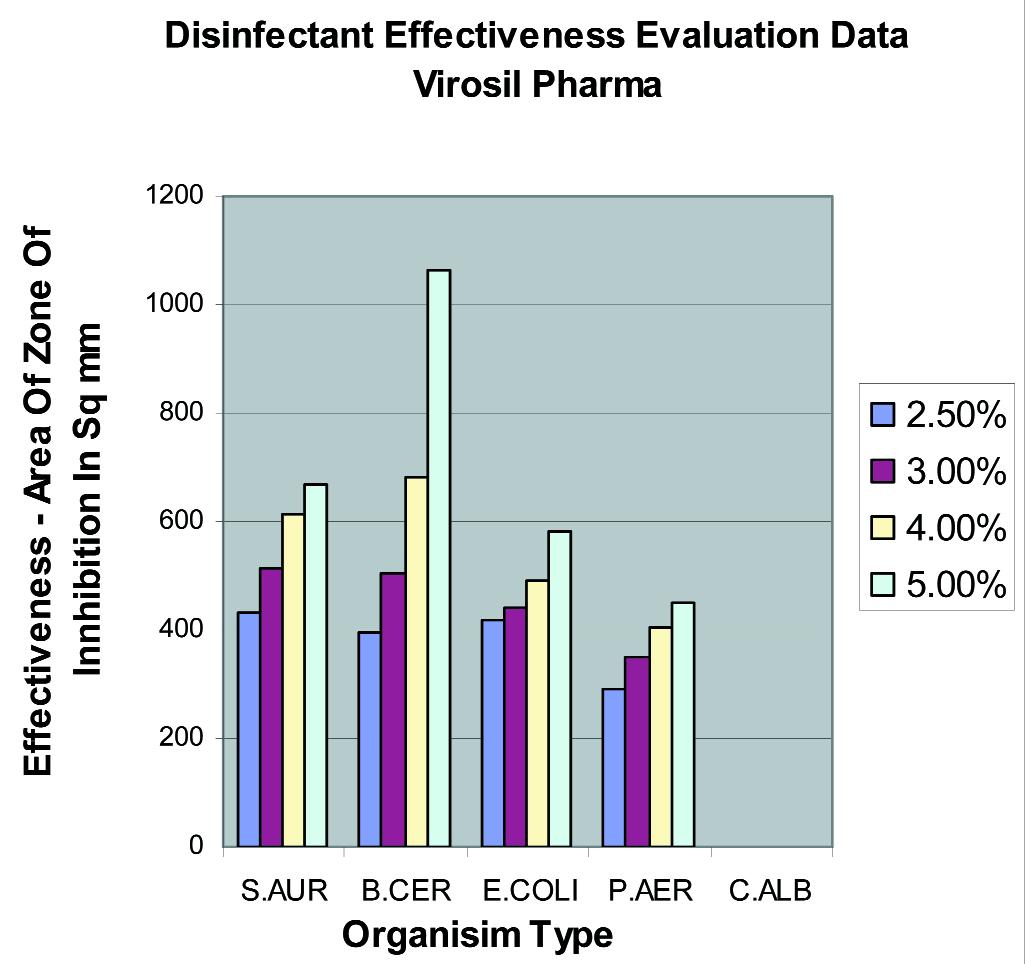
Organism Type
2.50% 429.83 397.4 418.15 289.38
3.00% 514.44 502.4 440.92 349.48
4.00% 615.44 683.14 490.625 404.5 0 5.00% 669.32 1063.07 580.77 452.16 0
has not only brought an end to the era of conventional biocides but has completely solved the disinfection requirements which these healthcare industries were prone to.
Targets
Sanosil Biotech is marketing this disinfectant under the 'Virosil Pharma' brand name and is targeting the entire industrial belt of India. The com-
pany has already set up a distribution and infrastructure network having establishments in Maharashtra, M.P., Hyderabad, Chennai and Delhi.
EXPRESS PHARMA October 2022 70
S.AUR B.CER E.COLI P.AER C.ALB
0
0
PULSE
Complete environmental monitoring solution – testo Saveris Pharma
There are several critical applications in the industry like research and development that demand for continuous and reliable monitoring of important environmental parameters. From medical, bio-technical, chemical and pharma laboratories to cleanrooms, biobanks up to blood and tissue banks, a holistic monitoring system is necessary, which reliably records different measurement parameters in these rooms and at equipment. Wherever there is a need to adhere to necessary standards, ensure traceability and audit compliance, especially pharma, these solutions become crucial in the facility operation.
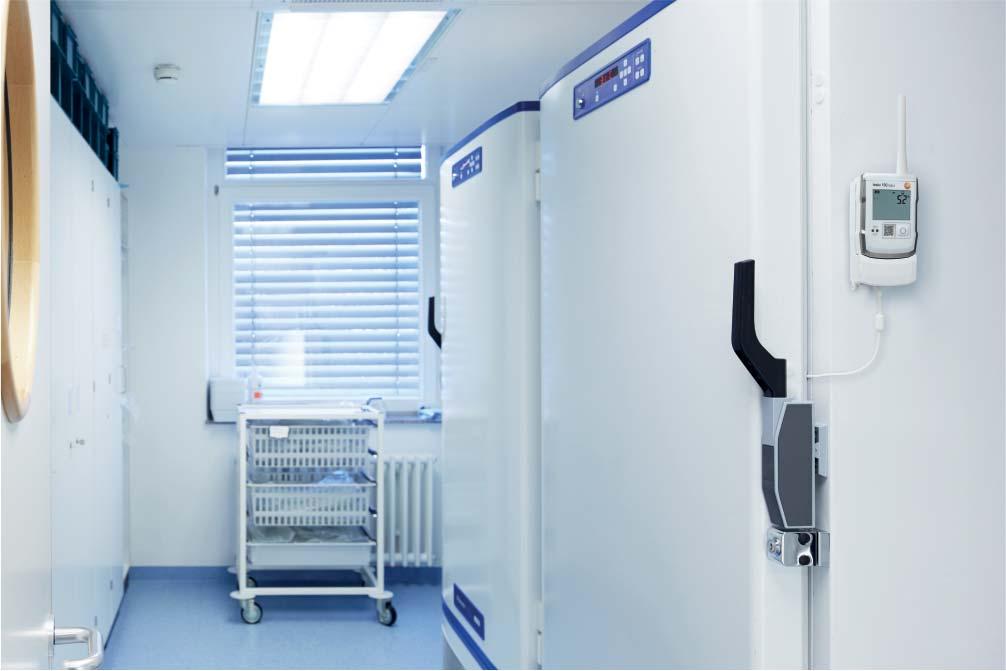
The most efficient way to address this requirement is the implementation of fully automated environmental monitoring system testo Saveris Pharma. It monitors and documents temperature, humidity, differential pressure, and other parameters without interruption, and compliantly with GxP, so that audits and inspections are conducted smoothly. As a complete solution, testo Saveris Pharma combines:

◆ high-precision measurements with secured data communication,
◆ intuitive and pro-validation software, and
◆ comprehensive services.
The system consists of the following components:
Data logger and communication modules
Data loggers are the components that measure/log the data continuously at different locations in the facility. They communicate with the base unit to transfer the recorded data. Since there are numerous tasks to fulfil in research and development, there are various models of data
logger to measure different parameters.
Another important task is
data transfer, and, for that, communication modules are used. Each data logger can be
flexibly connected to one of the three communication modules.
testo Saveris Pharma combines high-precision measurements with secured data communication,intuitive and pro-validation software,and comprehensive services
October 2022 EXPRESS PHARMA 71 PHARMA
◆ WLAN Module ◆ LAN Module ◆ Radio via Testo Ultra range communication Module
PHARMA PULSE
testo UltraRange ensures that a strong and robust radio signal is available even over long distances or in closed rooms. All data loggers can be exactly calibrated, and depending on the model, can record temperature and relative air humidity. As per the applications, Data Loggers are selected for Environment Monitoring for Warehouse, Analytical/Microbiology Lab, Animal house or Equipment Monitoring like Refrigerator, Freezer, Chiller, Walk in chamber, etc.
The base station
The base is literally the heart of testo Saveris Pharma system. It can connect with 1000 different Data Loggers at a time. It collects measurement values and analyse its limit value violation or any other critical event that occurs. It plays an important role in prompt alarm management. The base unit can be positioned centrally at a given facility location or office. Base station delivers alarms to users via an alarm relay and an LTE stick that enables alarms by SMS as well, in addition to visual and audible alarms.
Digital and analog sensors
The instrumentation utilised to measure parameters like temperature and humidity is in the form of variety of digital and analog sensors that are easy to handle and install. The digital sensors have advantage over analog sensors as it can be quickly exchanged during continuing operation for calibration or defect correction. Calibration of digital sensor is independent of its logger. Thus, it ensures no gap in the measurement values or documentation. The measuring ranges of the temperature probes extends from -200 °C to +1300 °C, covering almost any possible scenario in the field of research and development.
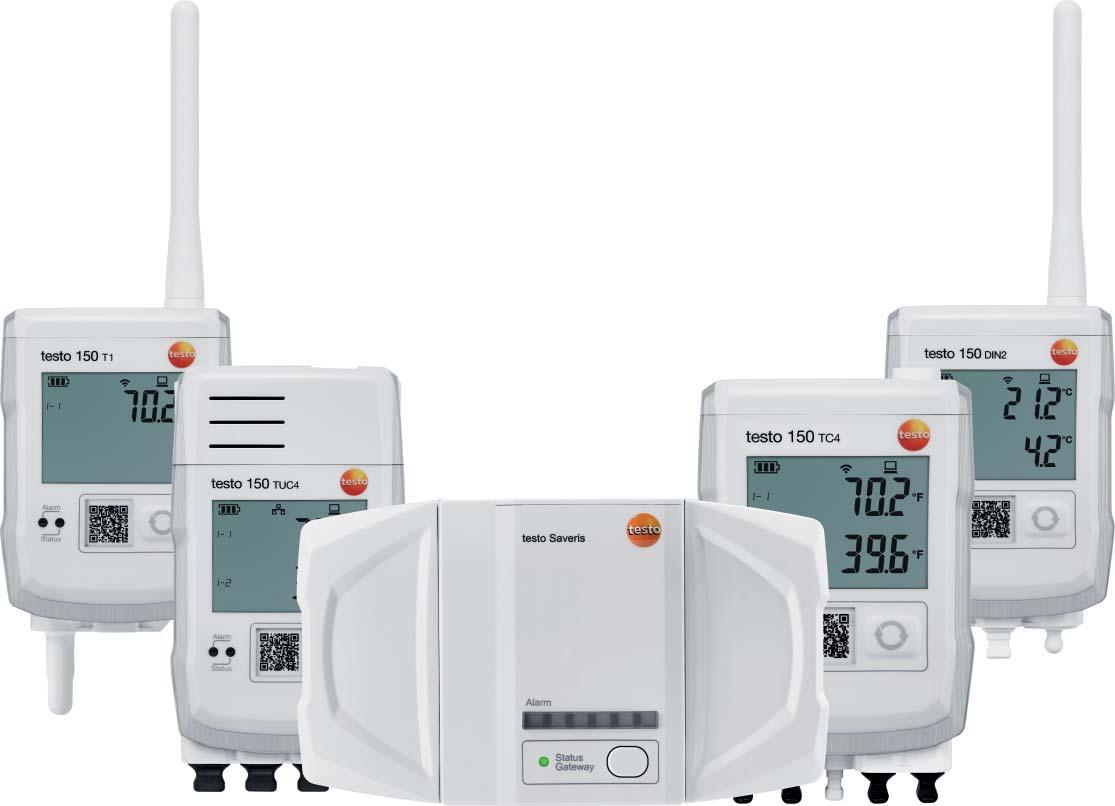
The integration of other measurement parameters such as differential pressure, particles etc. also work smoothly with the analog coupler as a standardised interface.
System software
Once the data is recorded by loggers and analysed by the base station, the testo Saveris Pharma software comes into play where all readings are collated, stored, visualised and backed up seamlessly. Automatic reports are generated and sent over email to the users concerned. Some important features are applied like Electronic Signature, Electronic Record, Access Control, Audit Trail and Alarm Logs. There are two versions of the testo Saveris software: testo Saveris PRO software: It is suitable for the automated
and uninterrupted data monitoring with less stringent regulations, normally other than the pharma industry. testo Saveris CFR software: It guarantees unconditional adherence to US 21 CFR Part 11 as well as Annex 11 of the EU guidelines for GMP. In addition to the range of function of the PRO version, it offers audit trail and electronic signatures.
In addition, we provide web access to the data with testo Saveris Pharma Cockpit - a web-based and intuitive user interface which allows data access from different end devices. Alarms can be identified
and acknowledged via a smartphone, tablet or PC at any time. It also supports features like digital signature post any action as well as a mandatory comment on the event.
Comprehensive services
The most important aspect of any solution is after sales service. This is one of the strongest values offered by Testo to its customers. Testo extends its support from site survey, installation commissioning, IQOQ documentation to annual maintenance work and recalibration. So, all the end-to-end
services are offered under one roof as an OEM by Testo. Thus, users do not have to run from pillar to post to get support. Testo ensures rich userexperience throughout the lifecycle of the system.
Areas of application
◆ Area Monitoring in Labs, Production, Warehouse, Animal House in Pharma
◆ Equipment monitoring for QA/QC, Microbiology in Pharma
◆ Clean room area Monitoring in Pharma
◆ Refrigeration and deepfreezer applications in Pharma
◆ Uninterrupted cold chain monitoring and controlled freezing in blood and bio banks
◆ Applicable for lab equipment from laboratory extractor to water bath
◆ Data centre Area Monitoring
◆ Calibration and Testing Lab area monitoring
For more details, login to www.testo.com or write to info@testo.in
From medical,bio-technical,chemical and pharma laboratories to cleanrooms,biobanks up to blood and tissue banks,a holistic monitoring system is necessary,which reliably records different measurement parameters in these rooms and at equipment
EXPRESS PHARMA October 2022 72



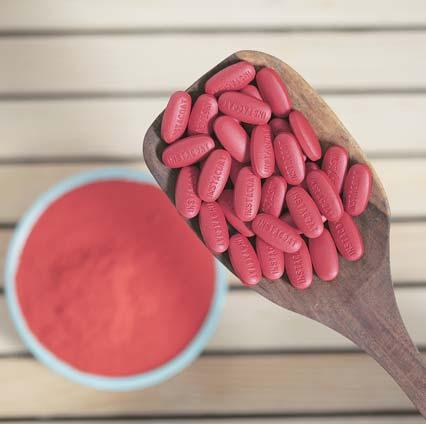


www.idealcures.com +(91)-(22)- 4268 8700 Ideal Cures ‘High Performance Aqueous Film Coating System’ • 50% process time savings when compared with traditional cellulosic coatings • Three fold increase in adhesion properties with optimum finish • Doubled production output with cost and time saving REGD.WITH RNI NO.MAHENG/2005/21398,POSTAL REGD.NO.MCS/164/2022 – 24,PUBLISHED ON 5TH EVERY MONTH, POSTED ON 9TH,10TH,AND 11TH EVERY MONTH POSTED AT MUMBAI PATRIKA CHANNEL SORTING OFFICE,MUMBAI – 400001



